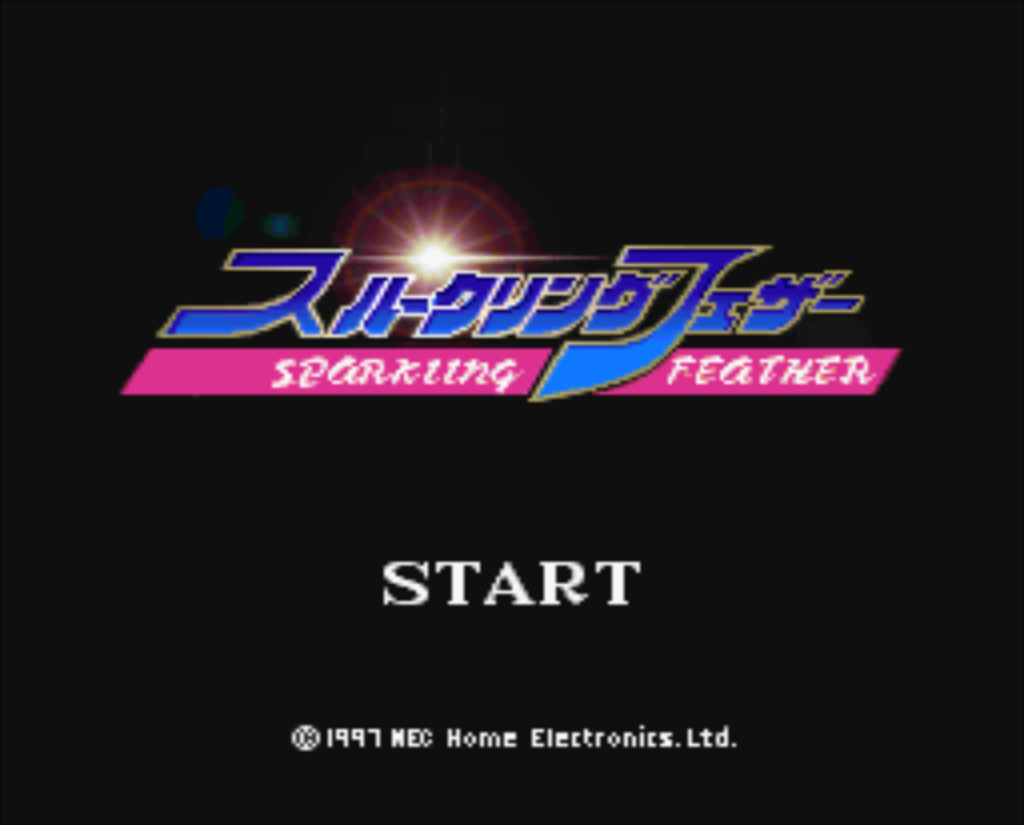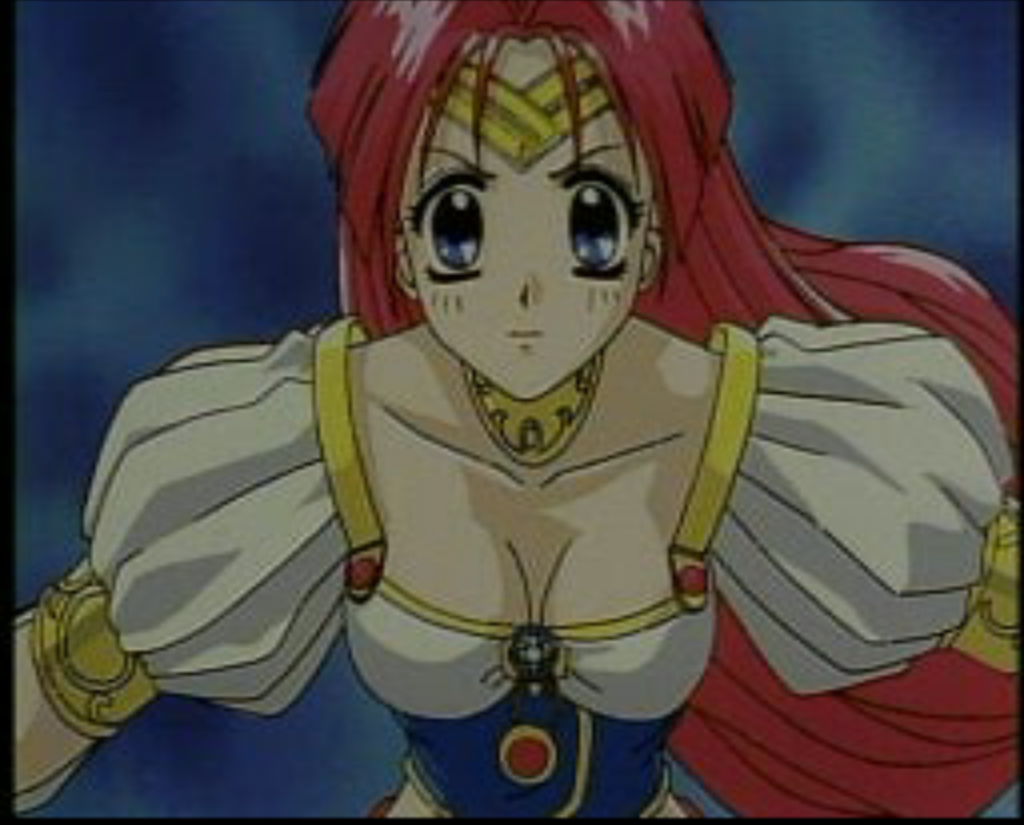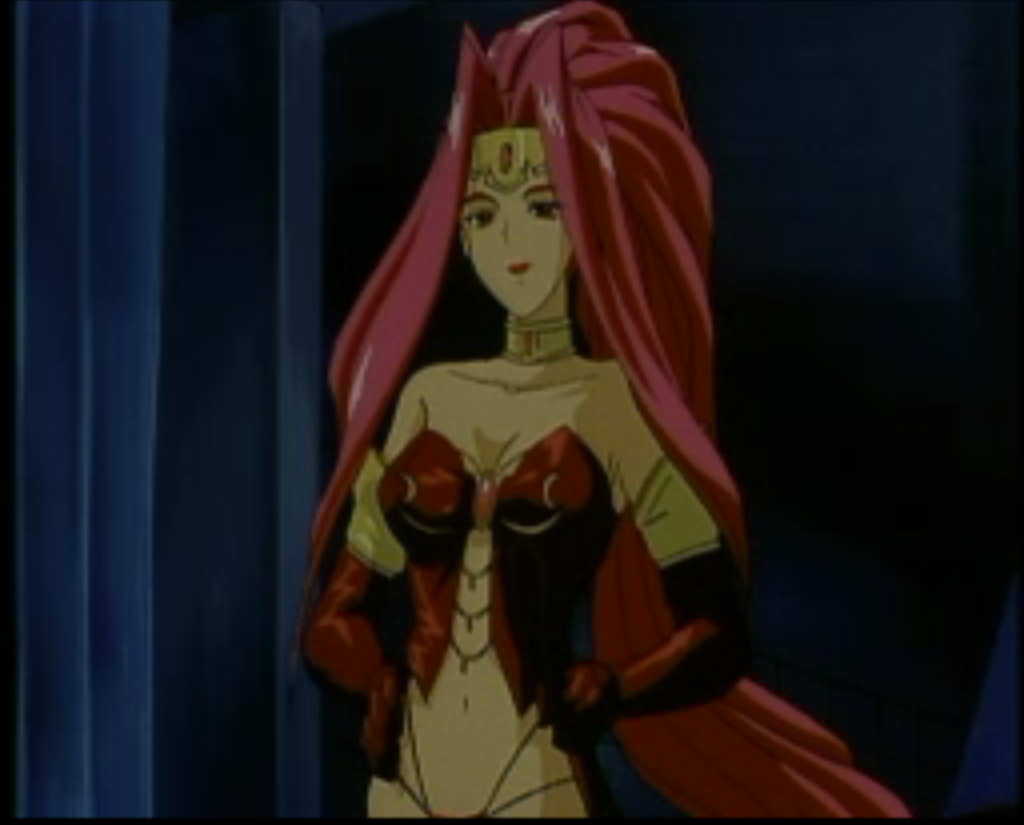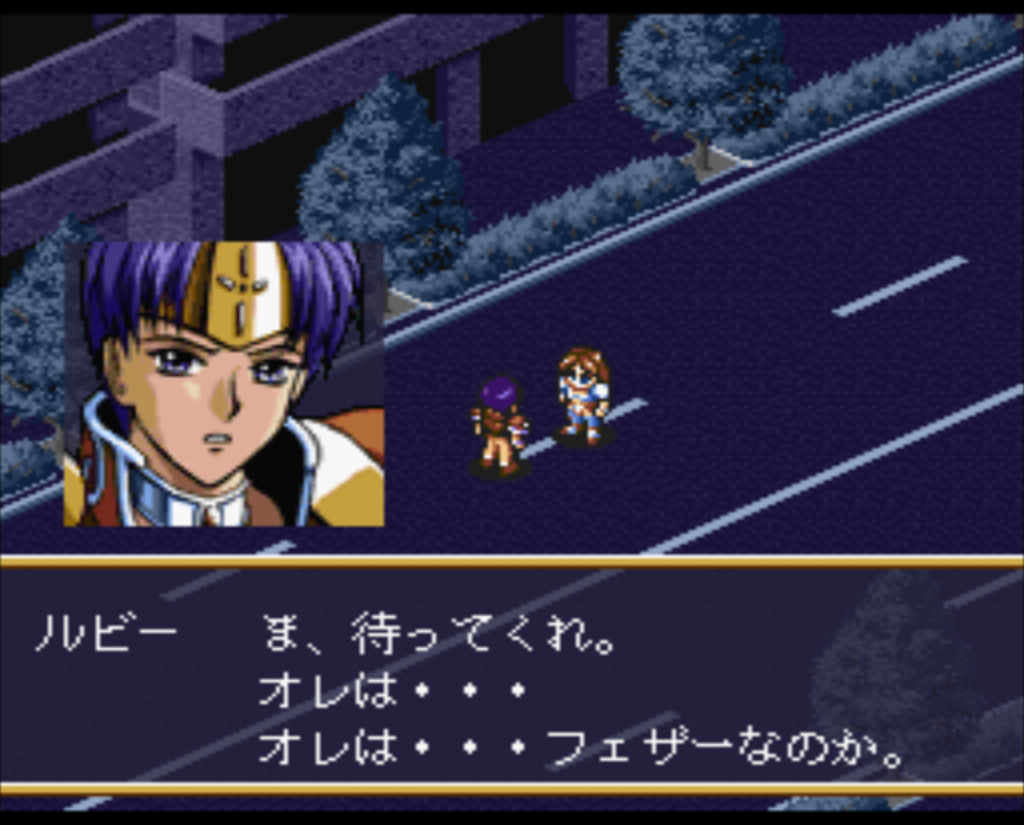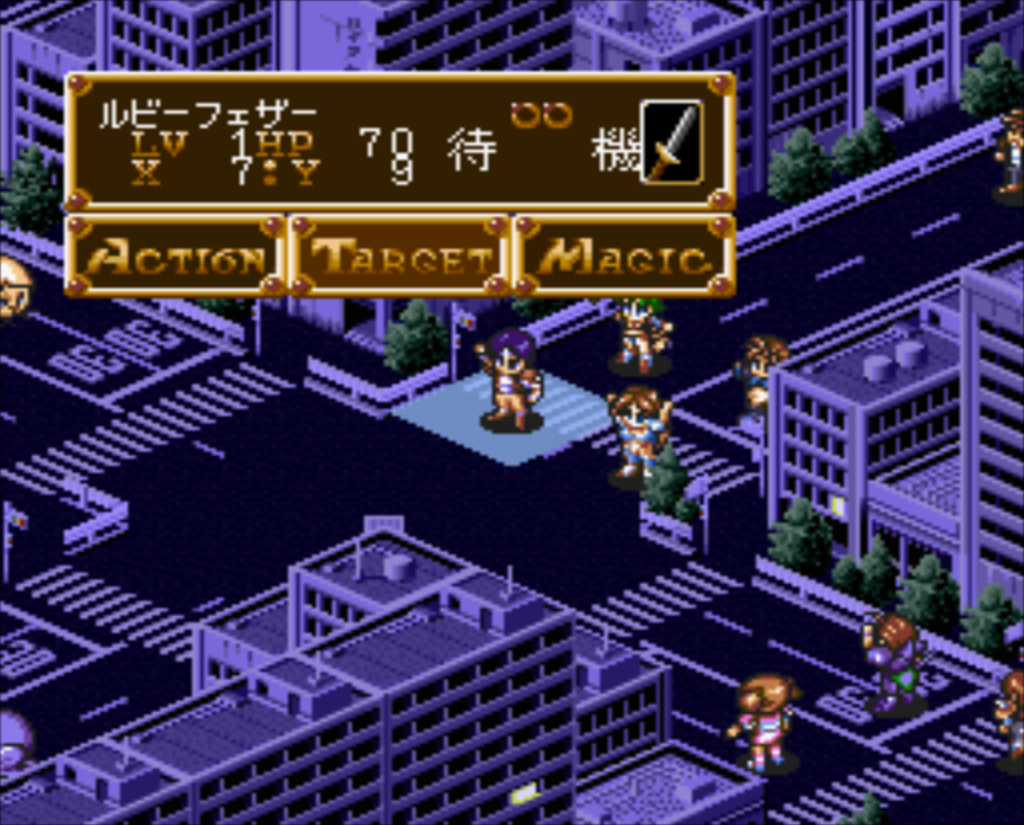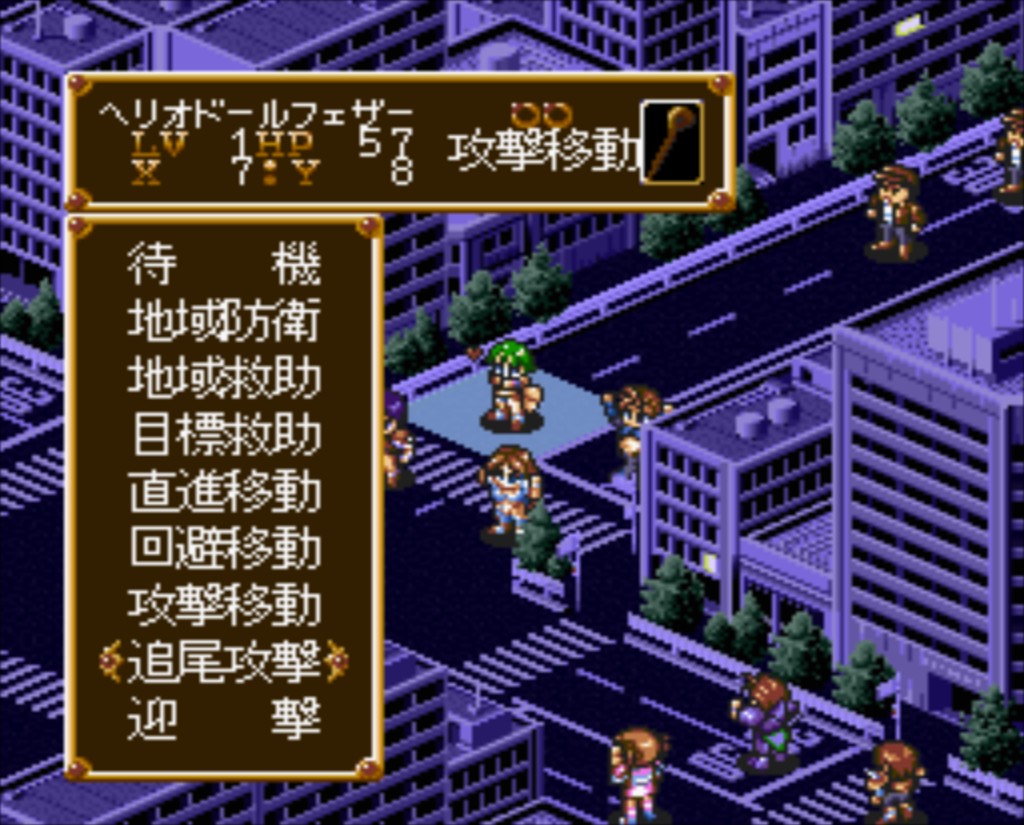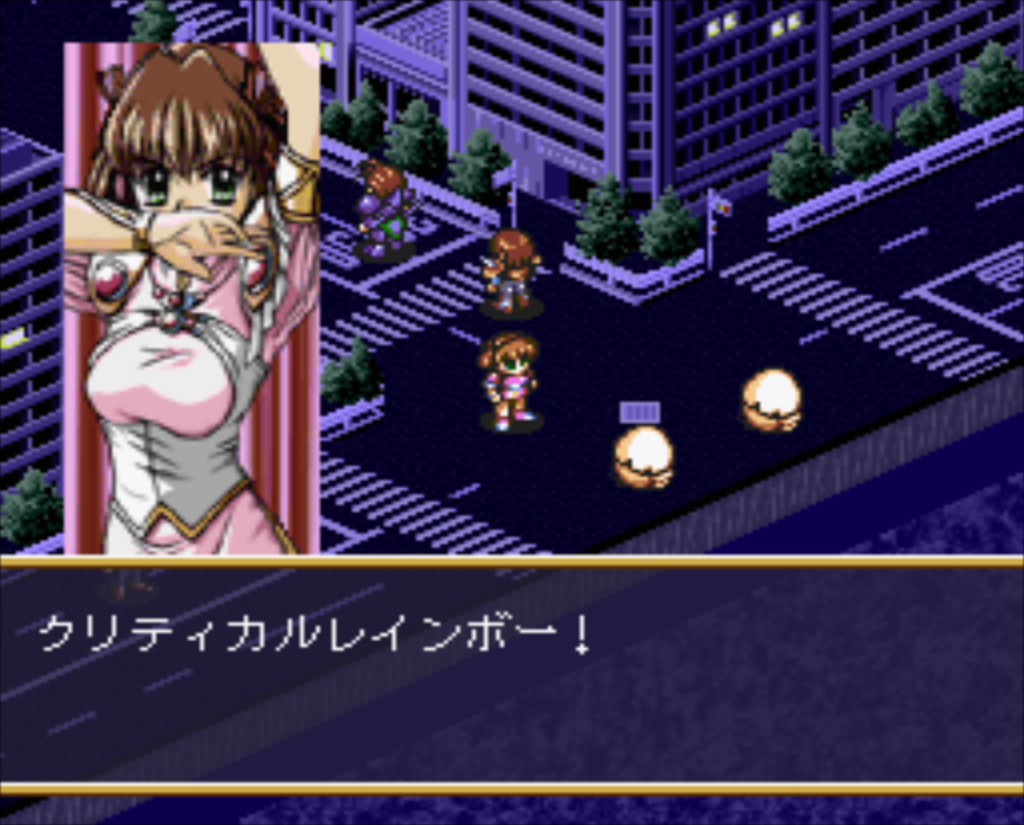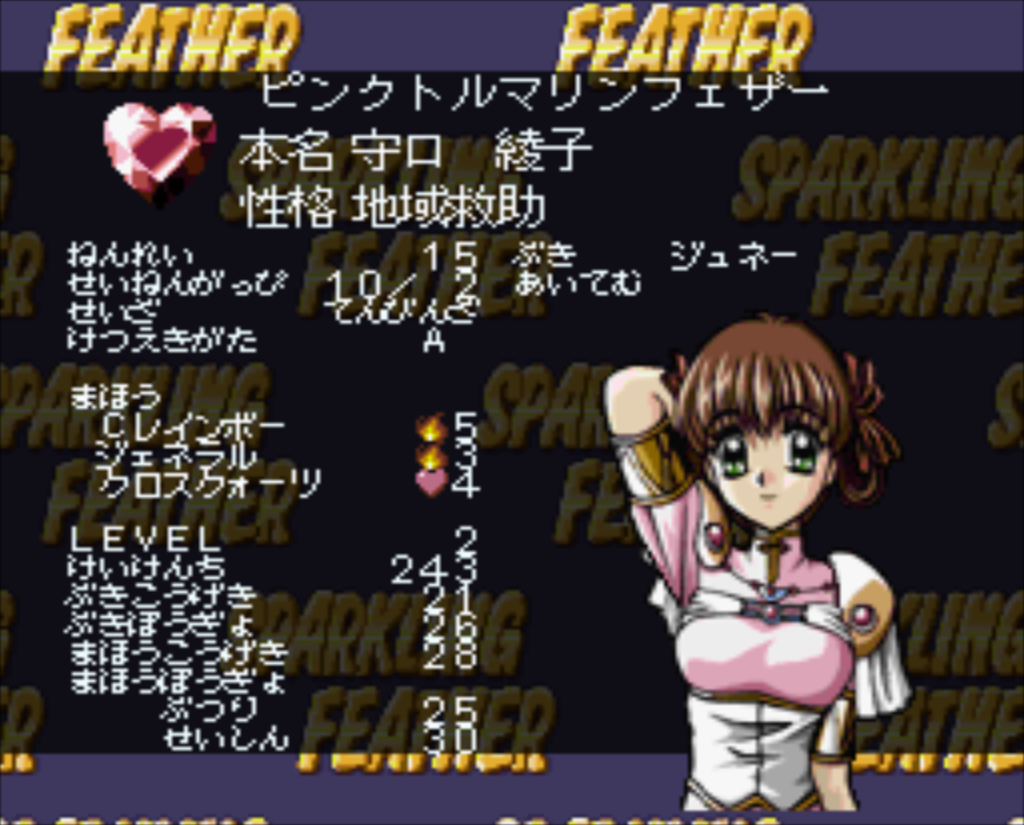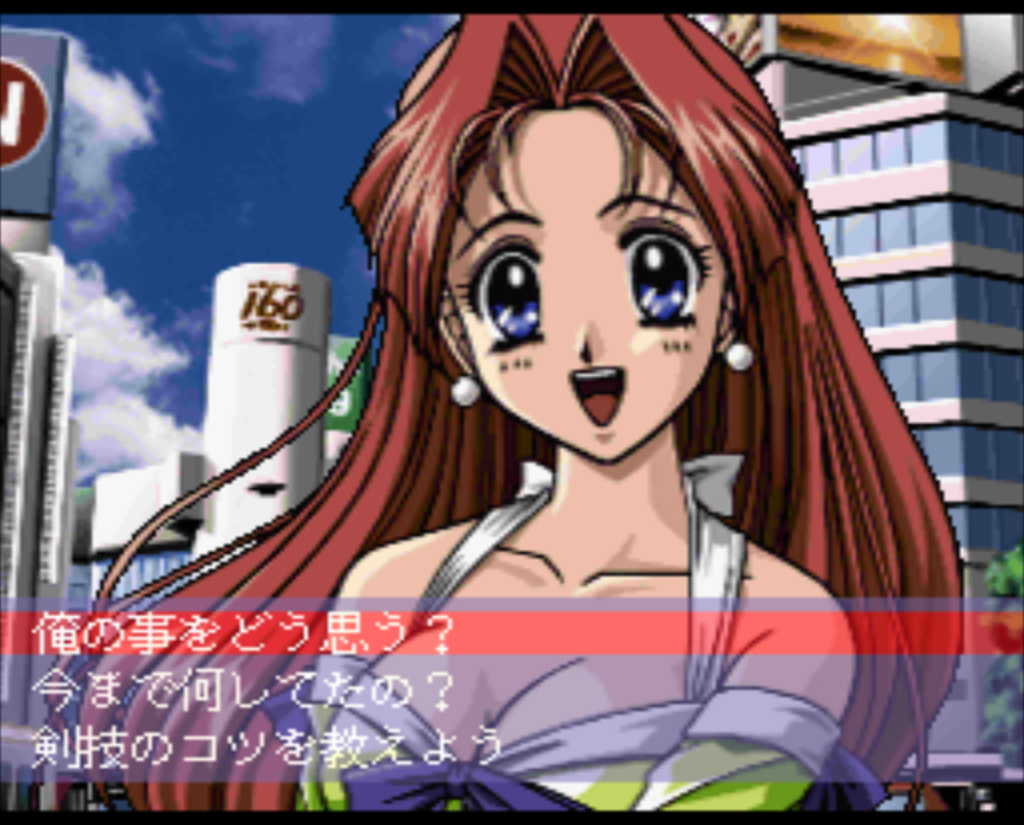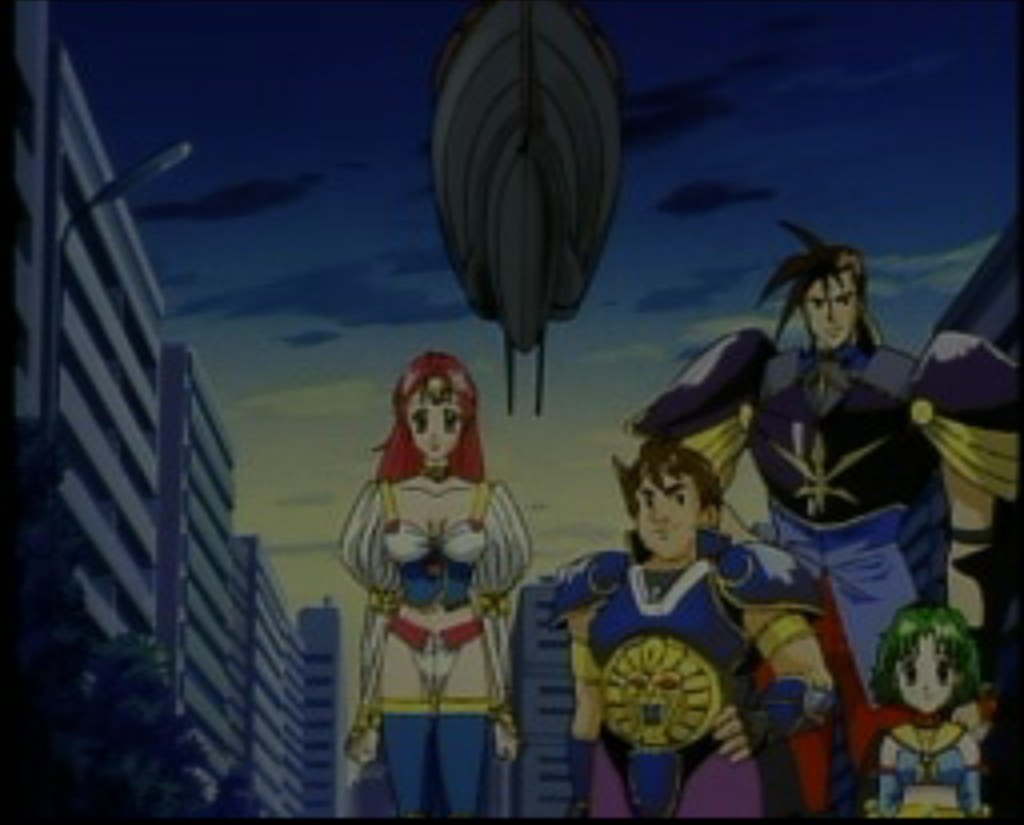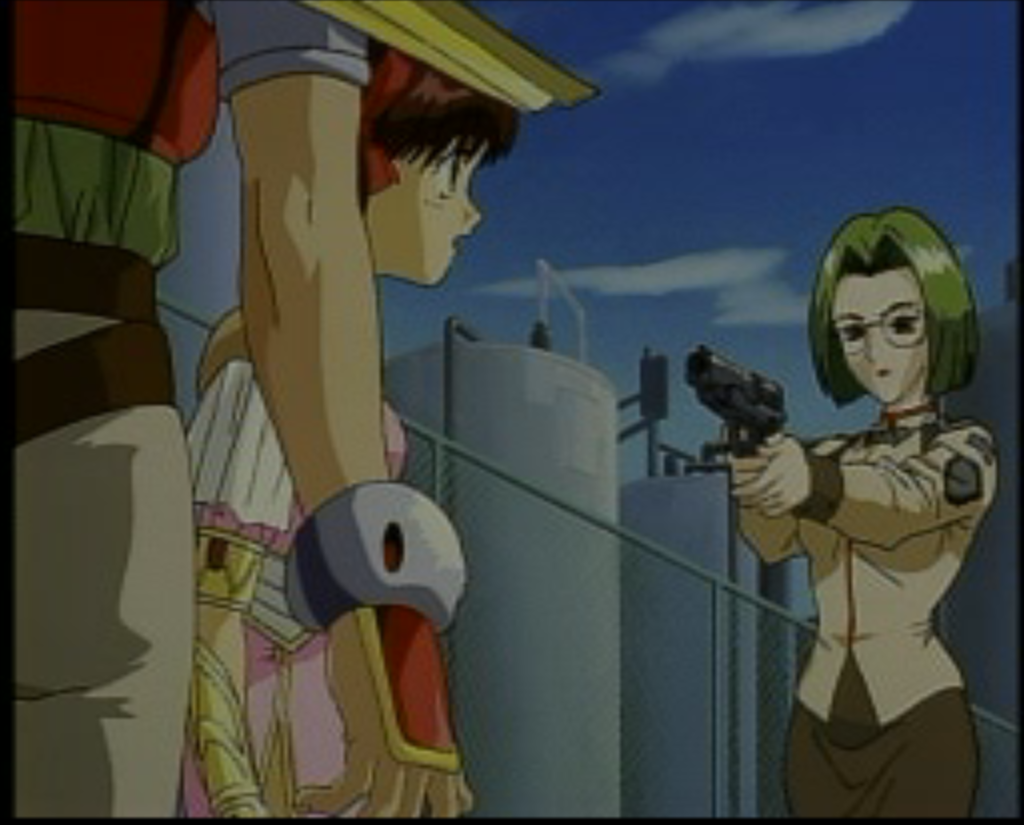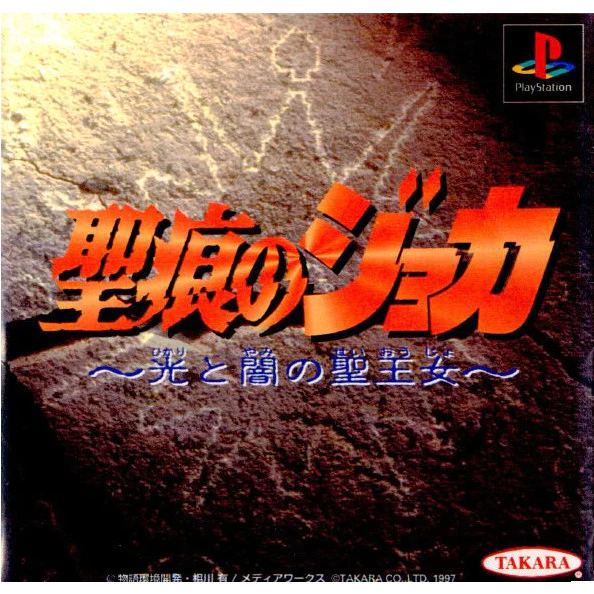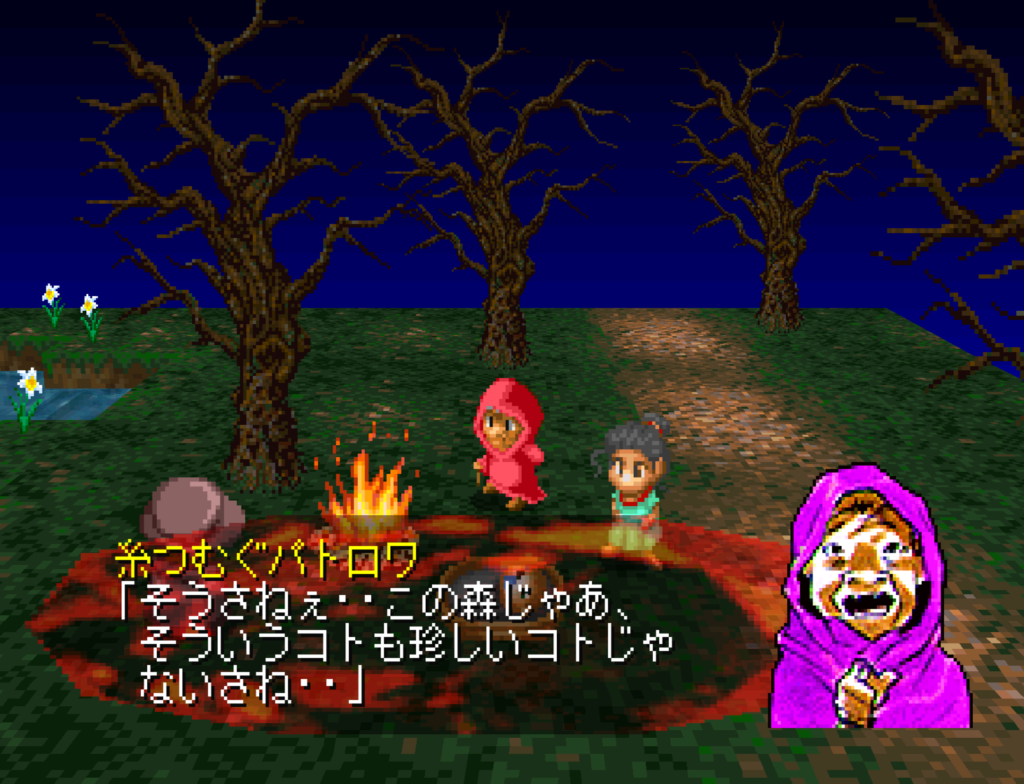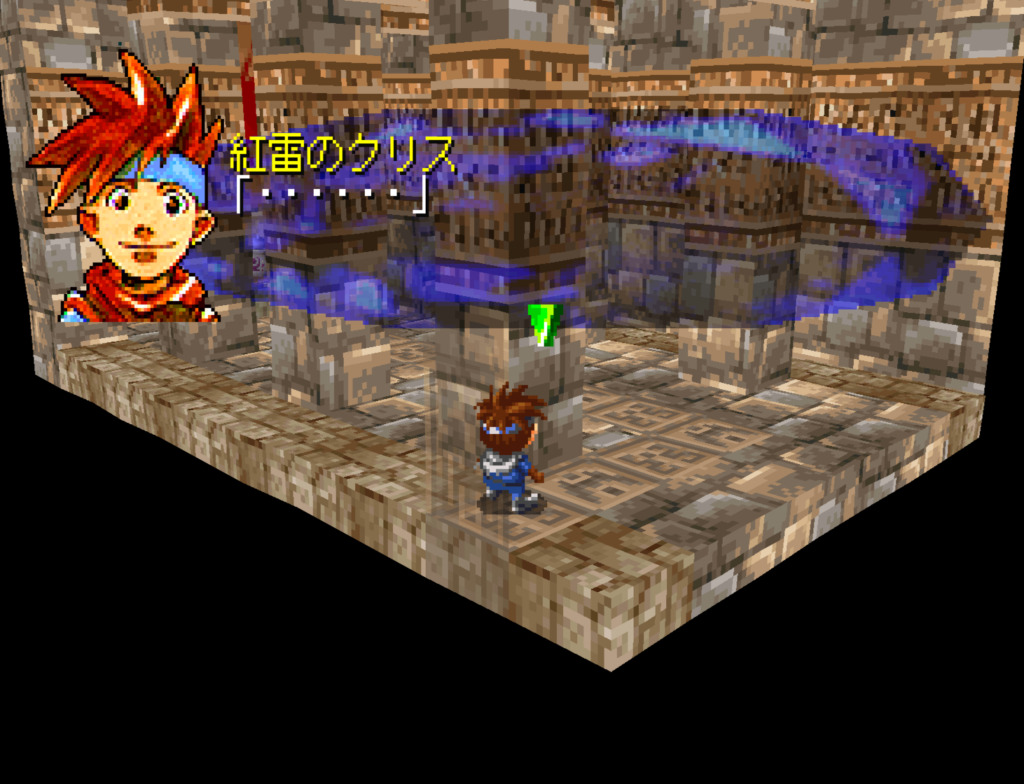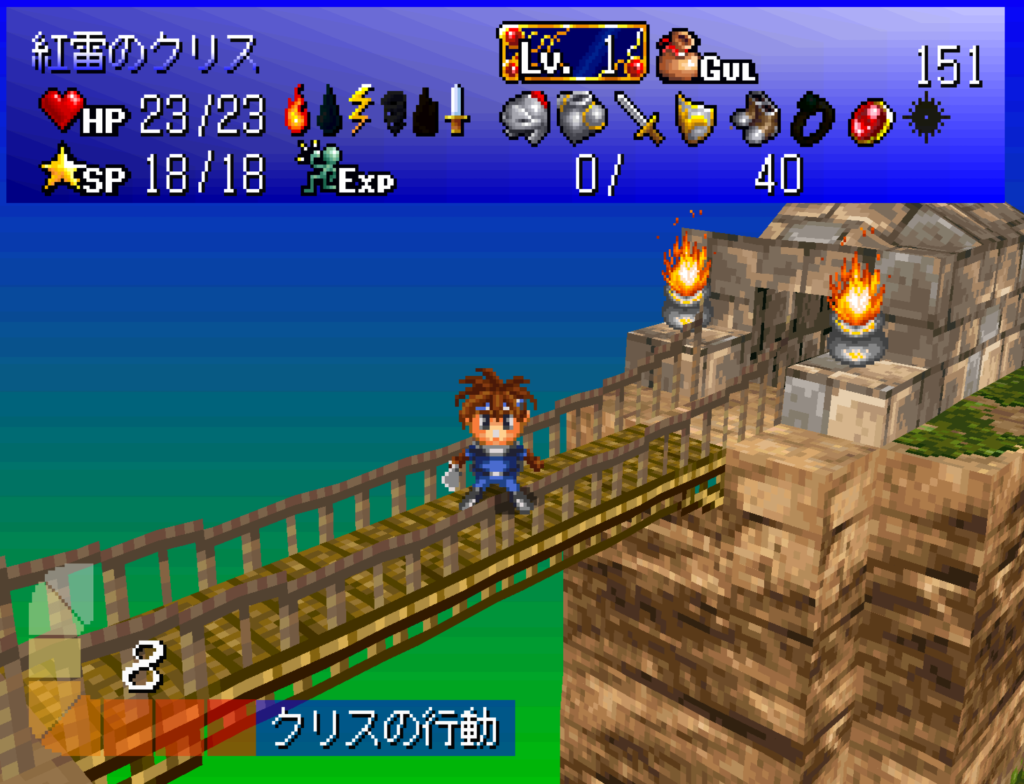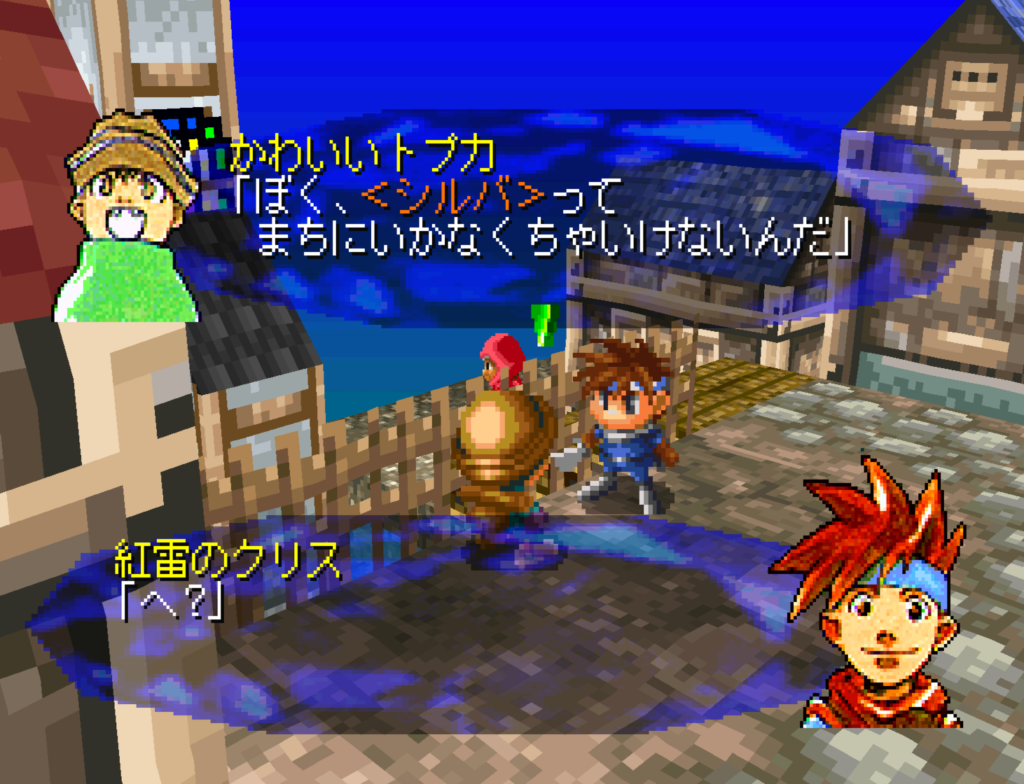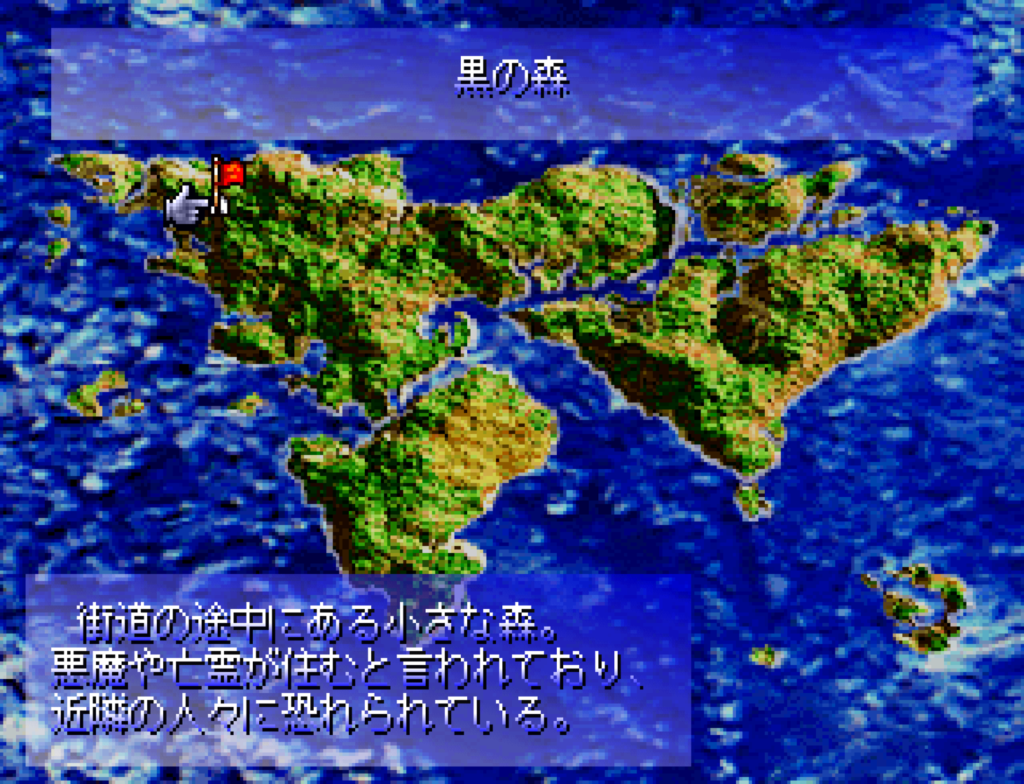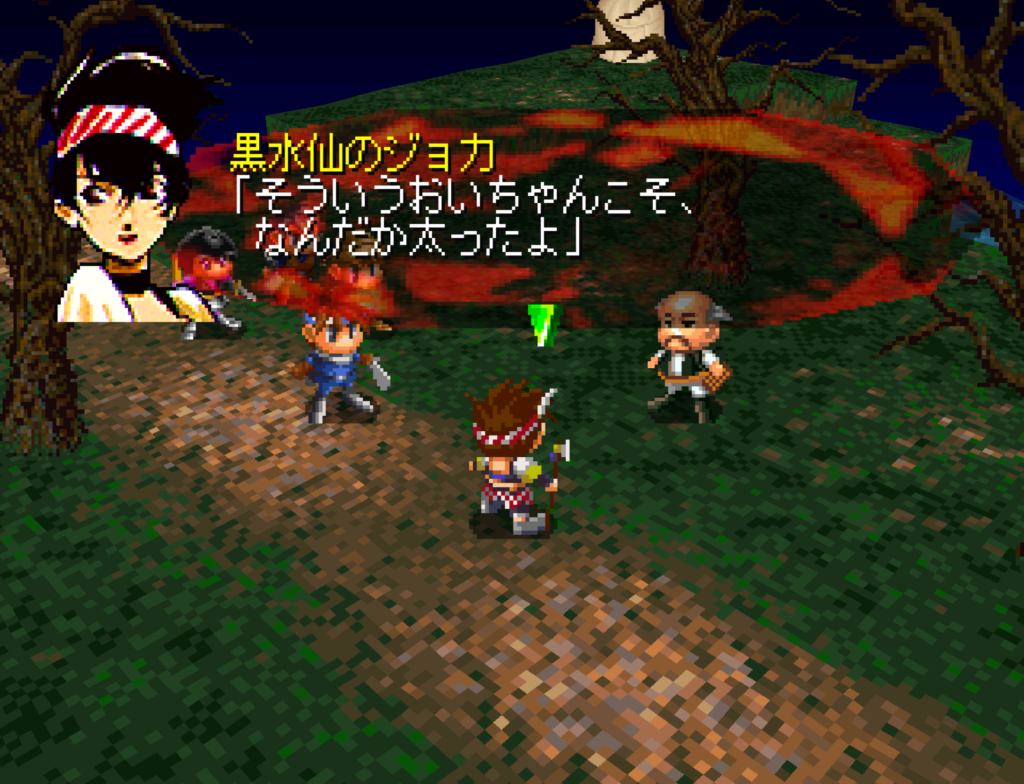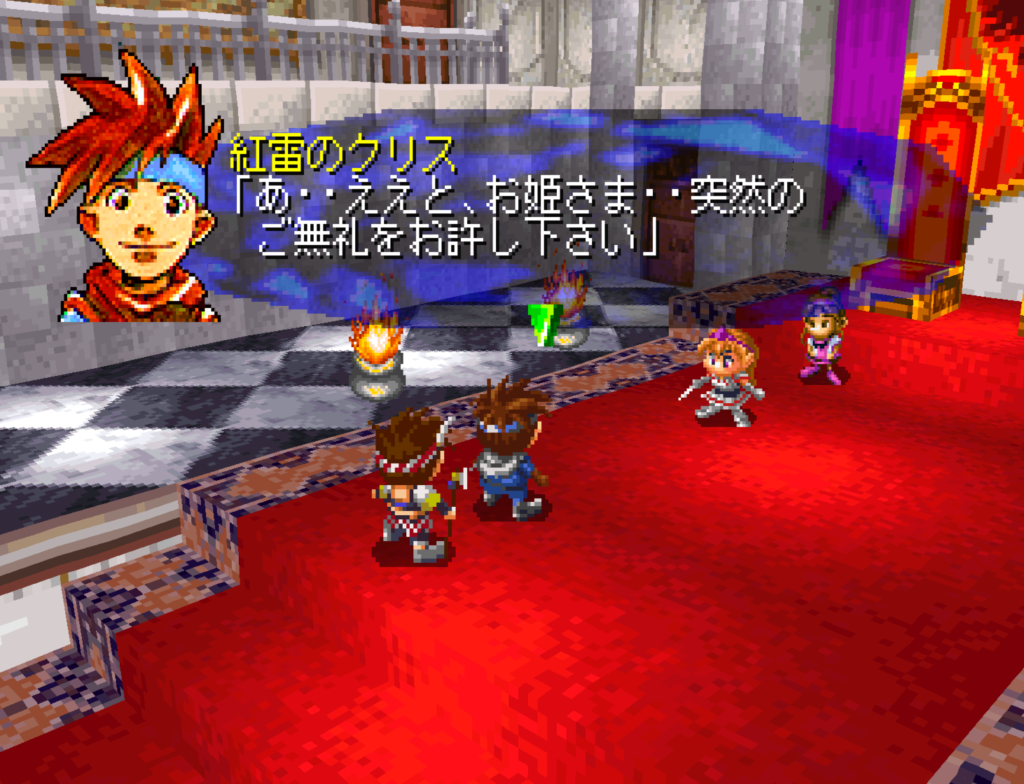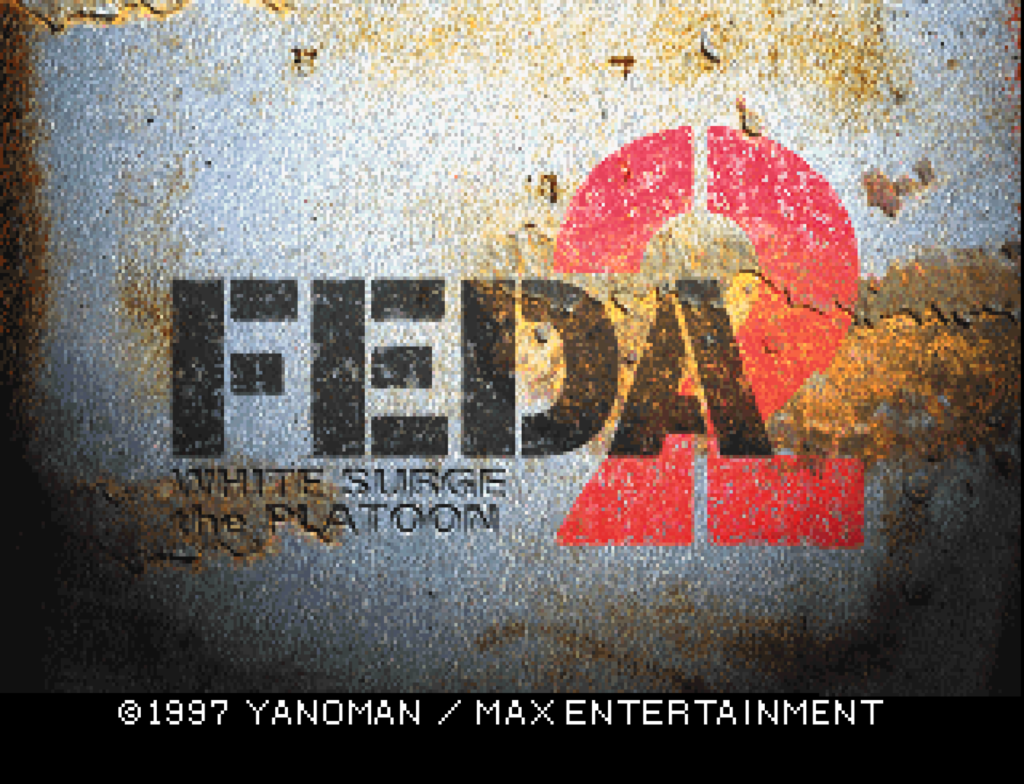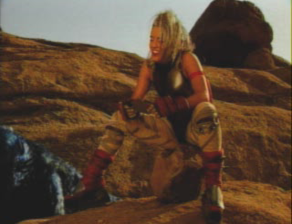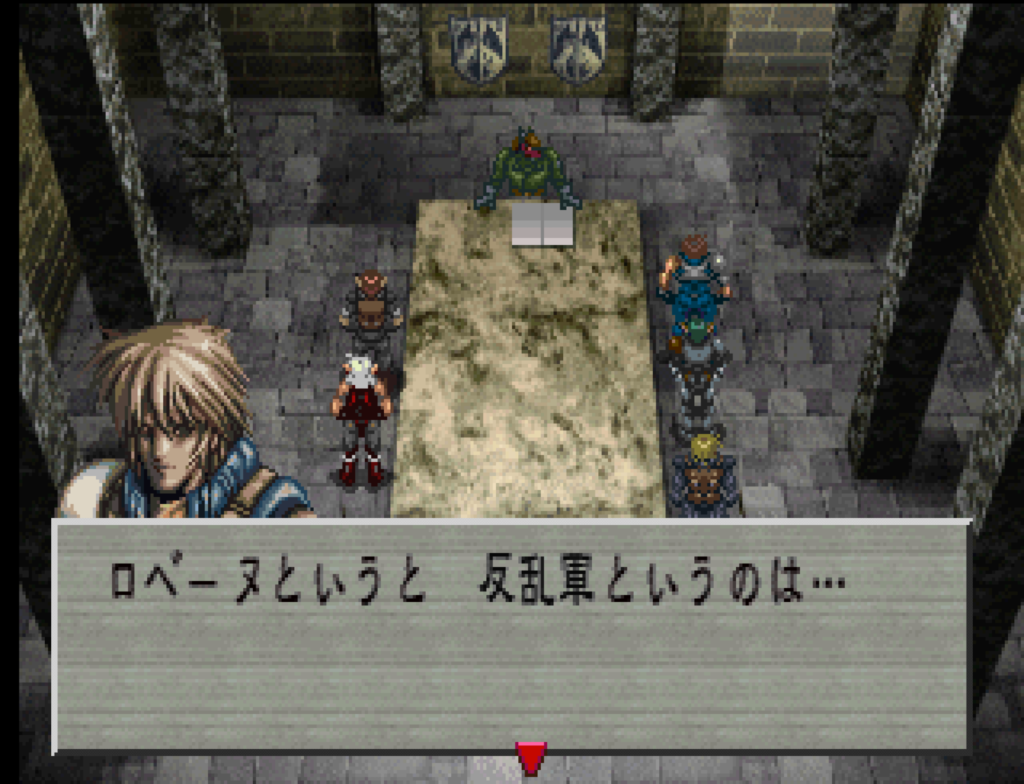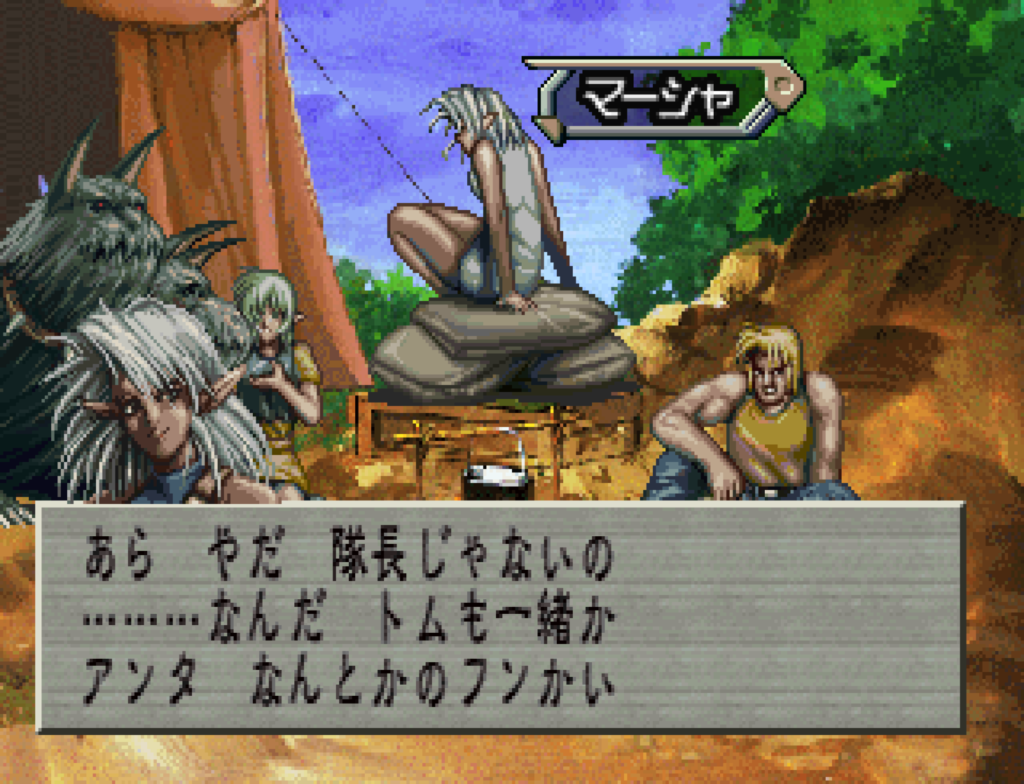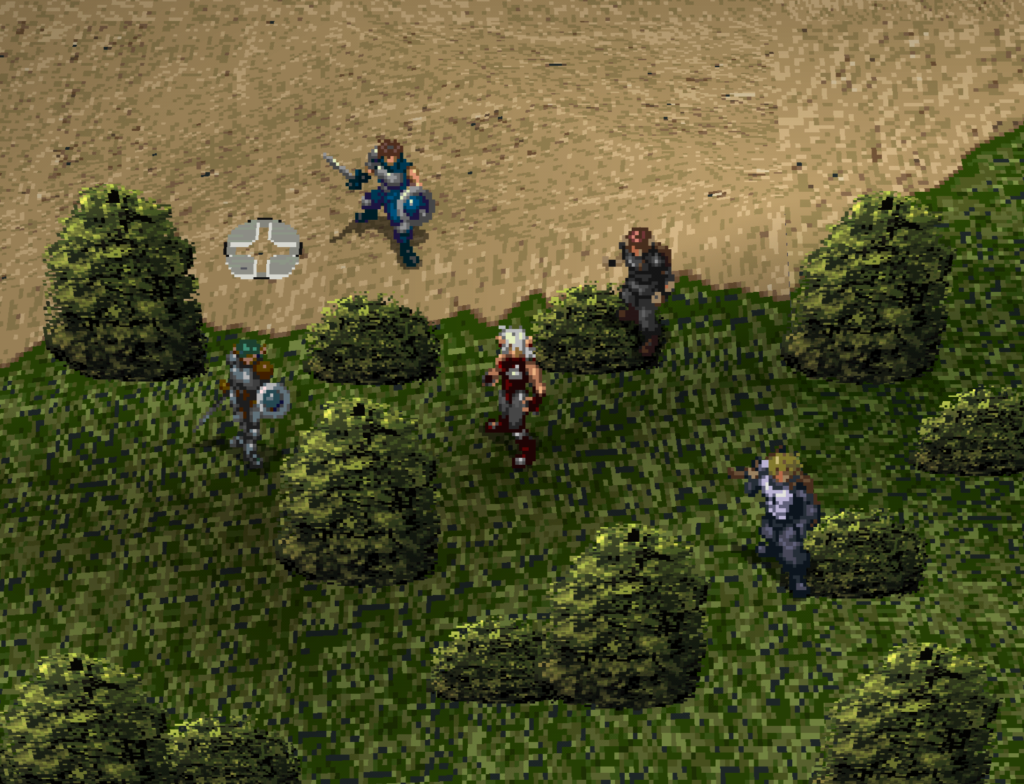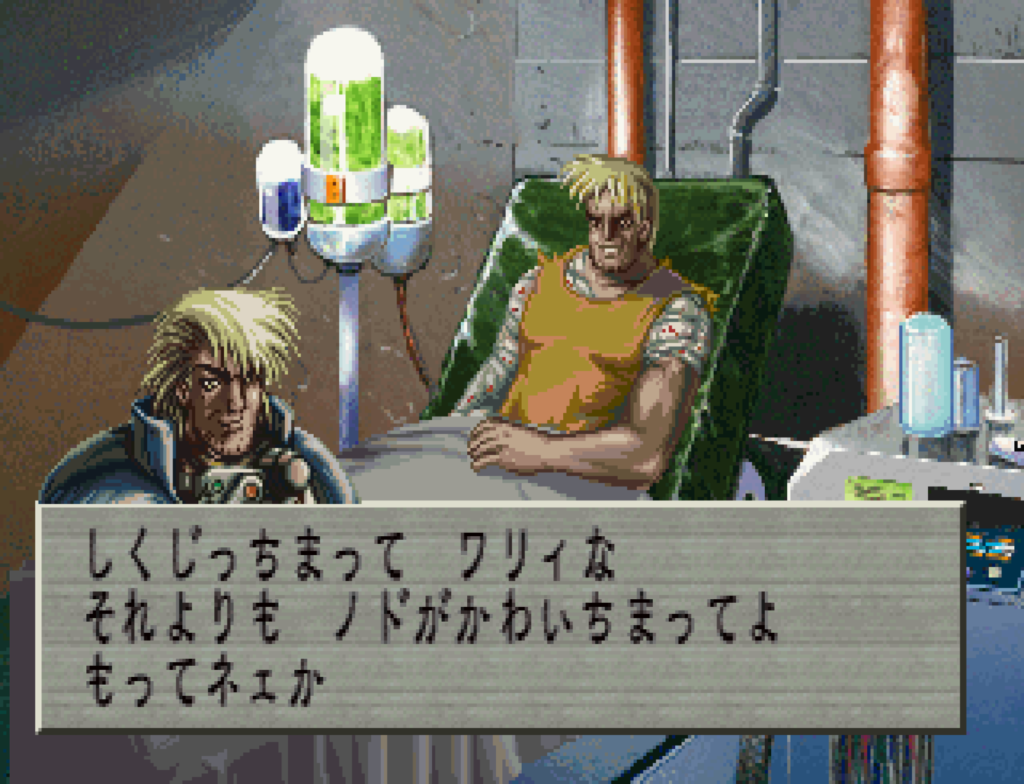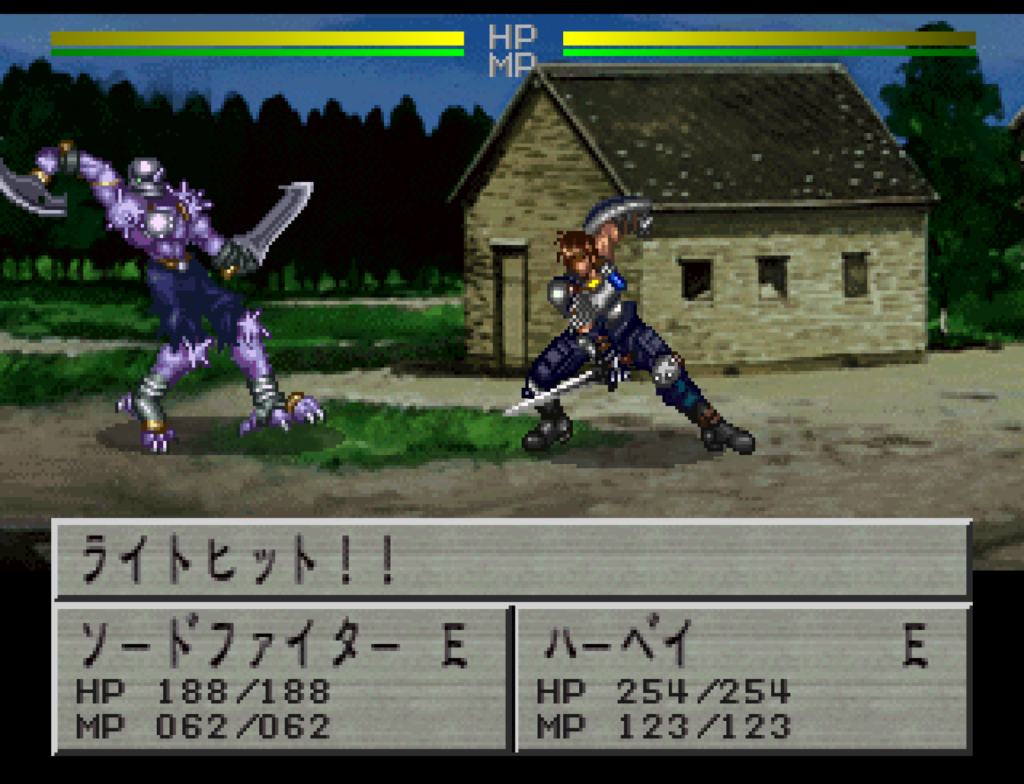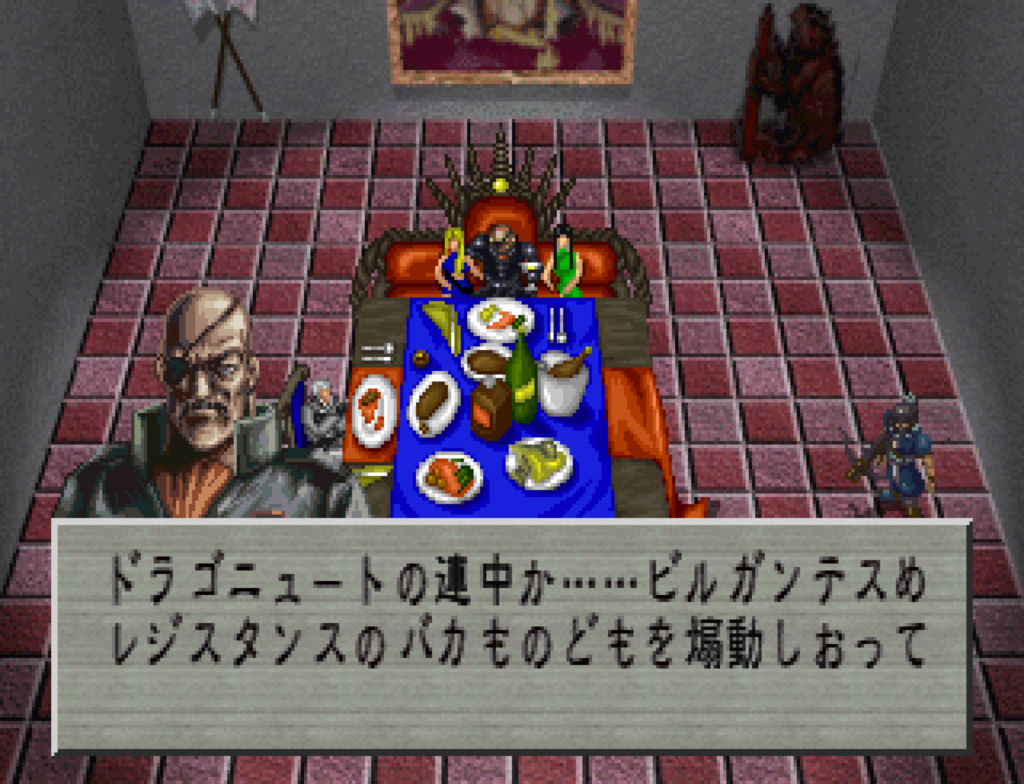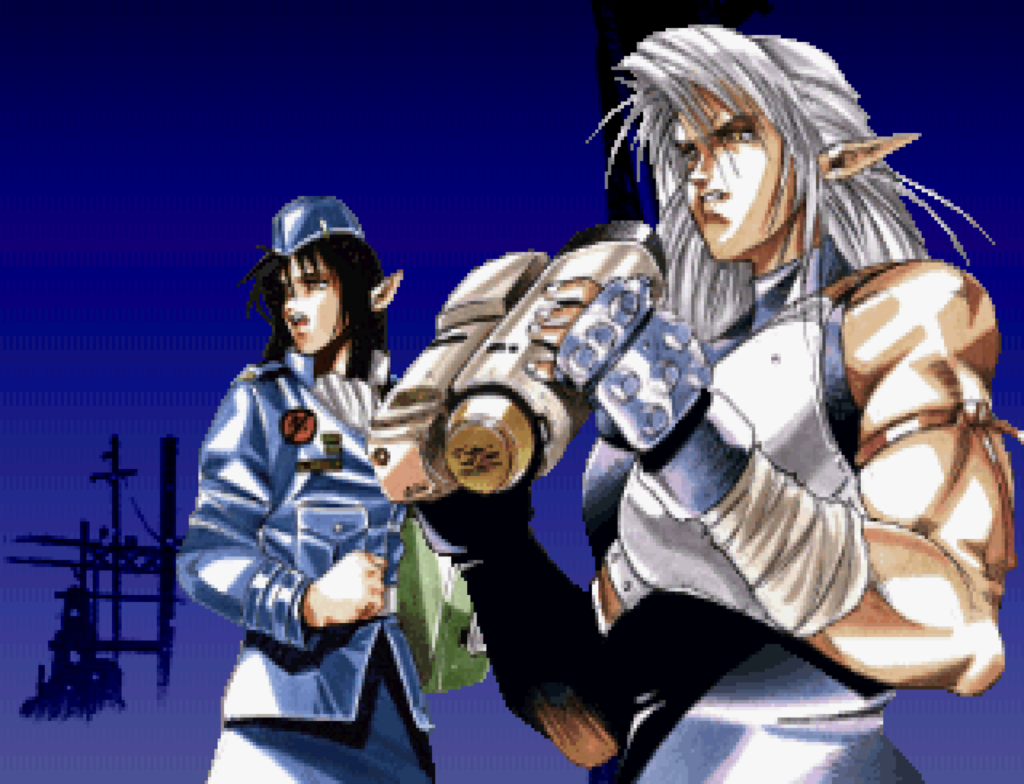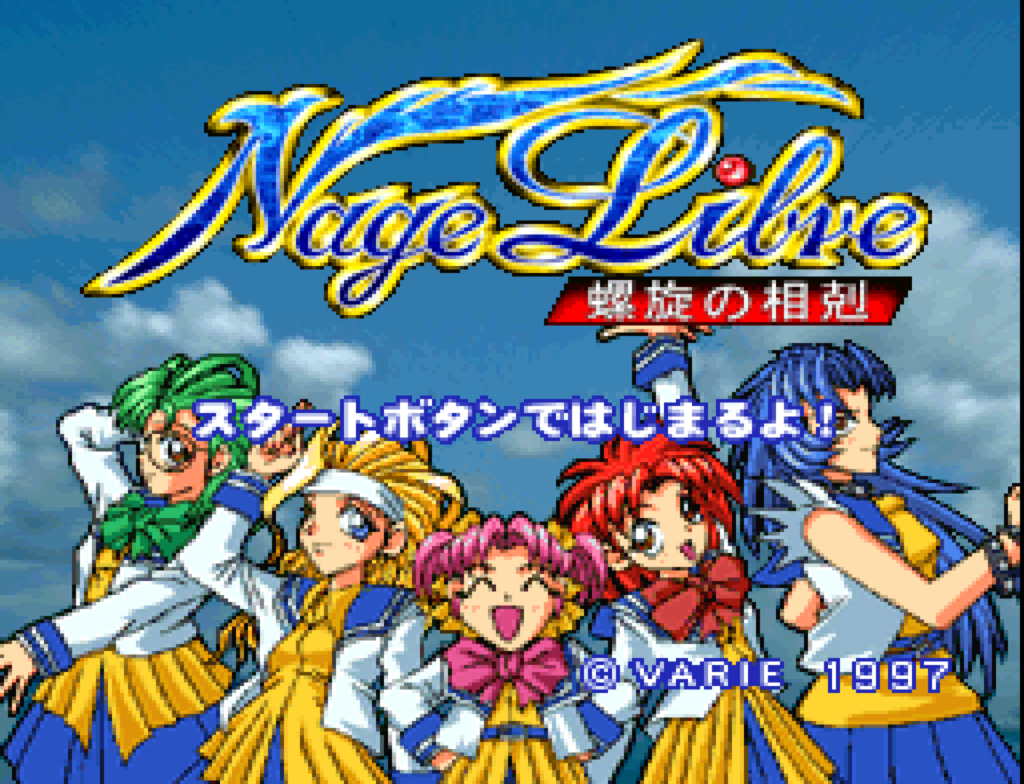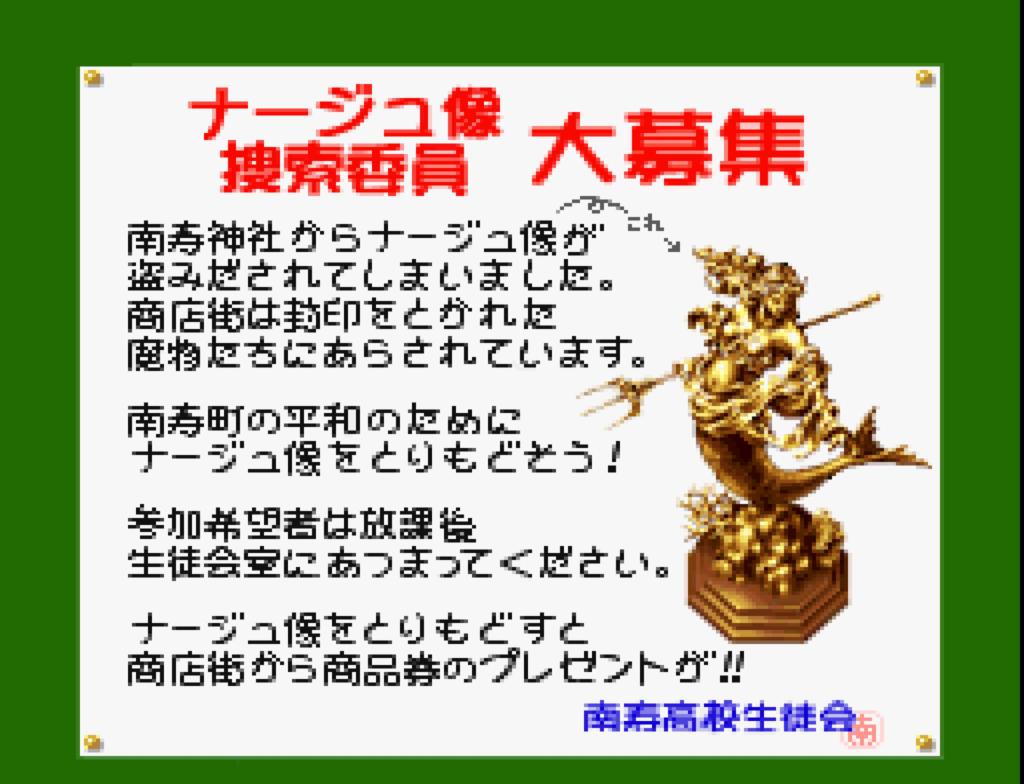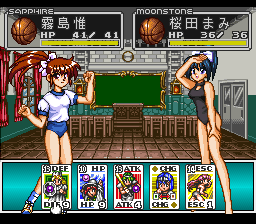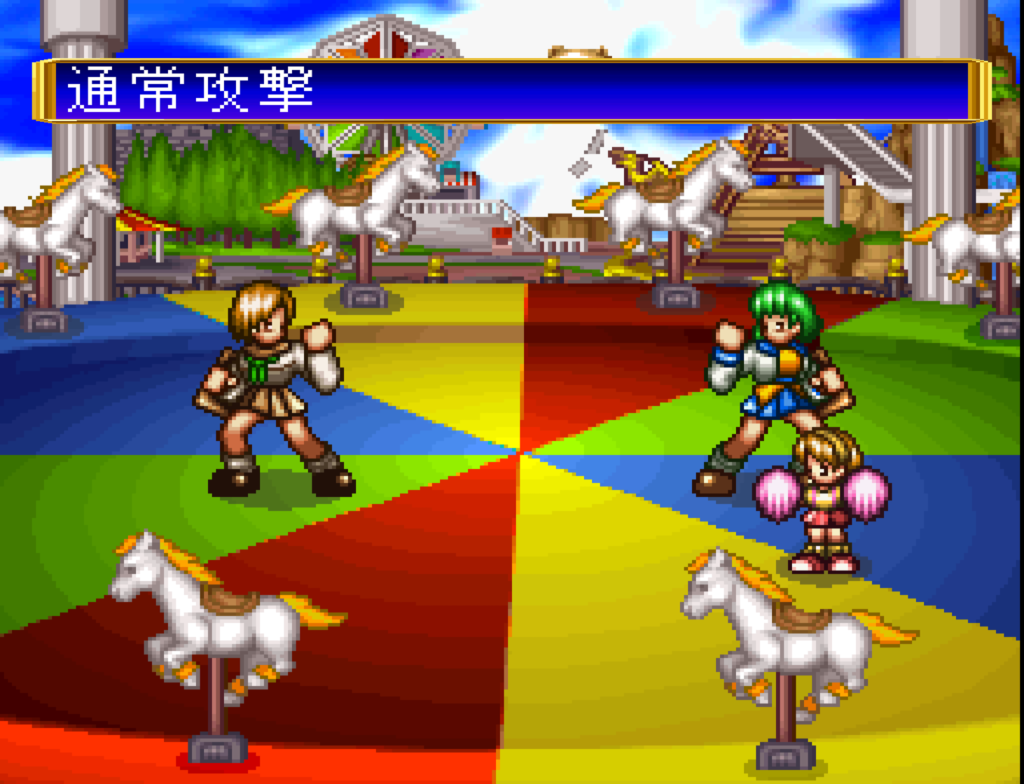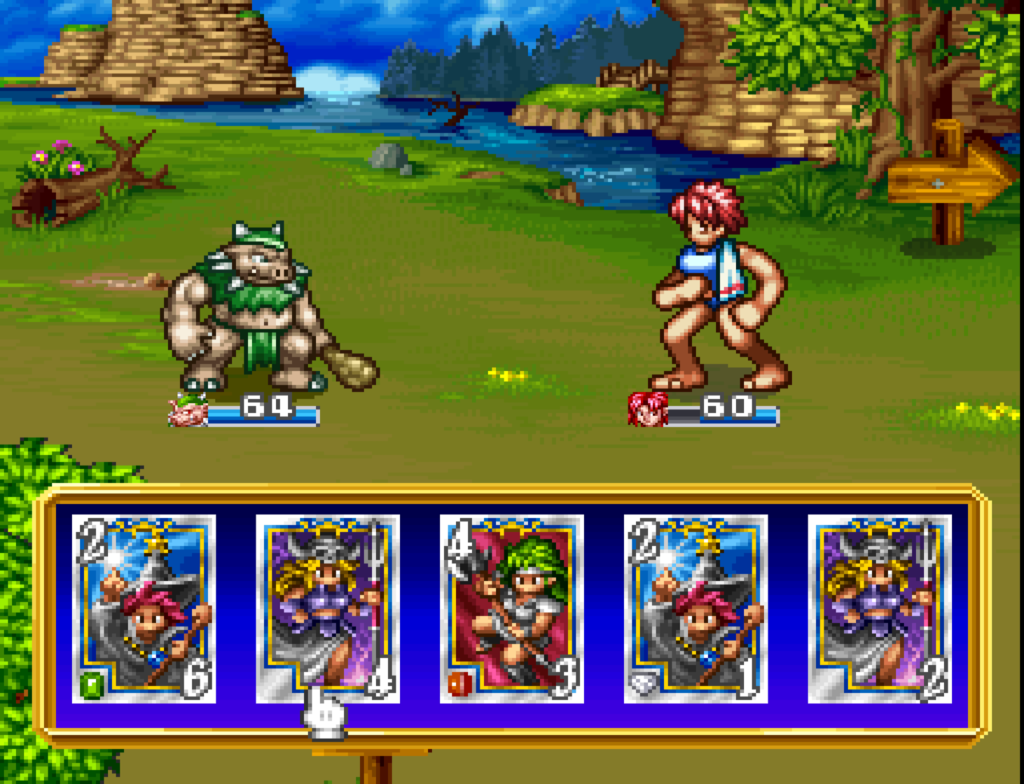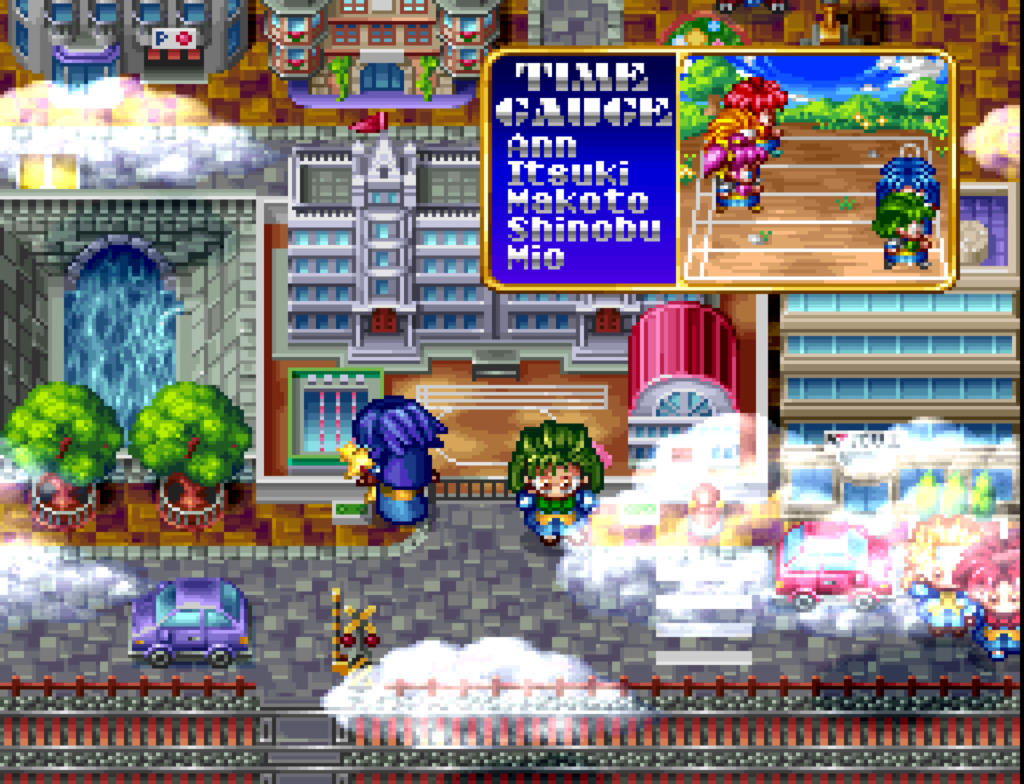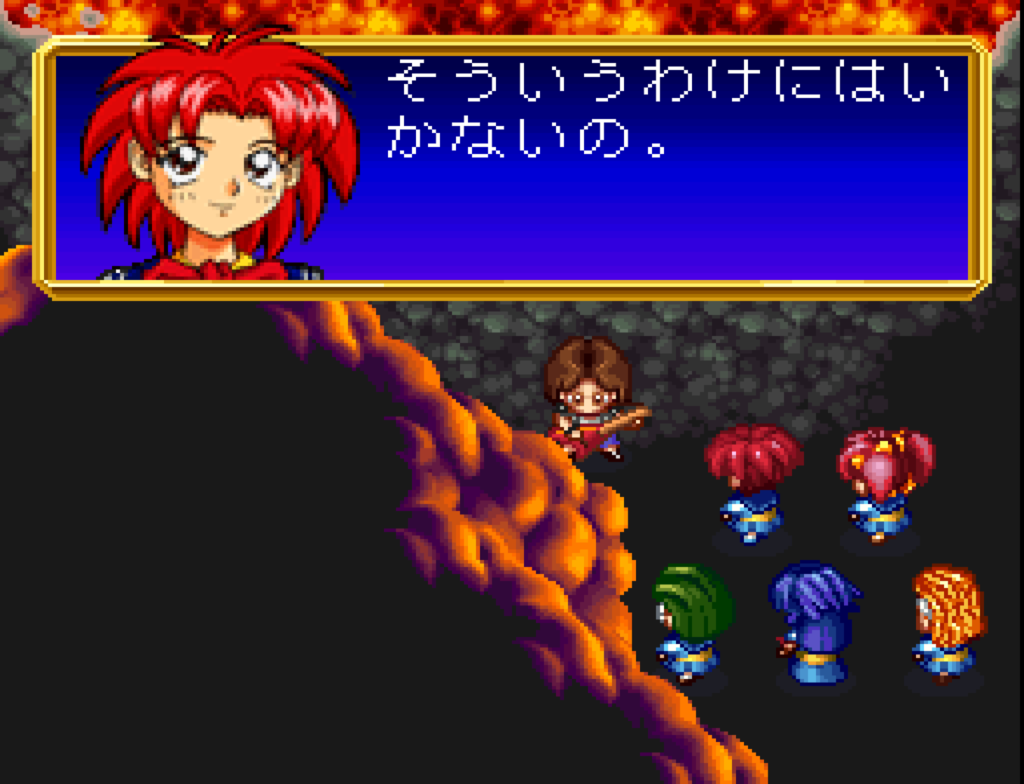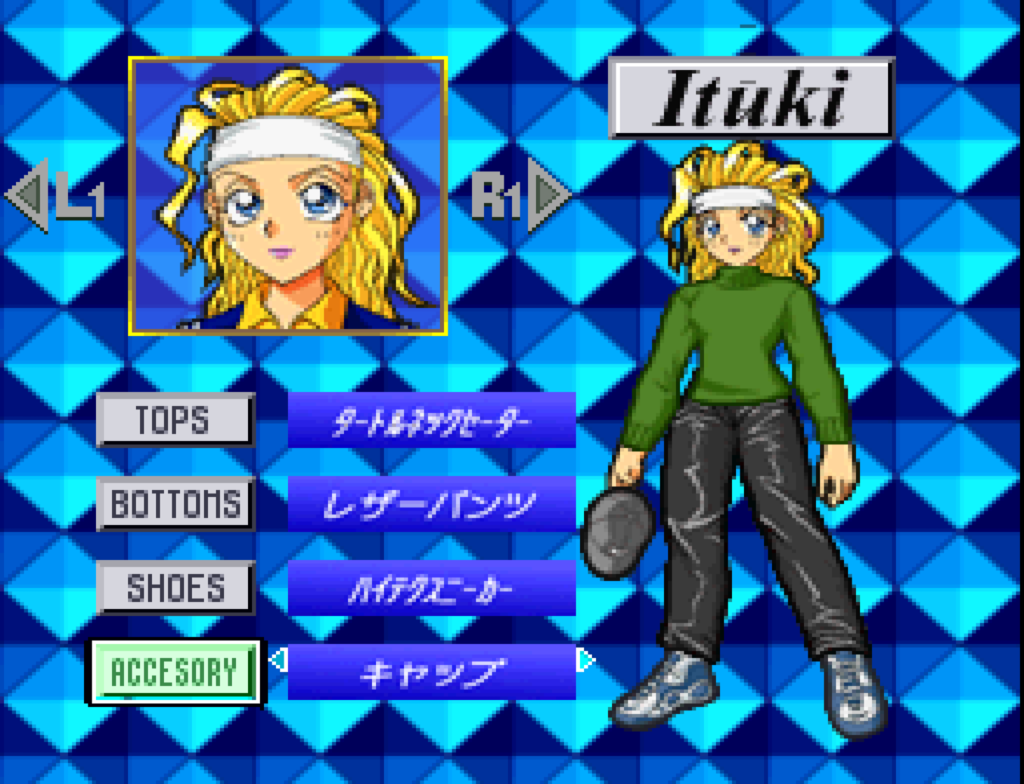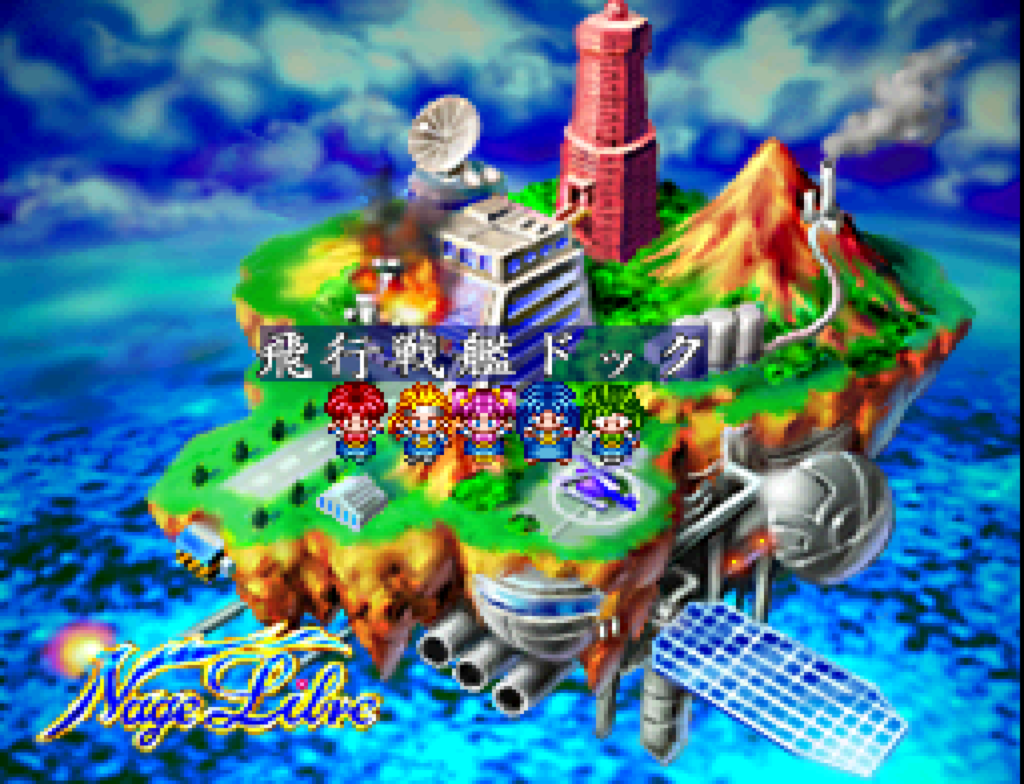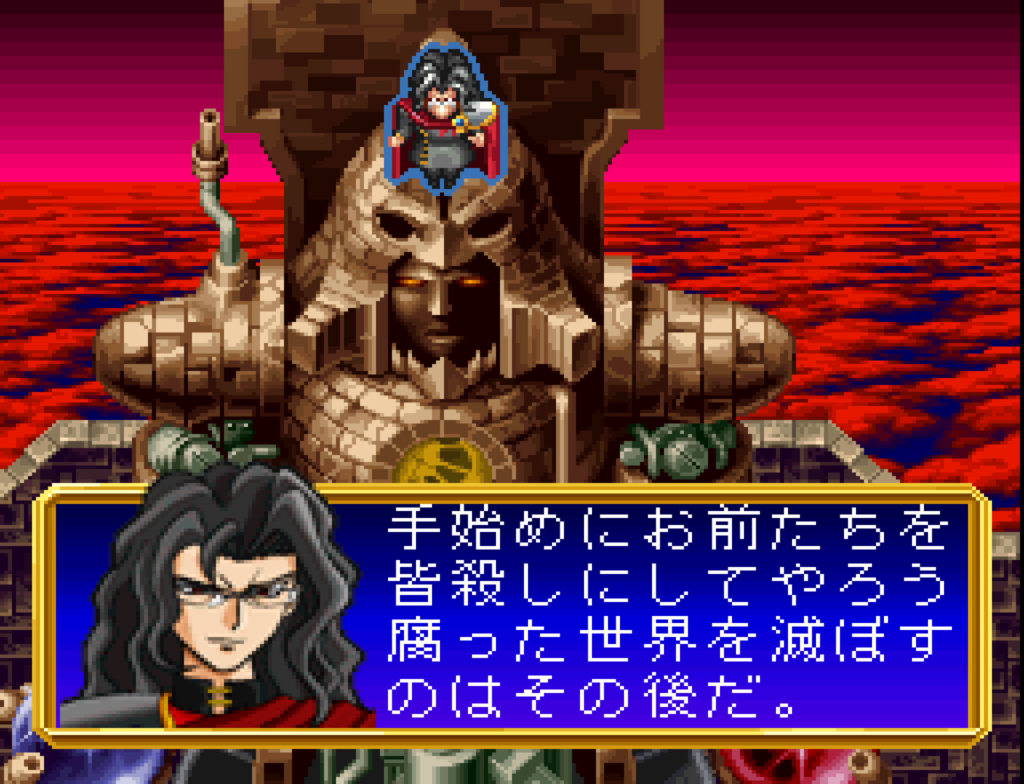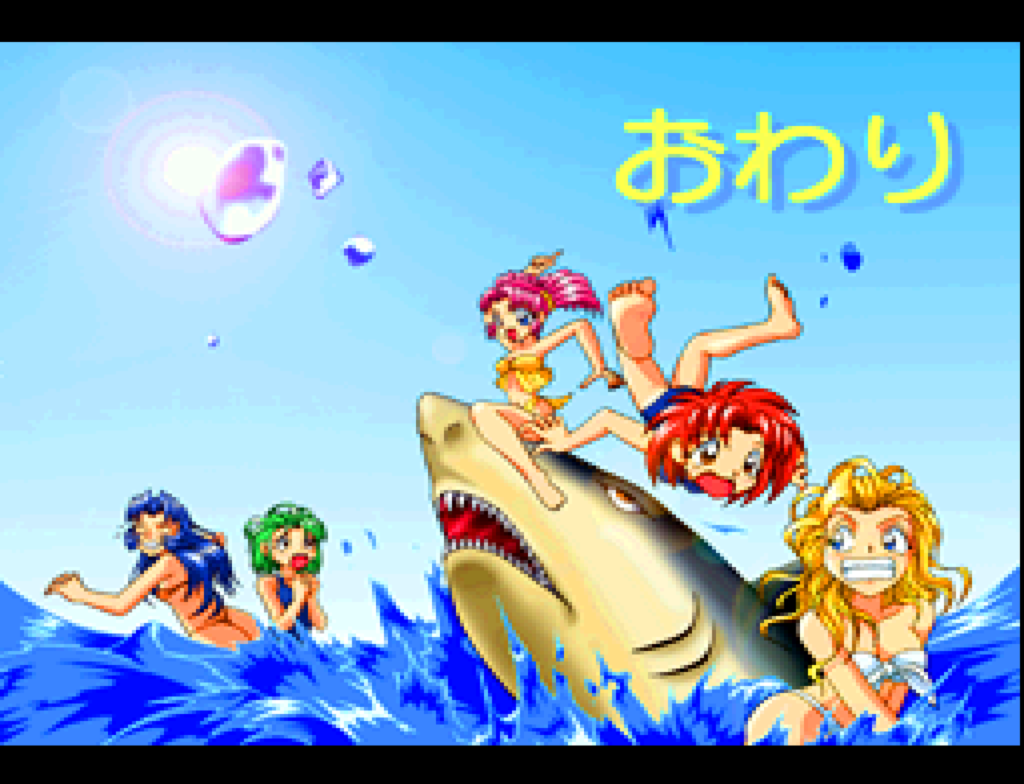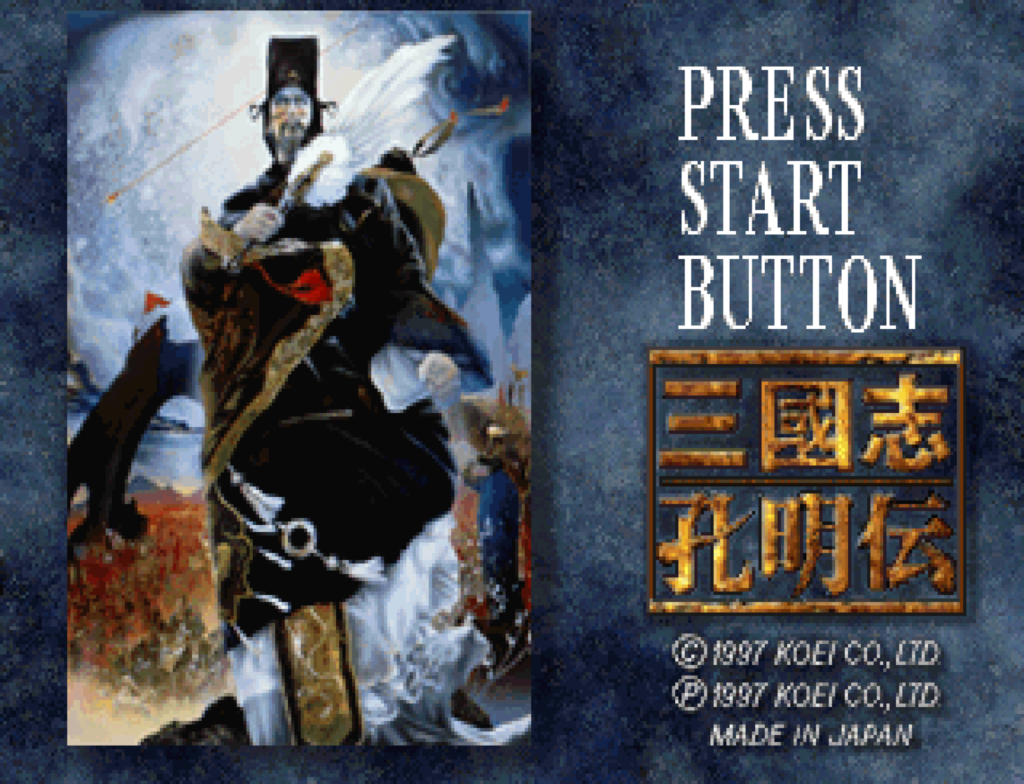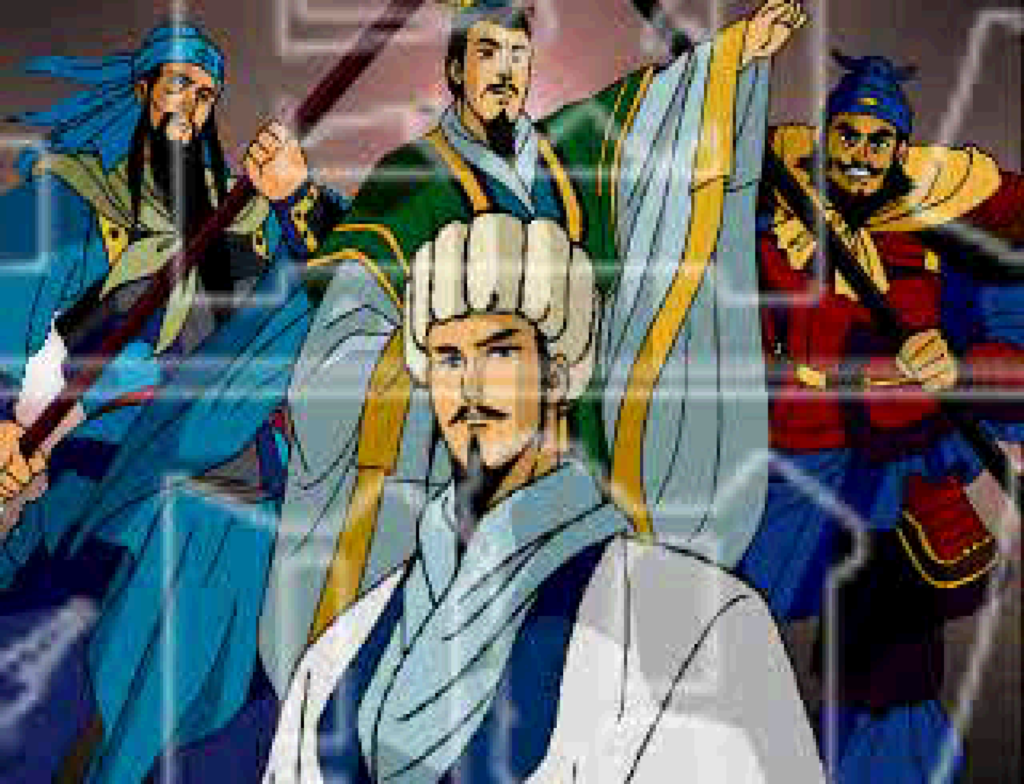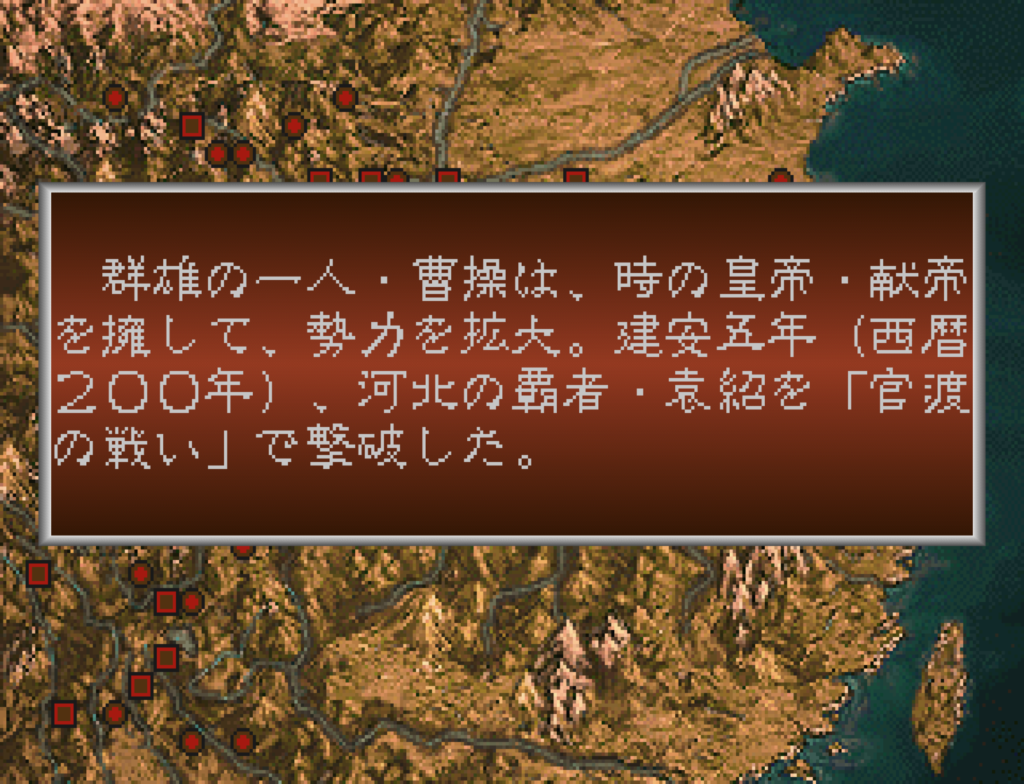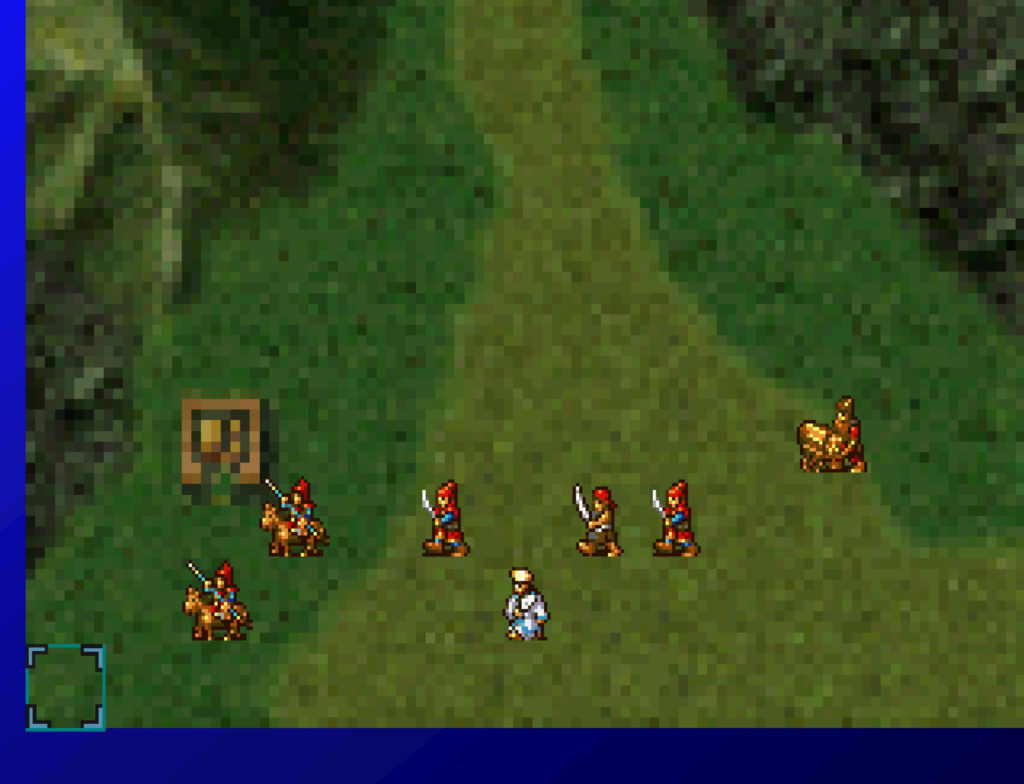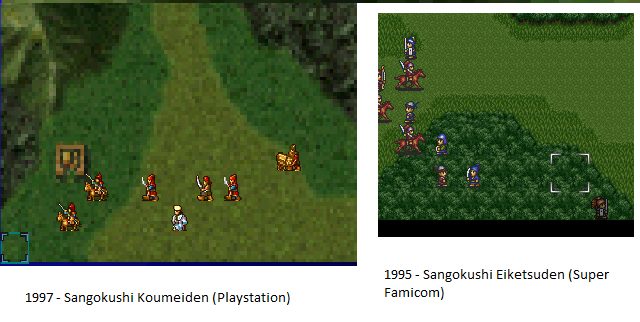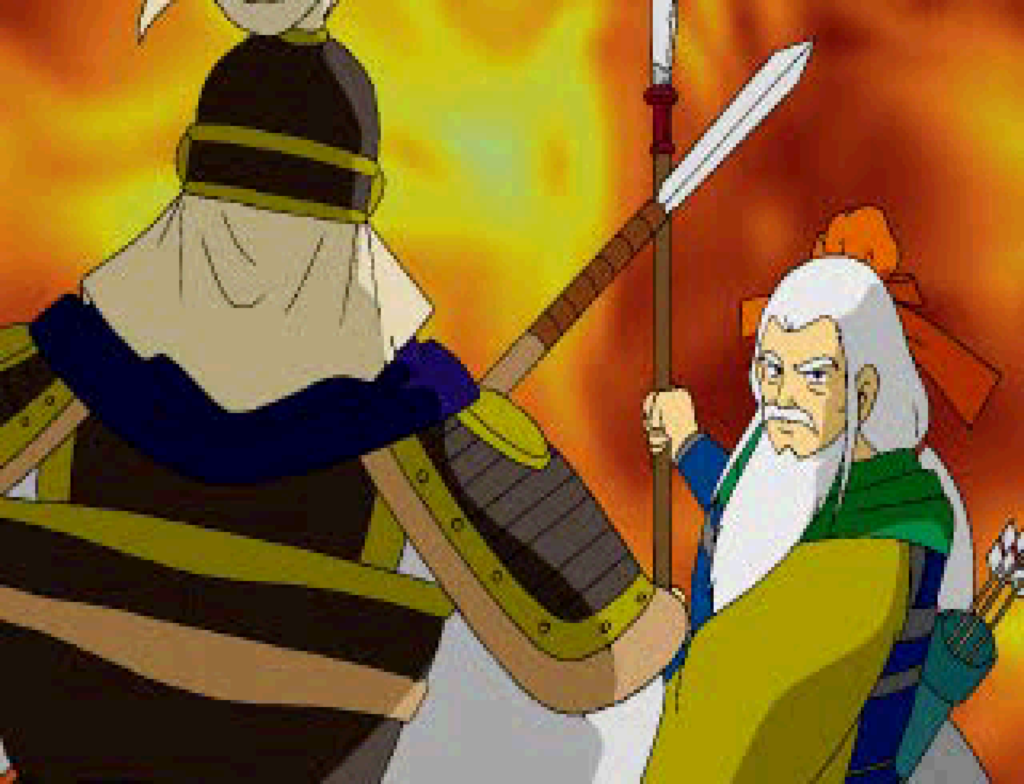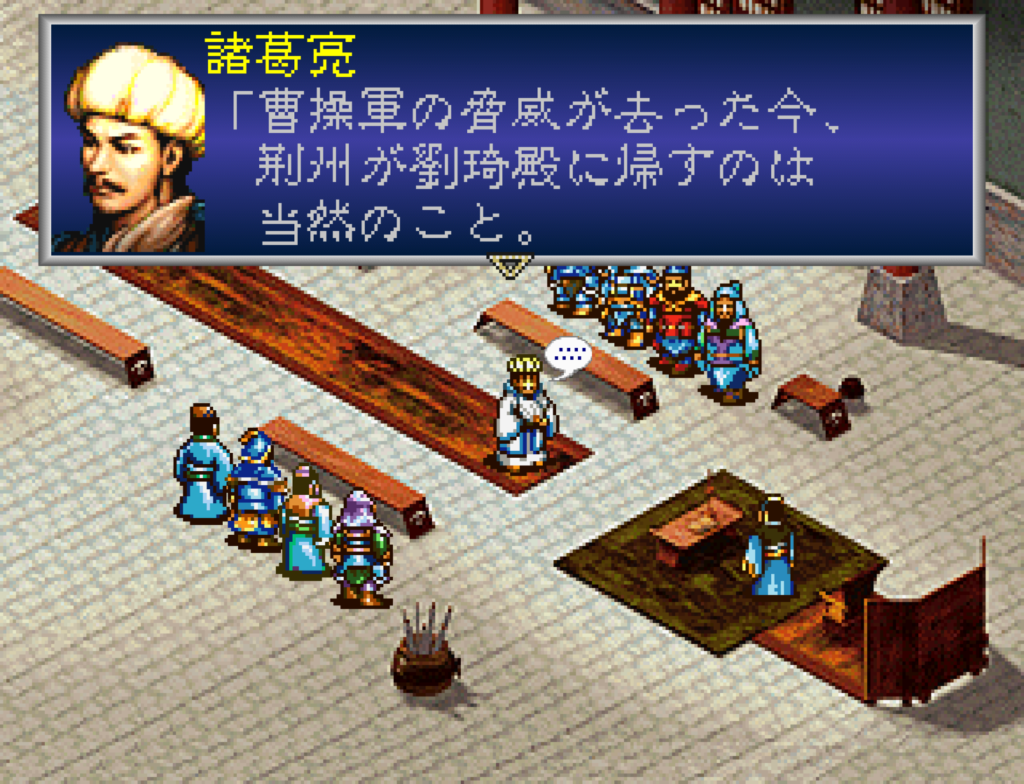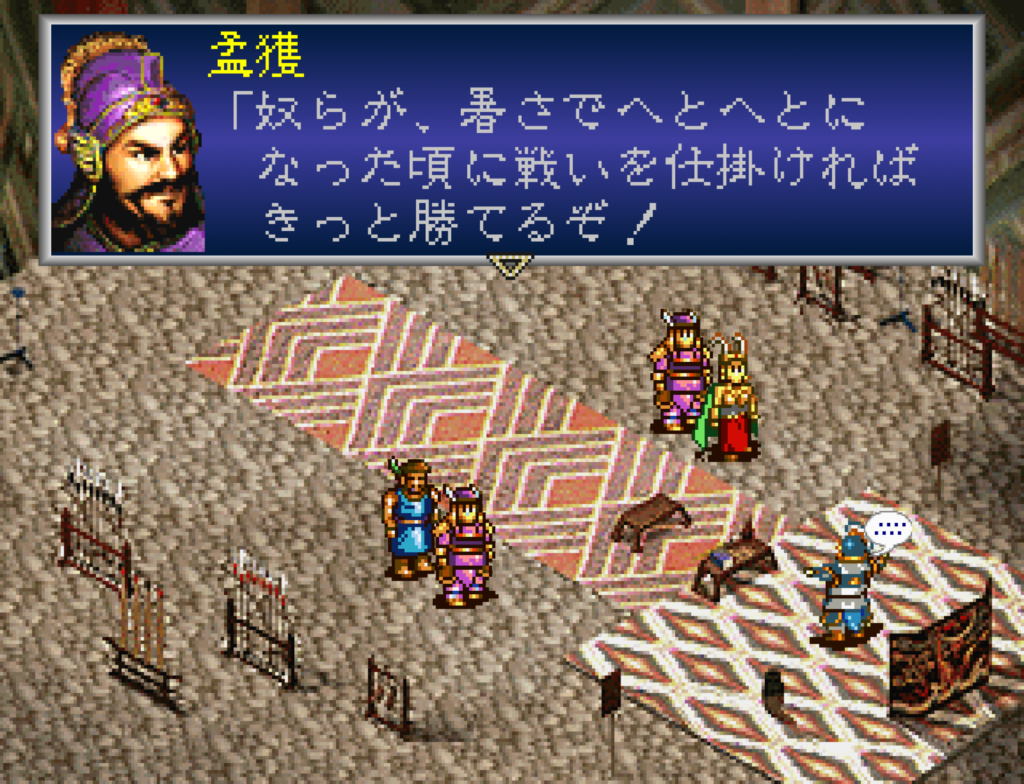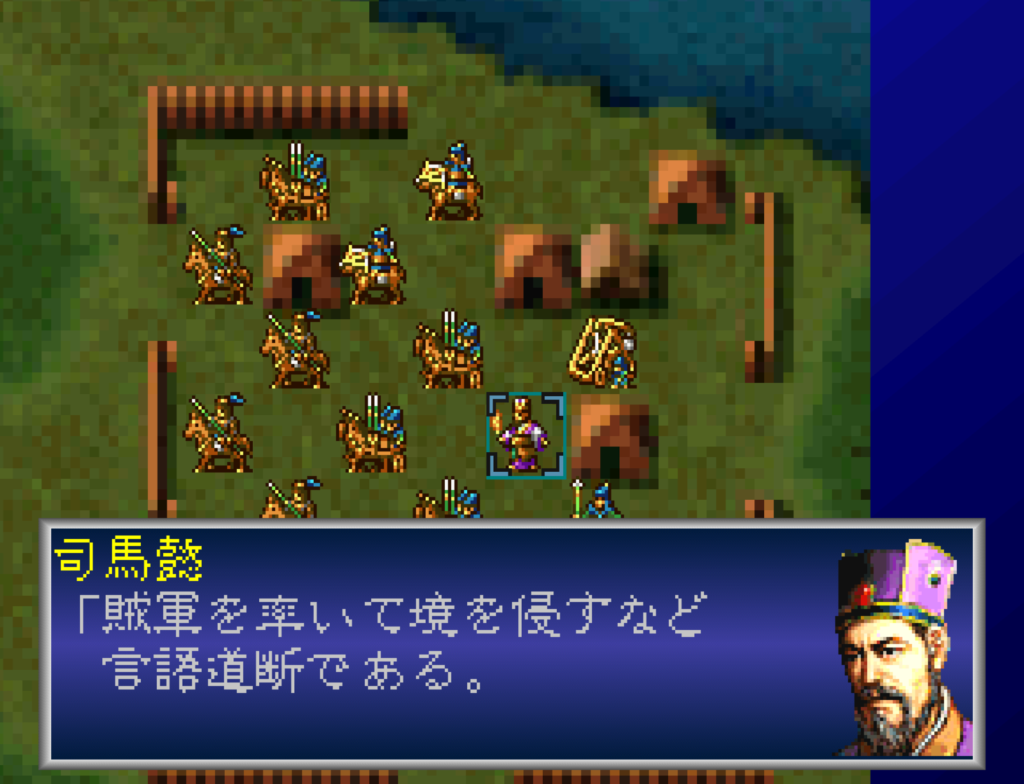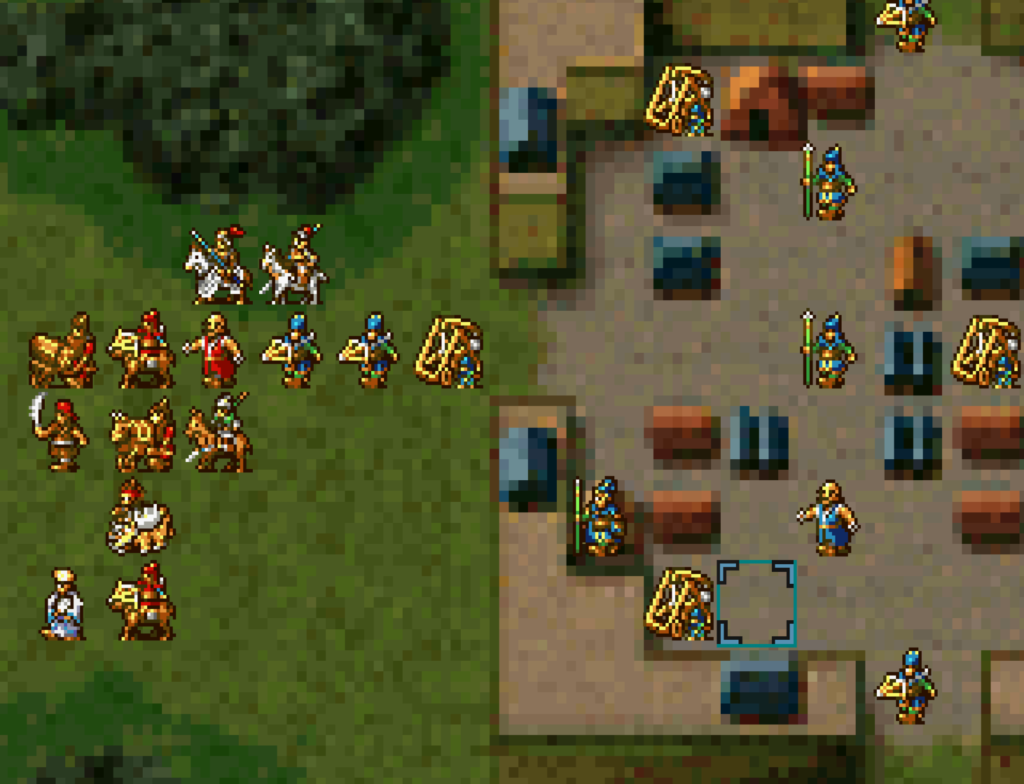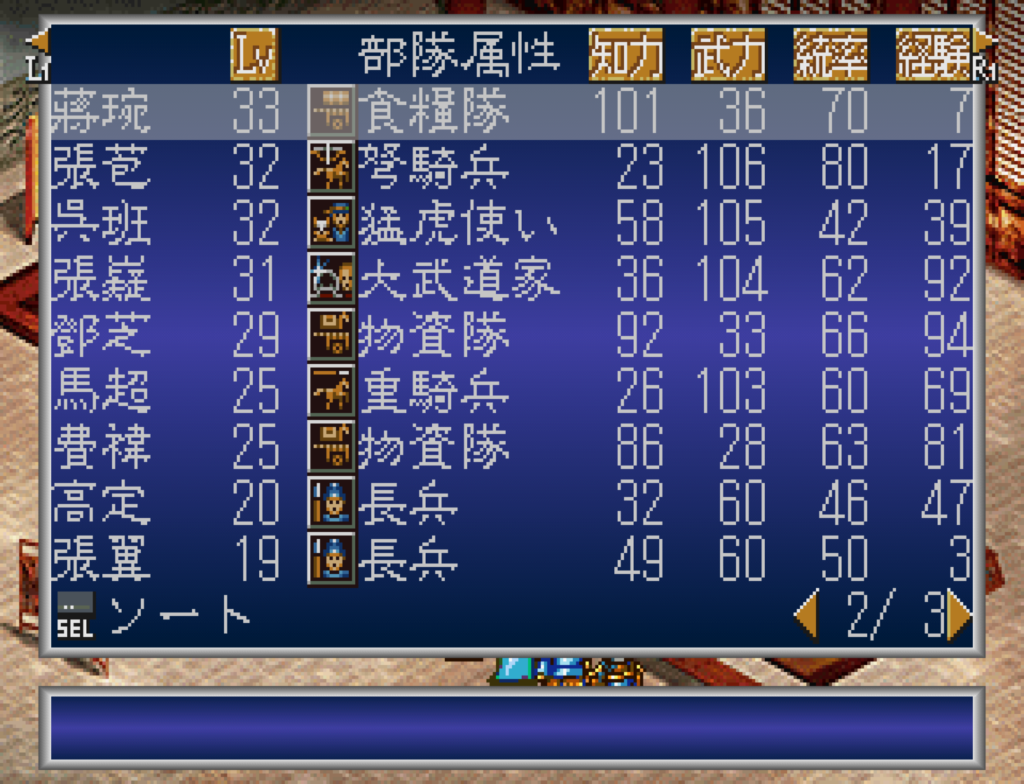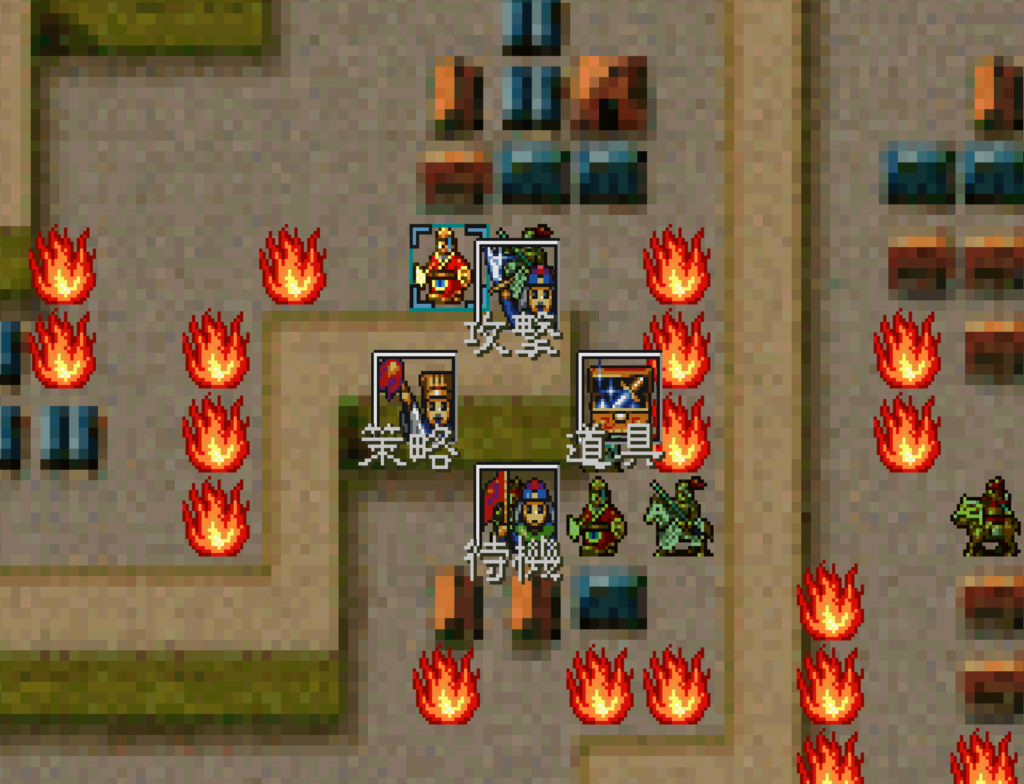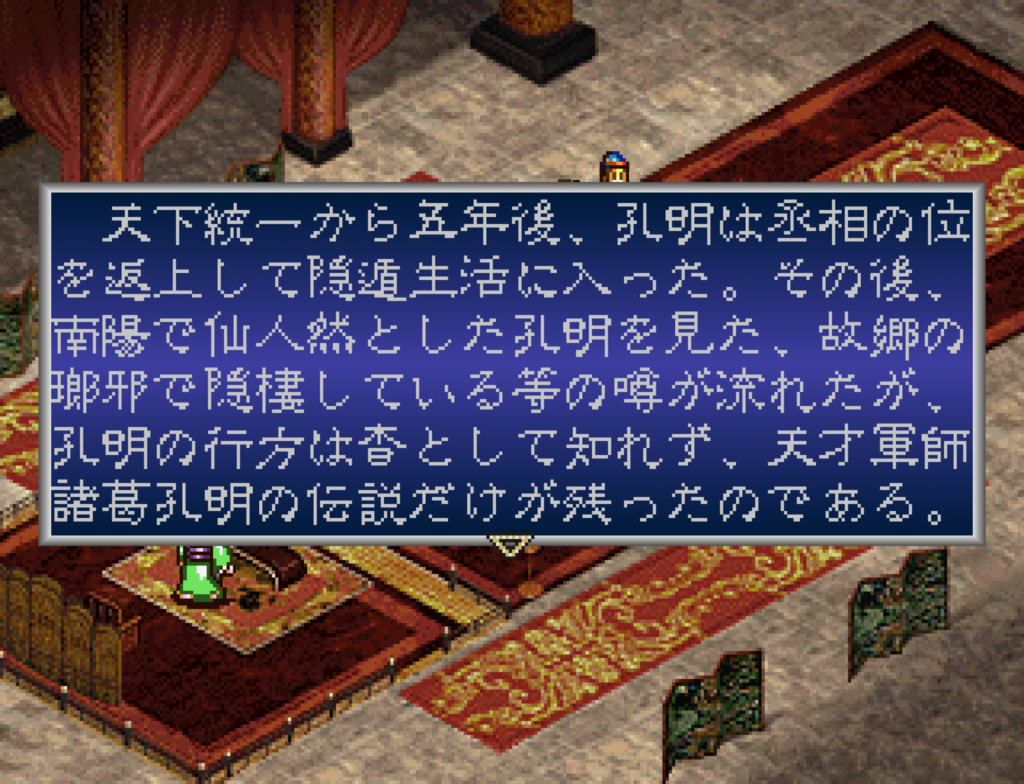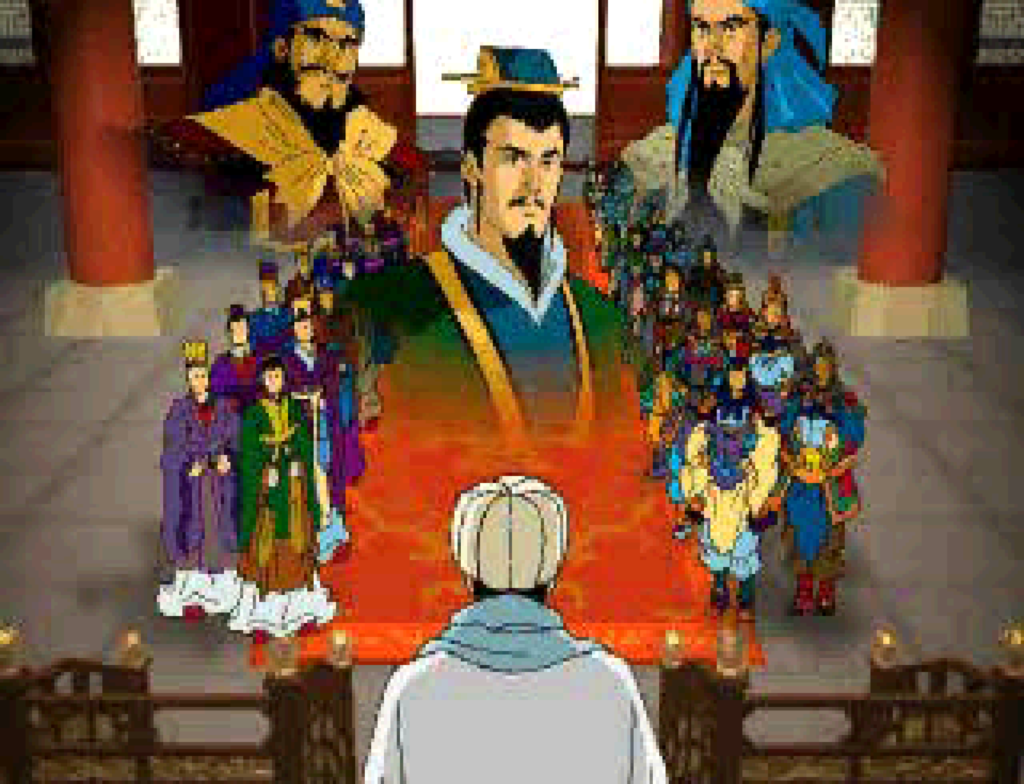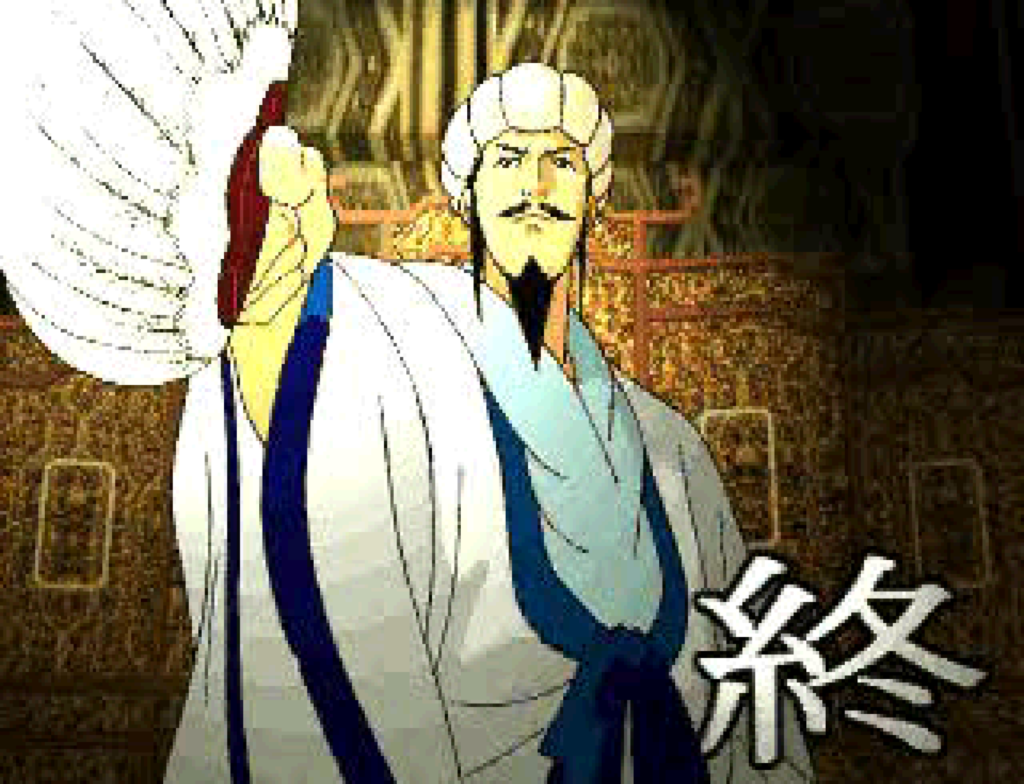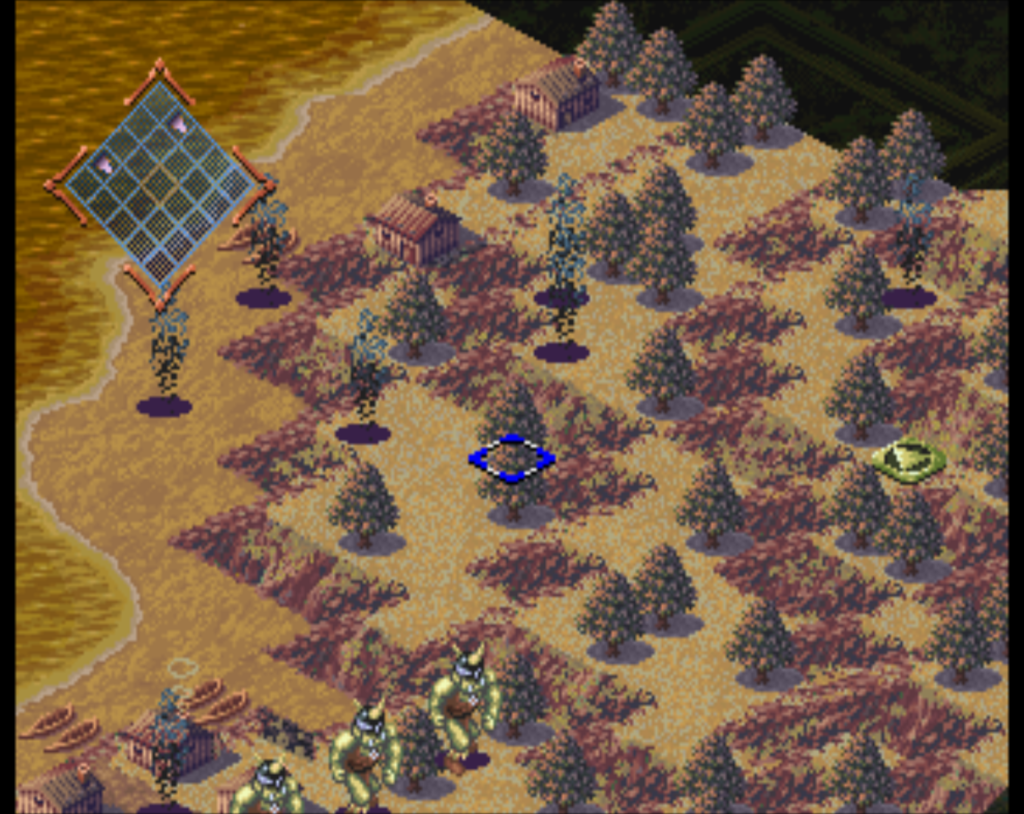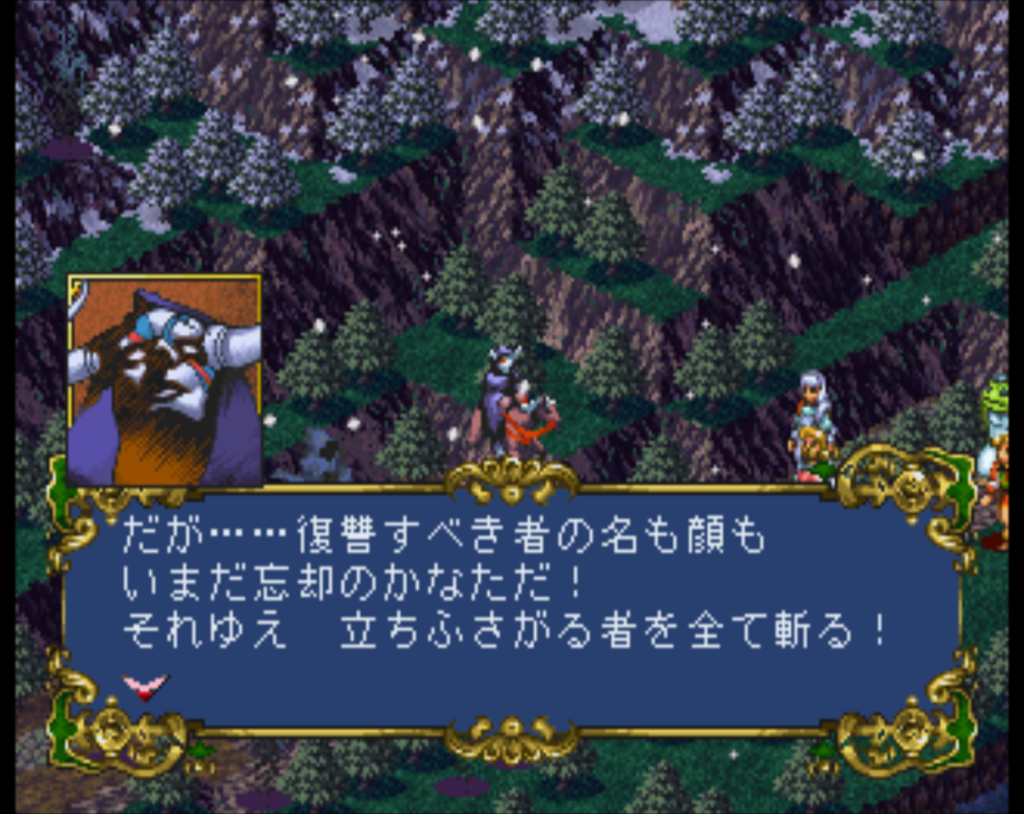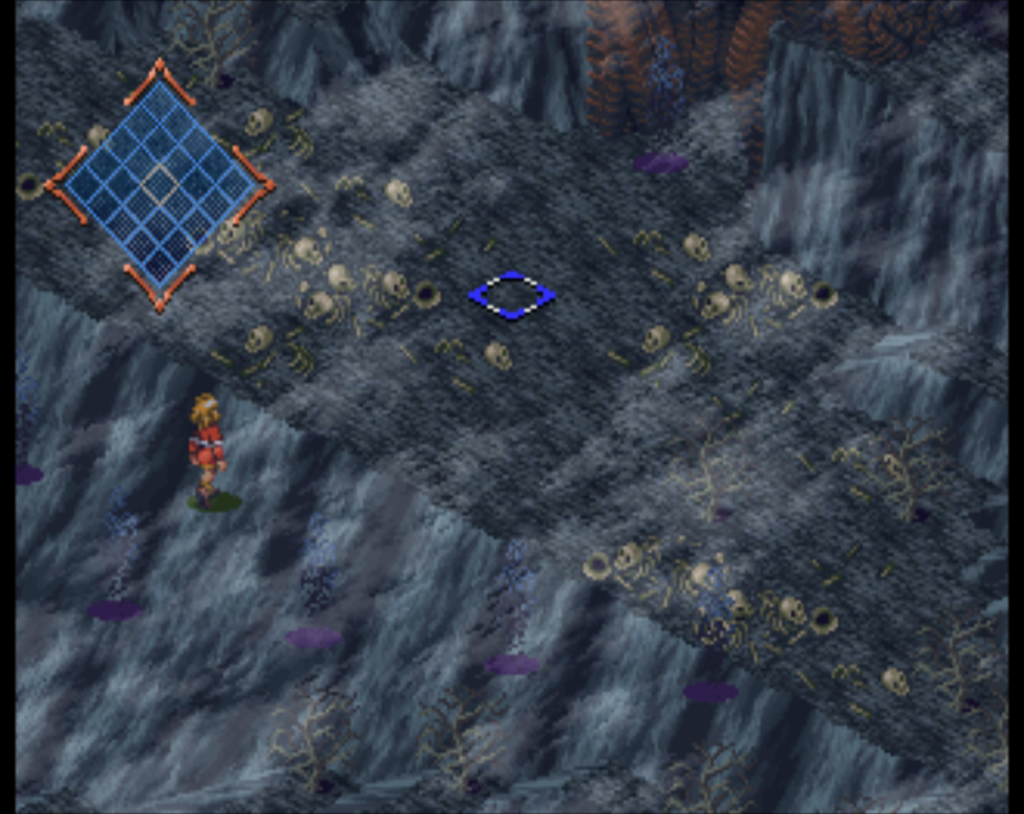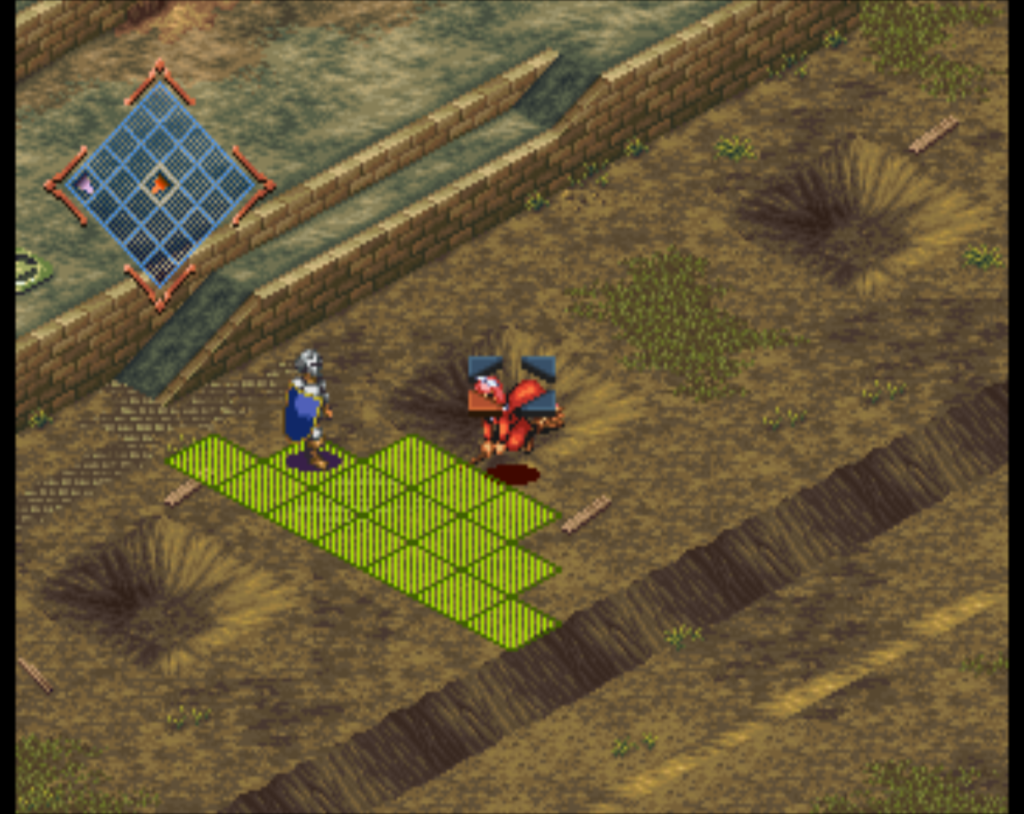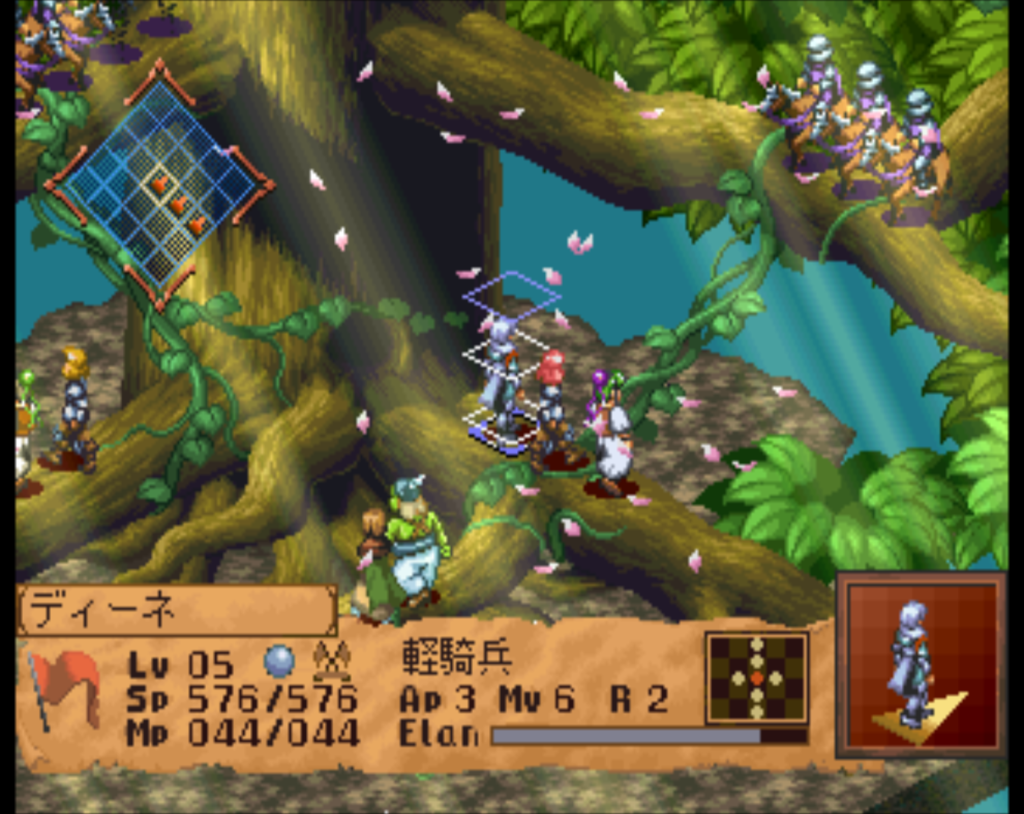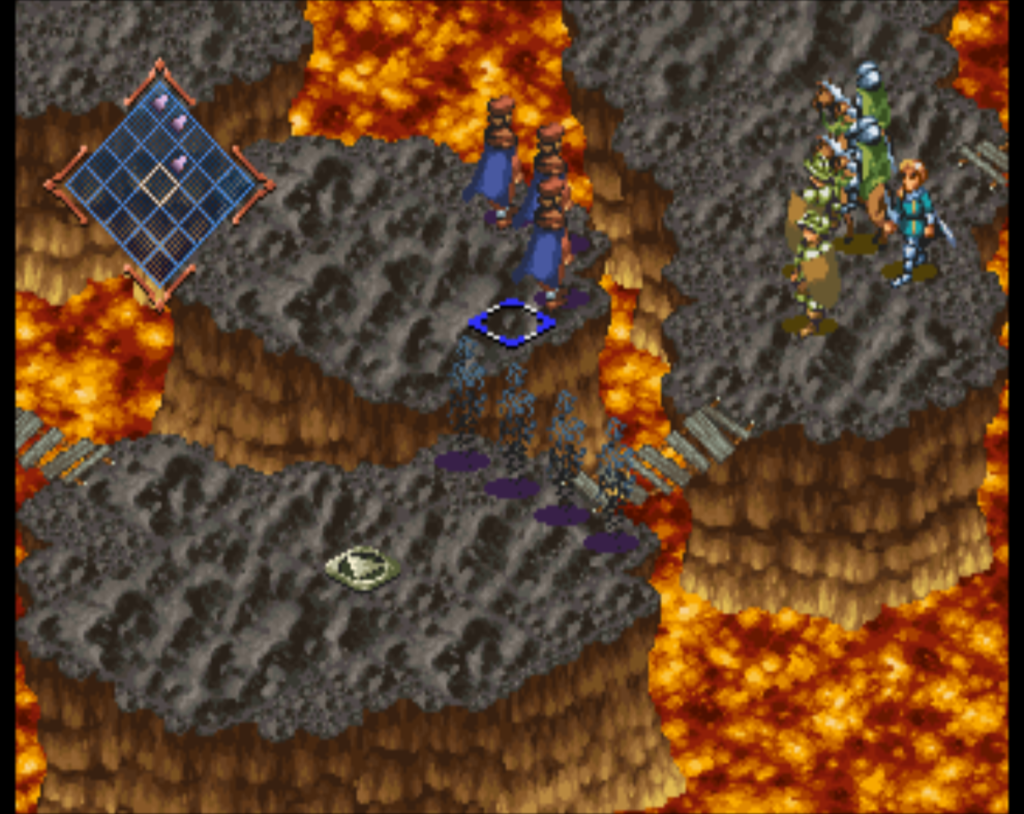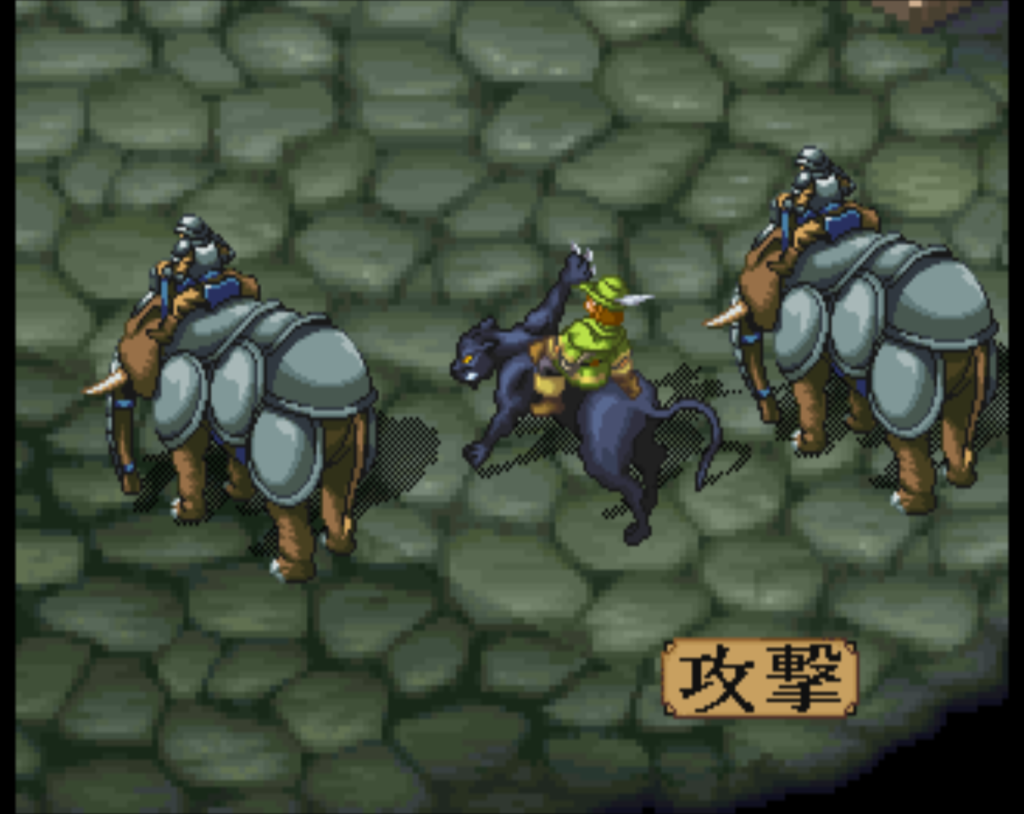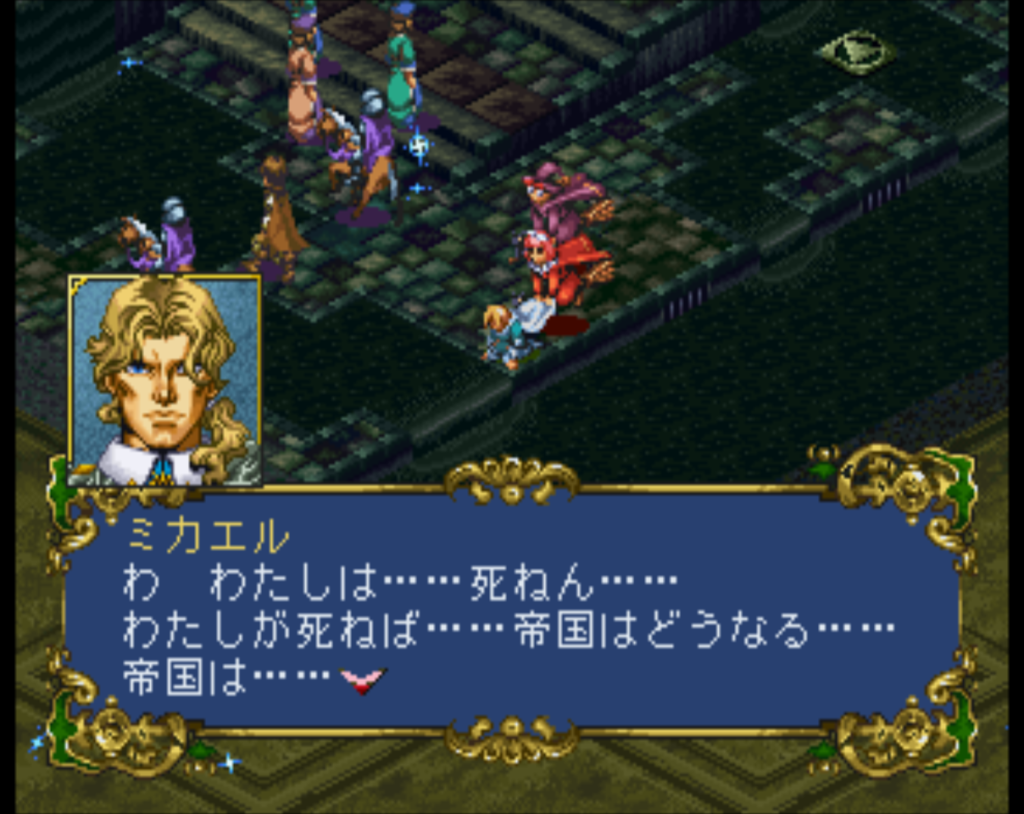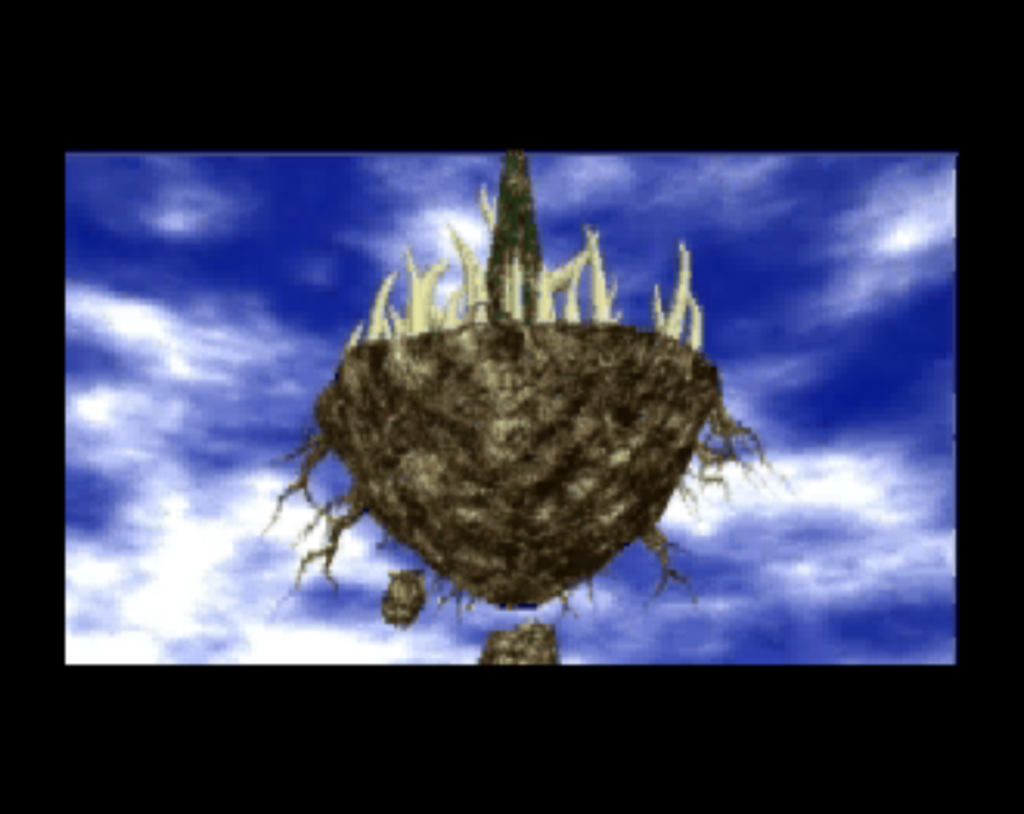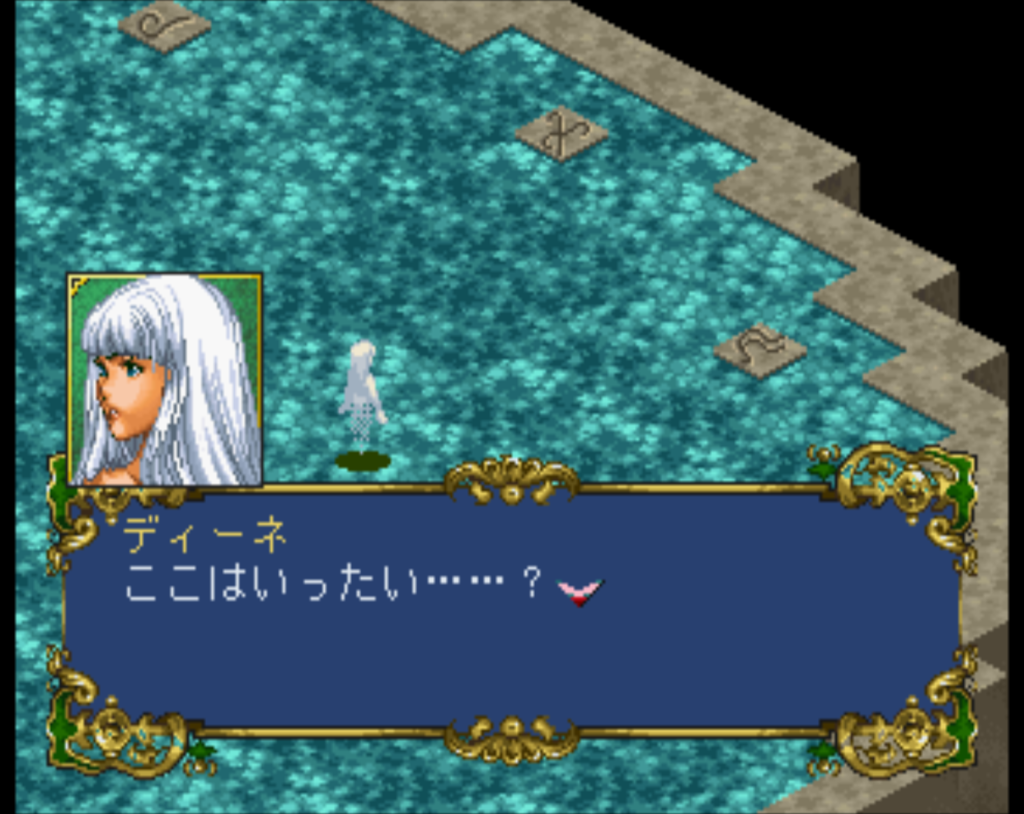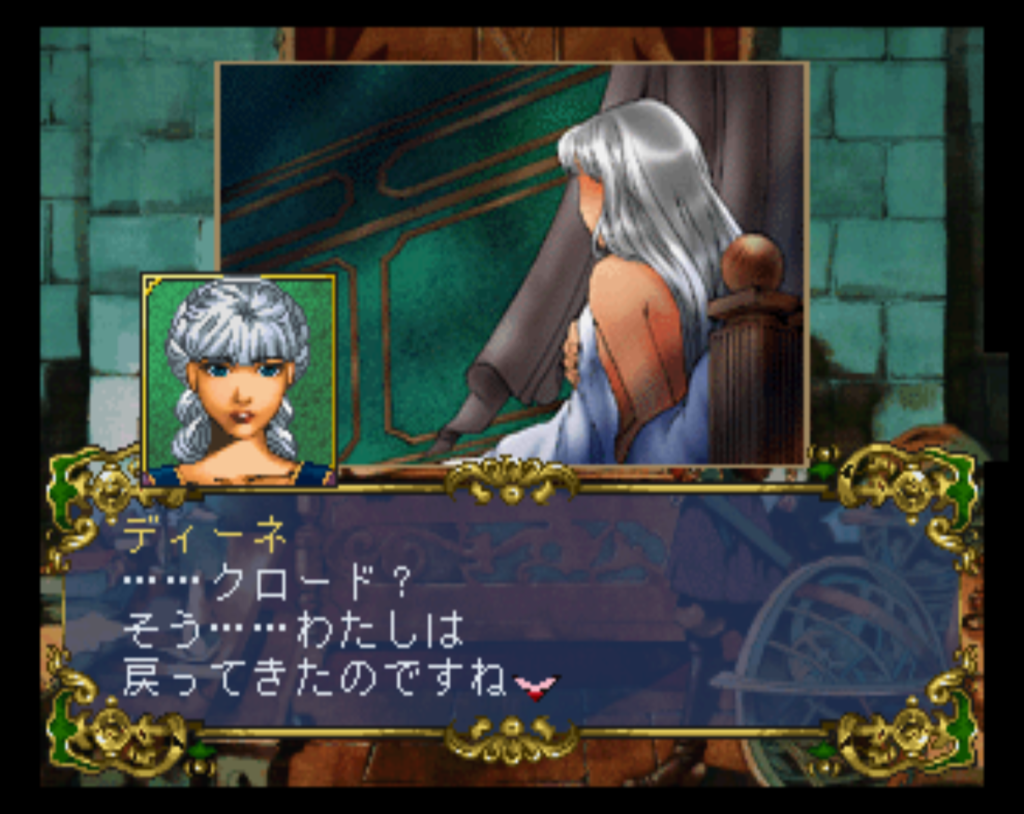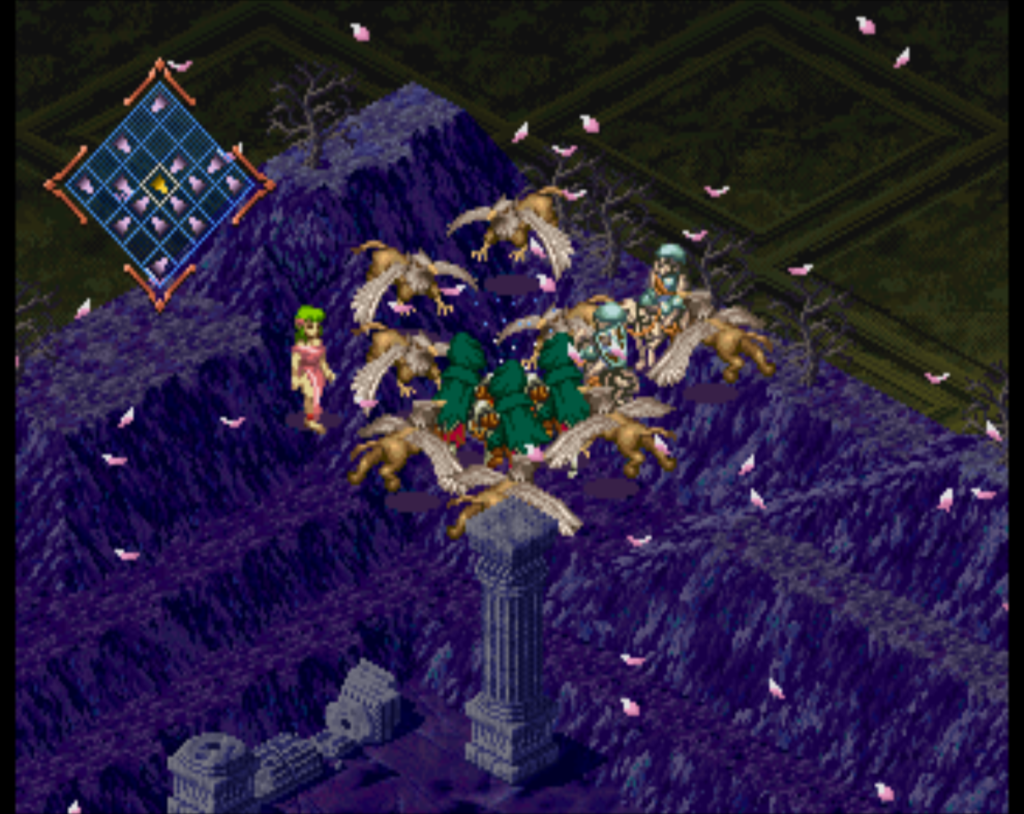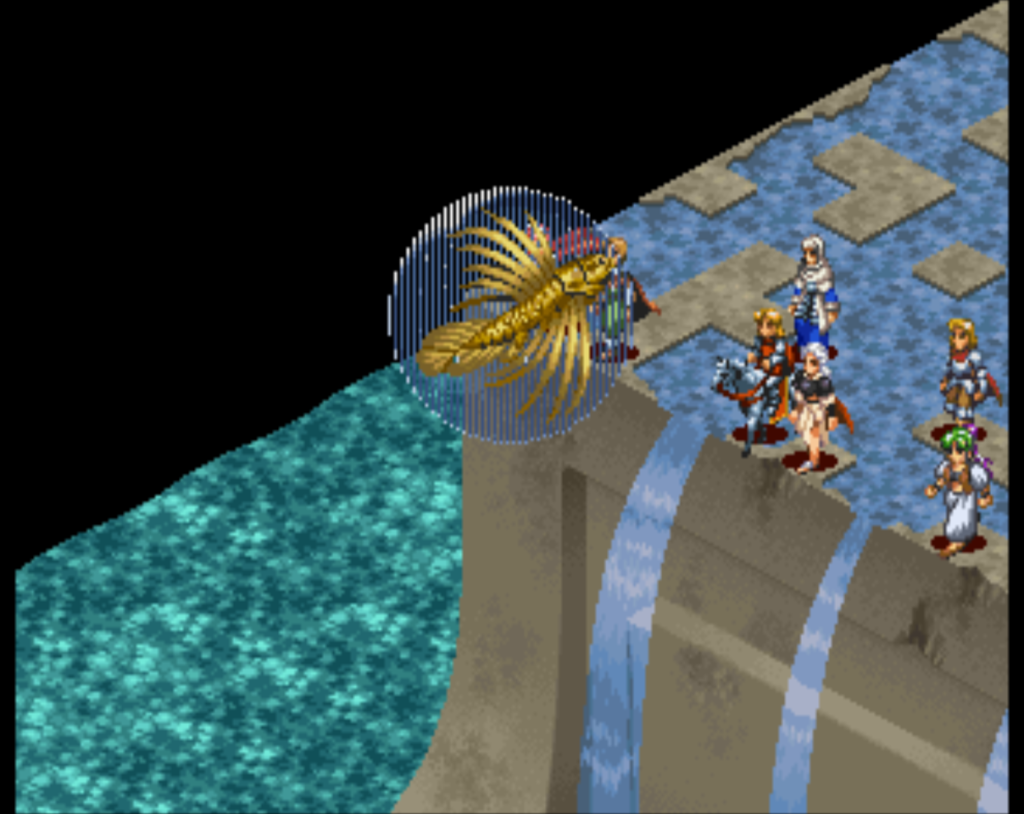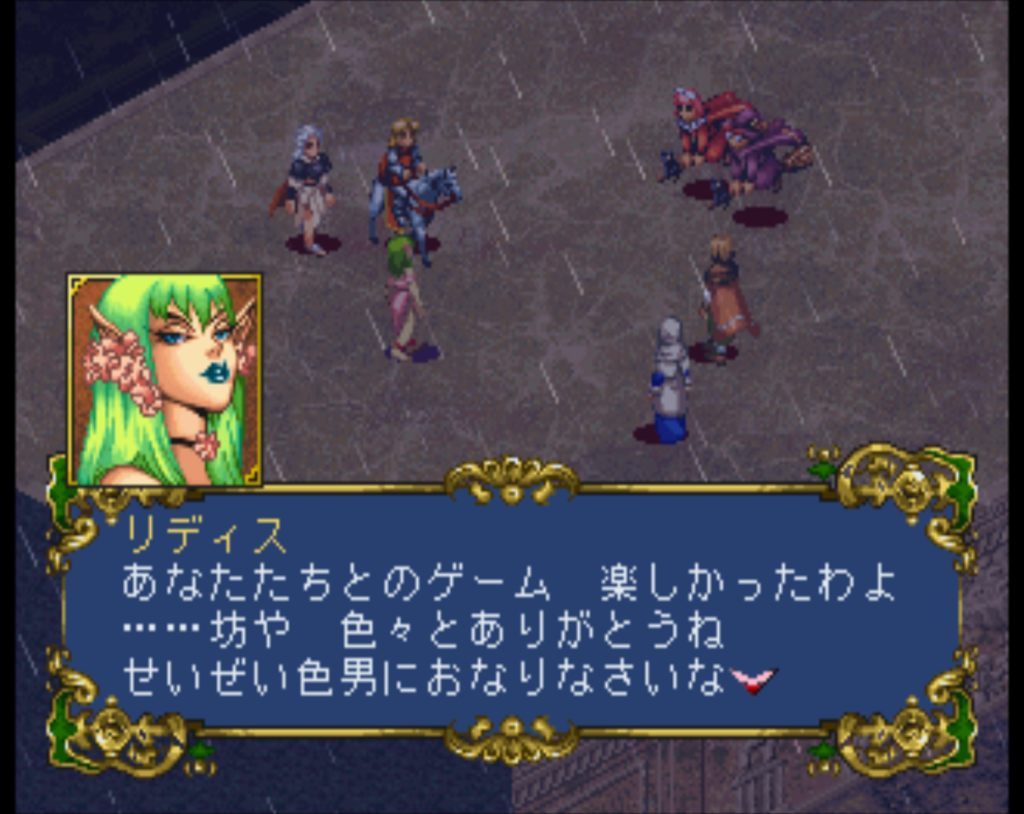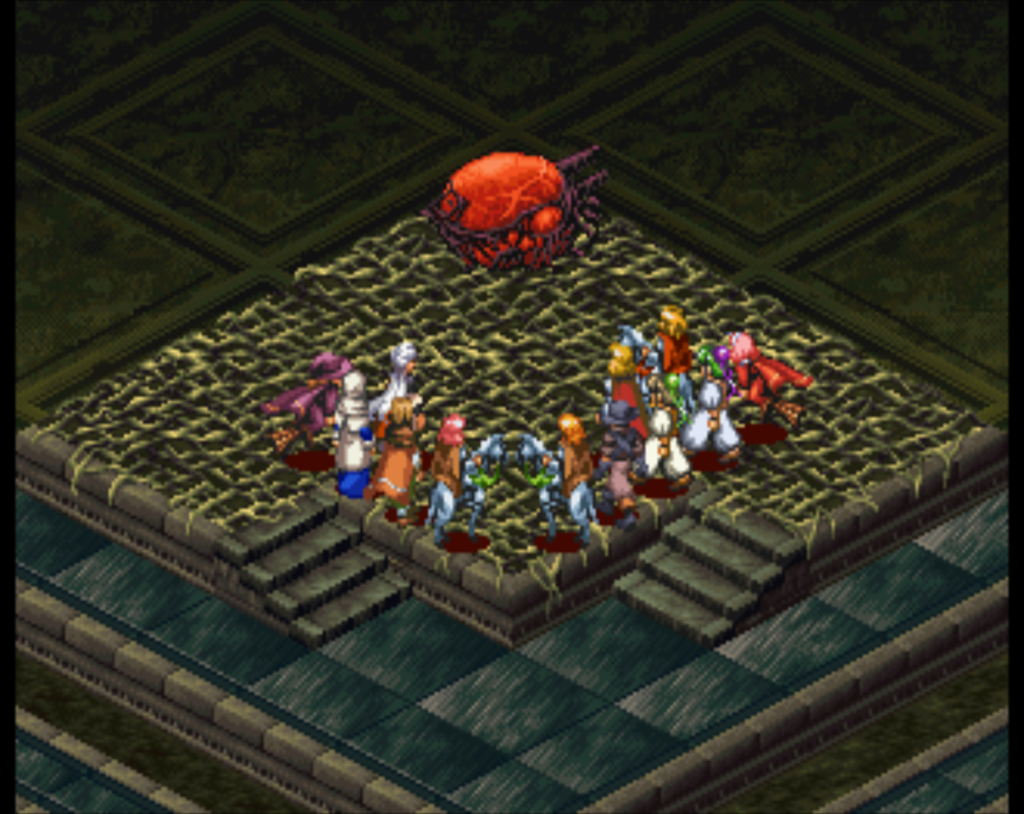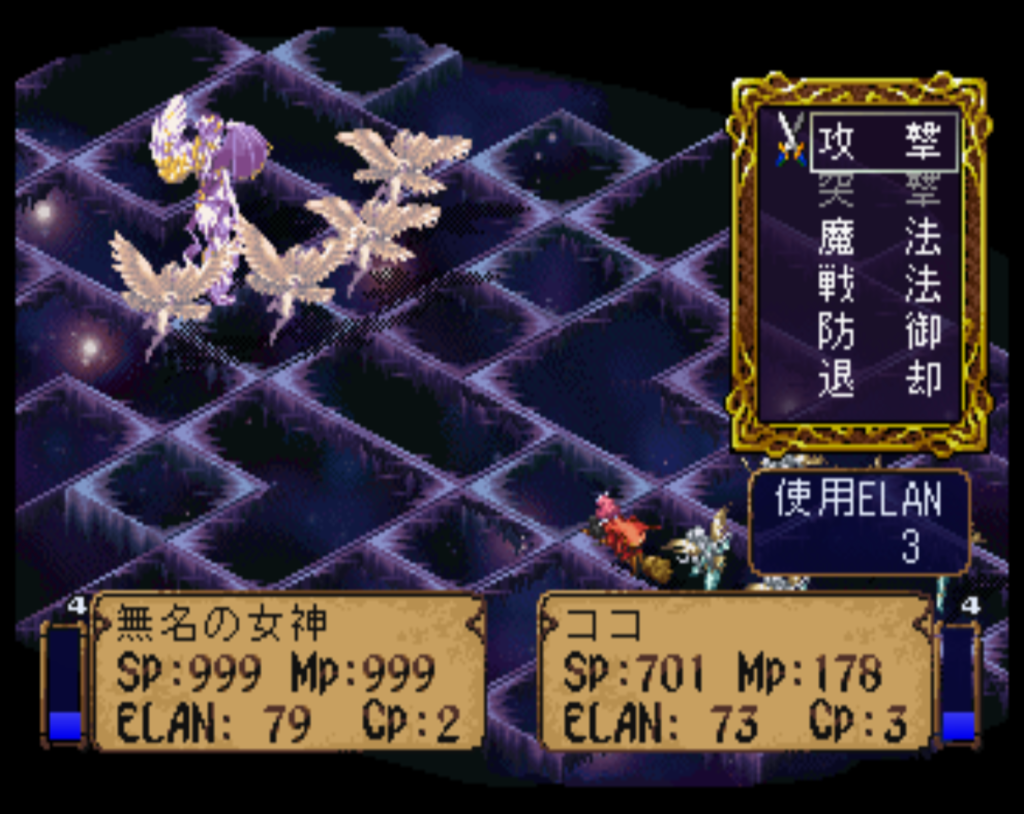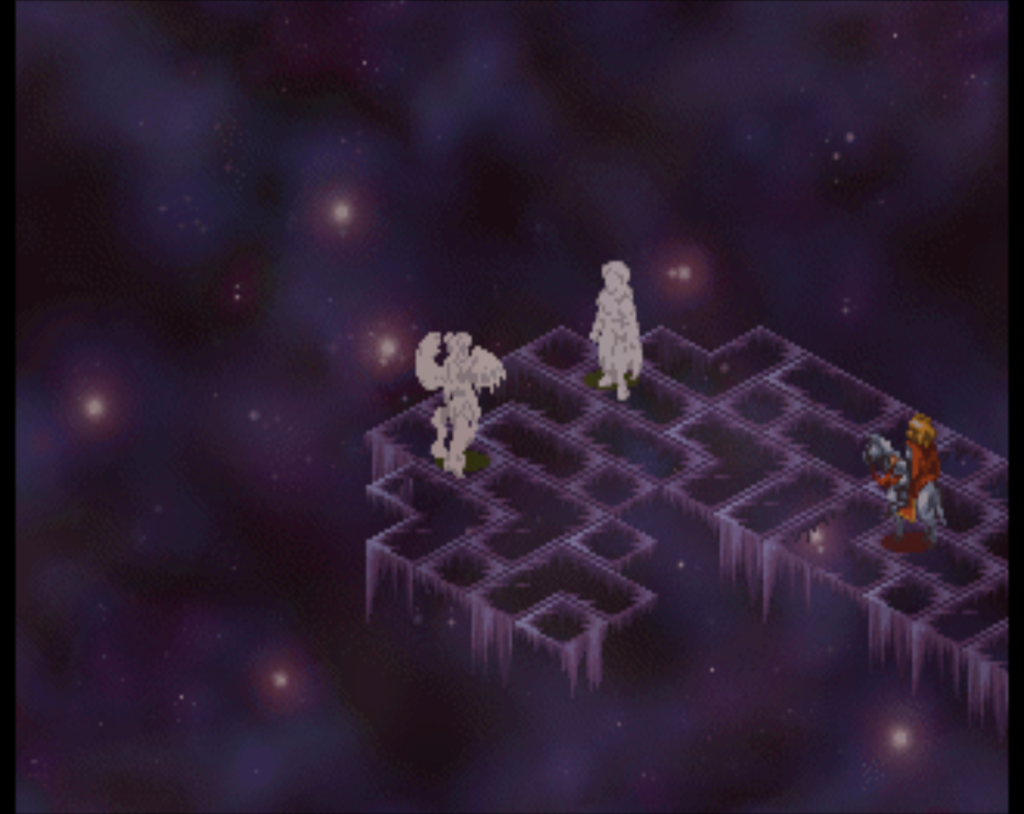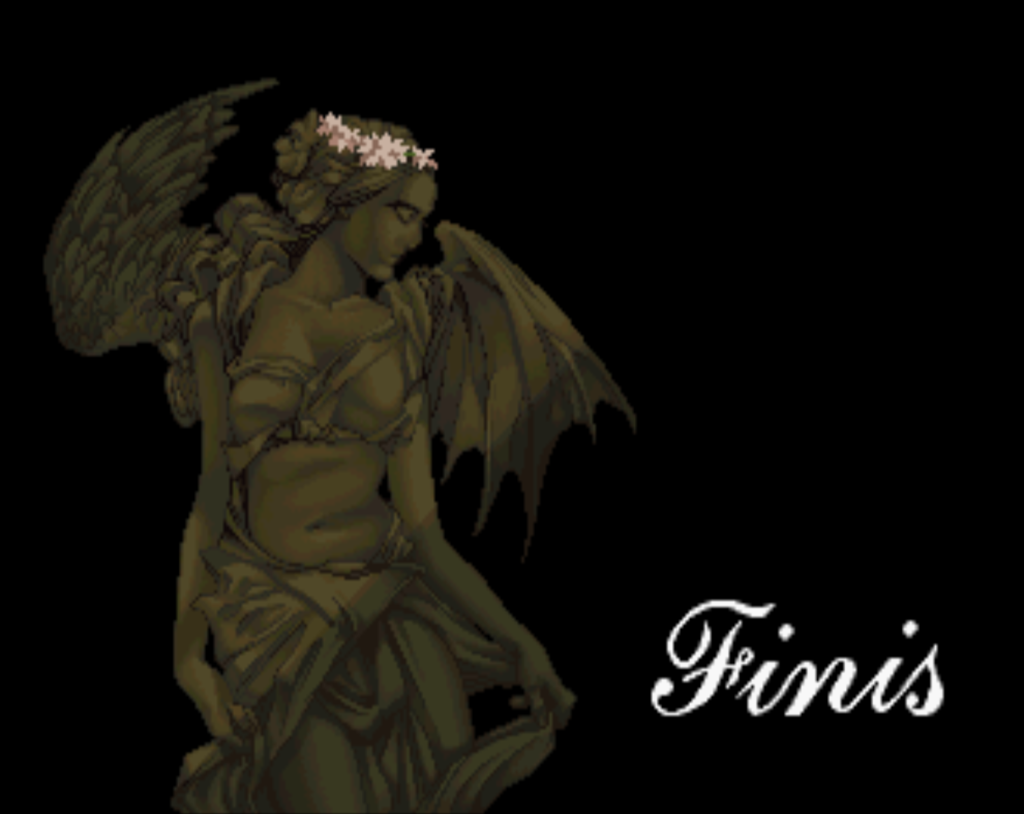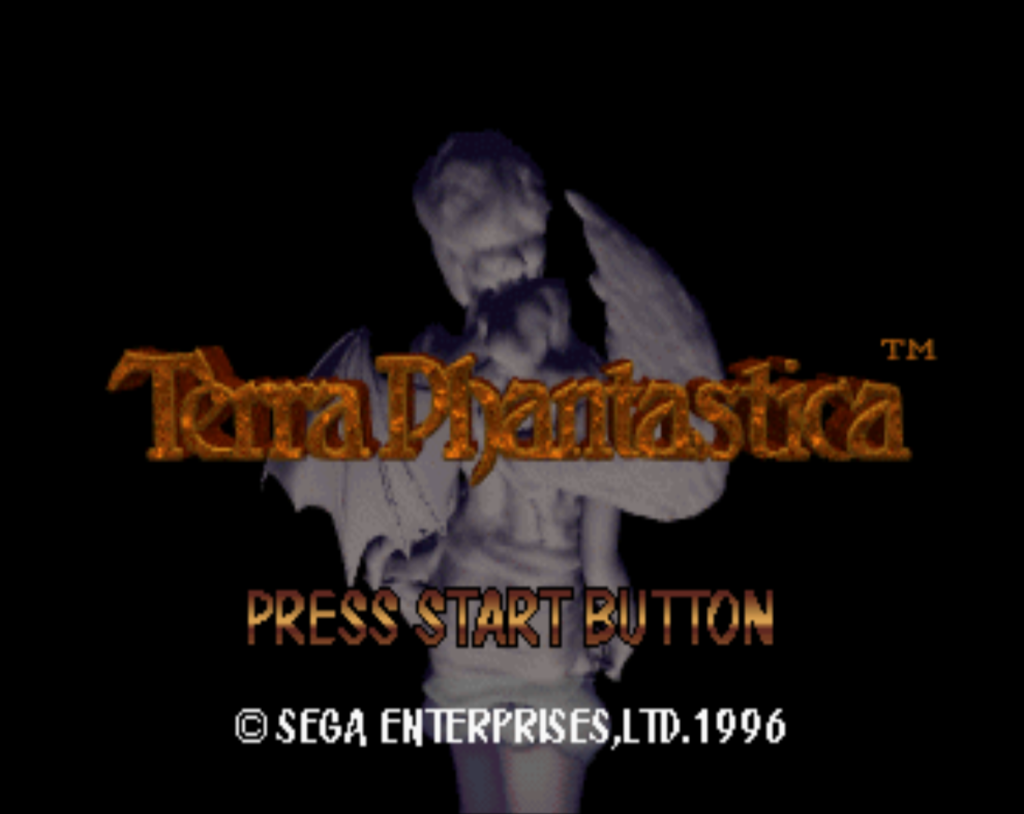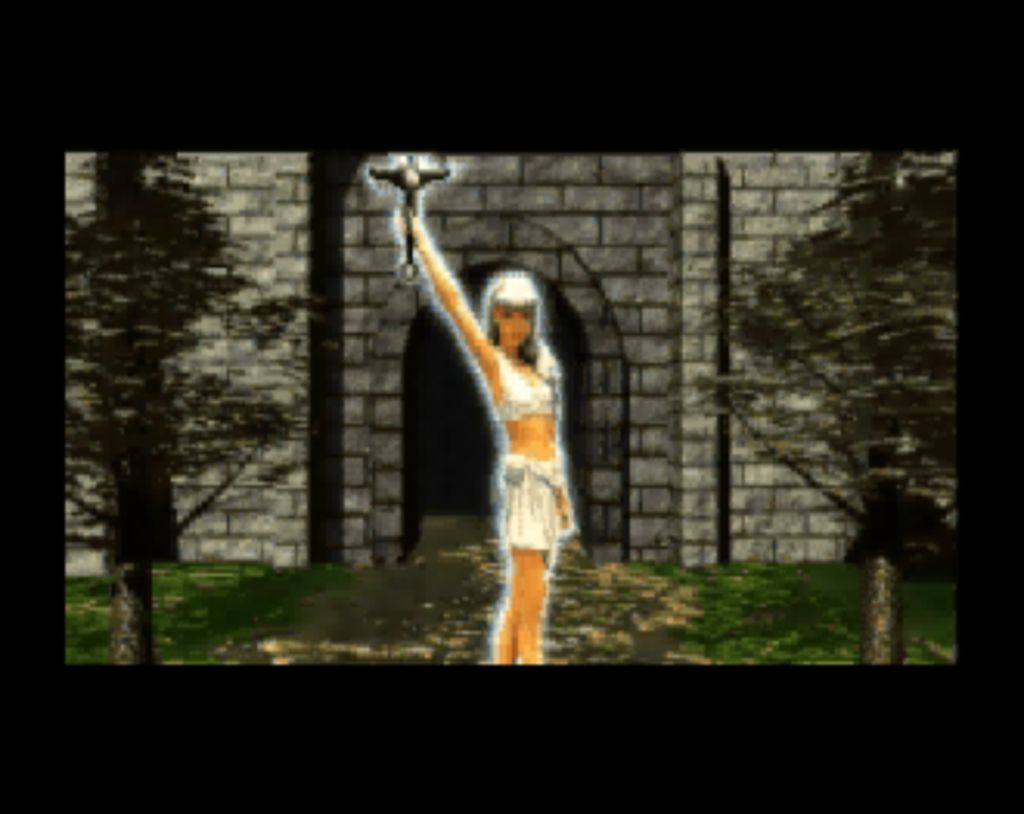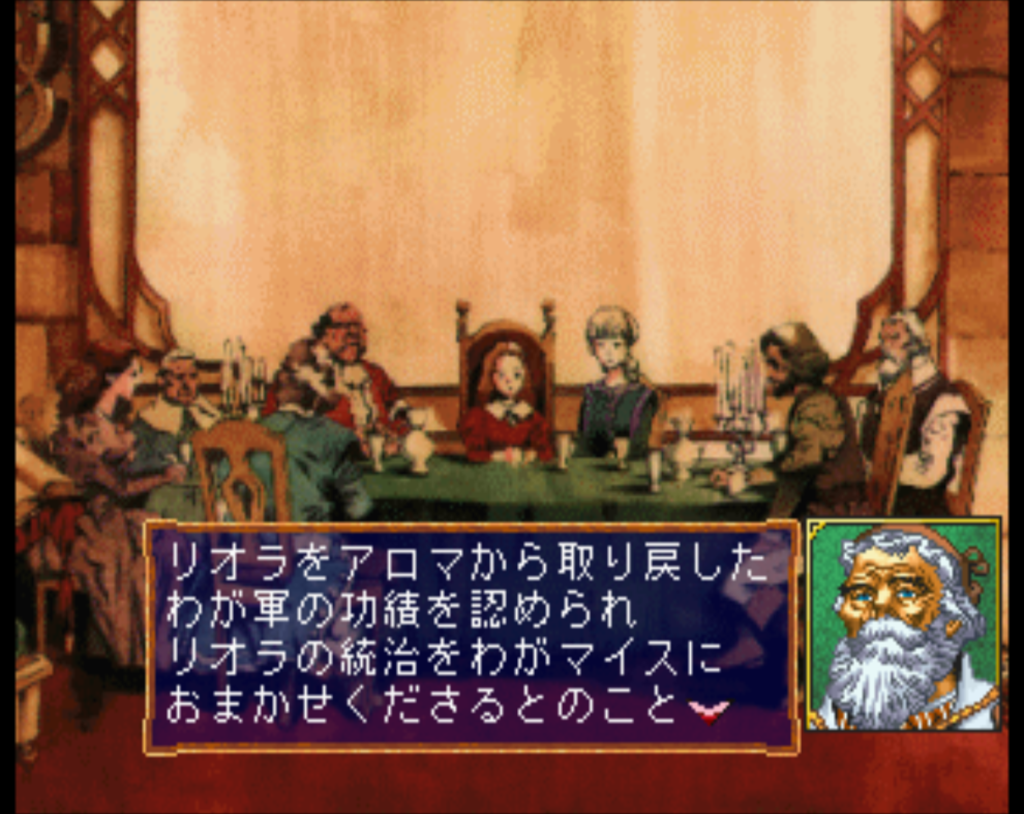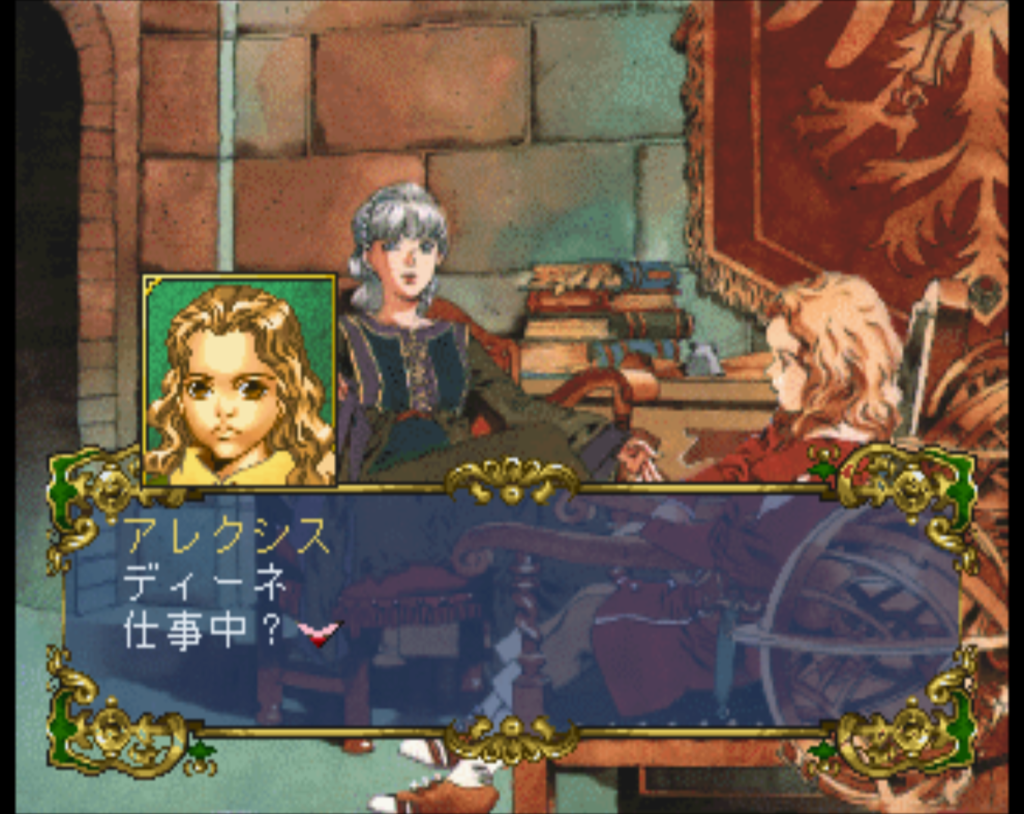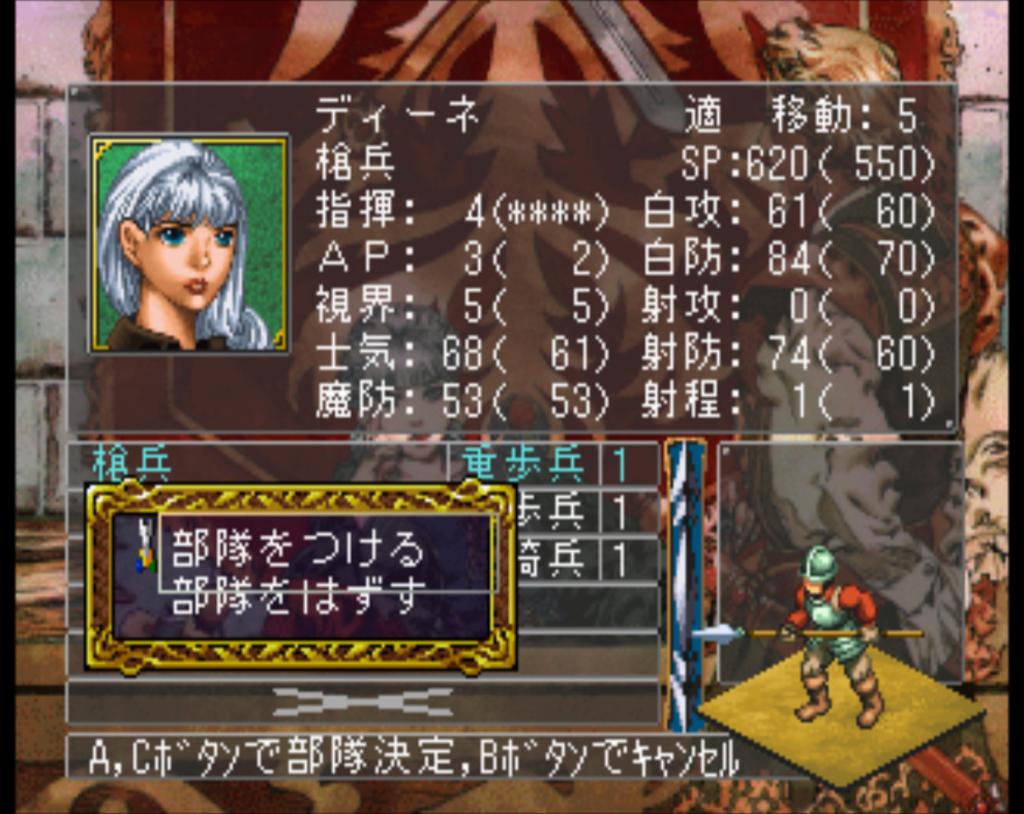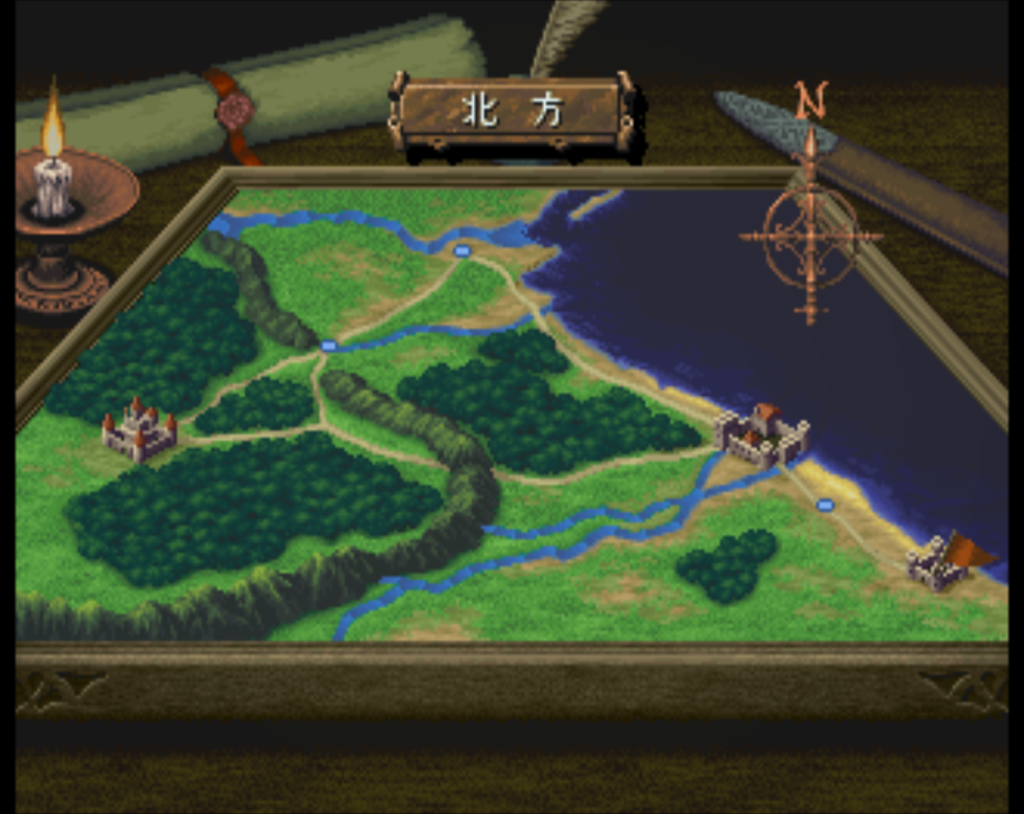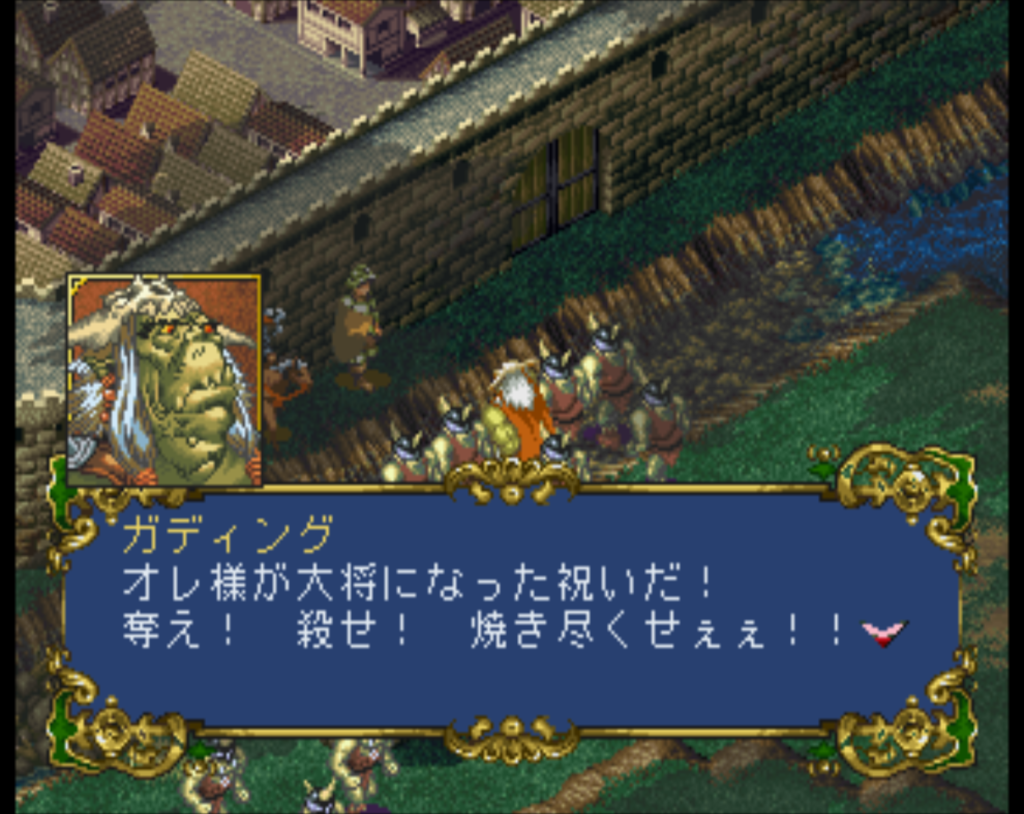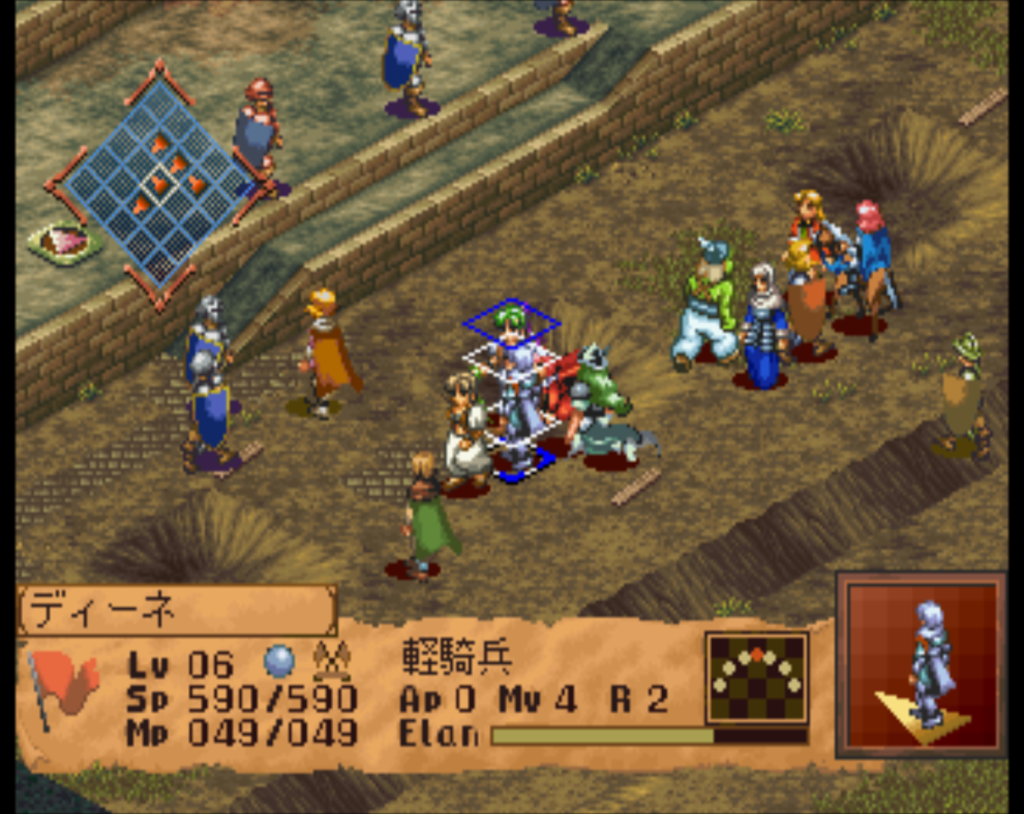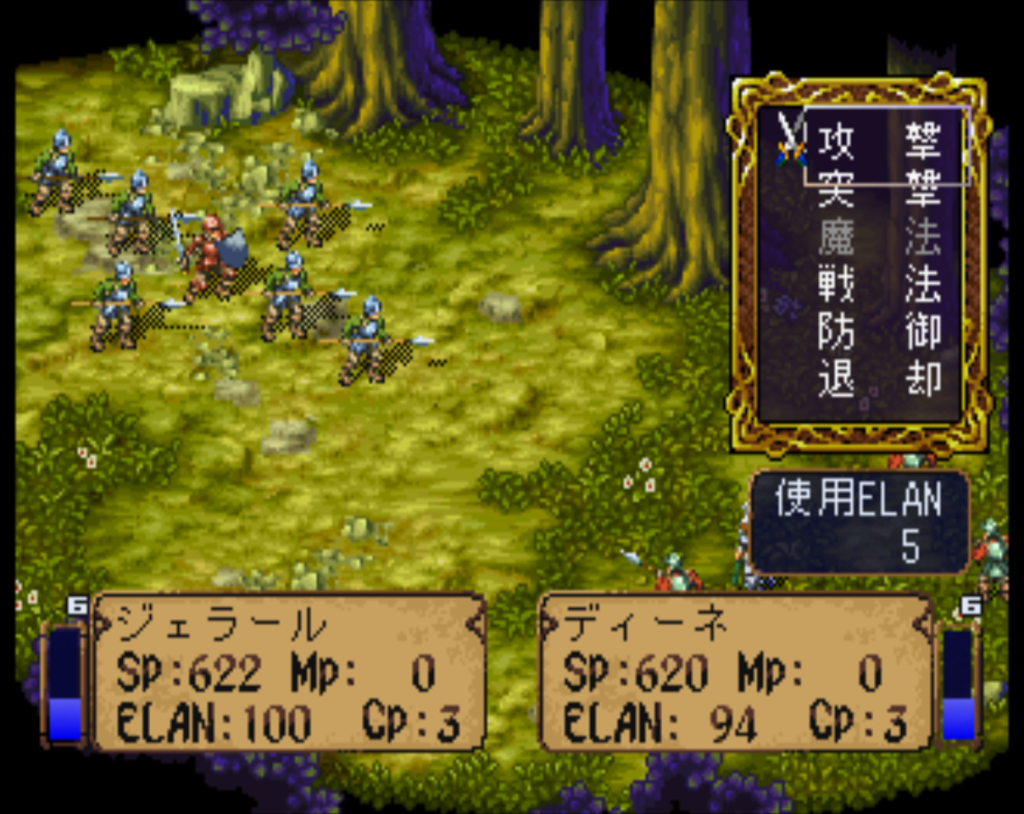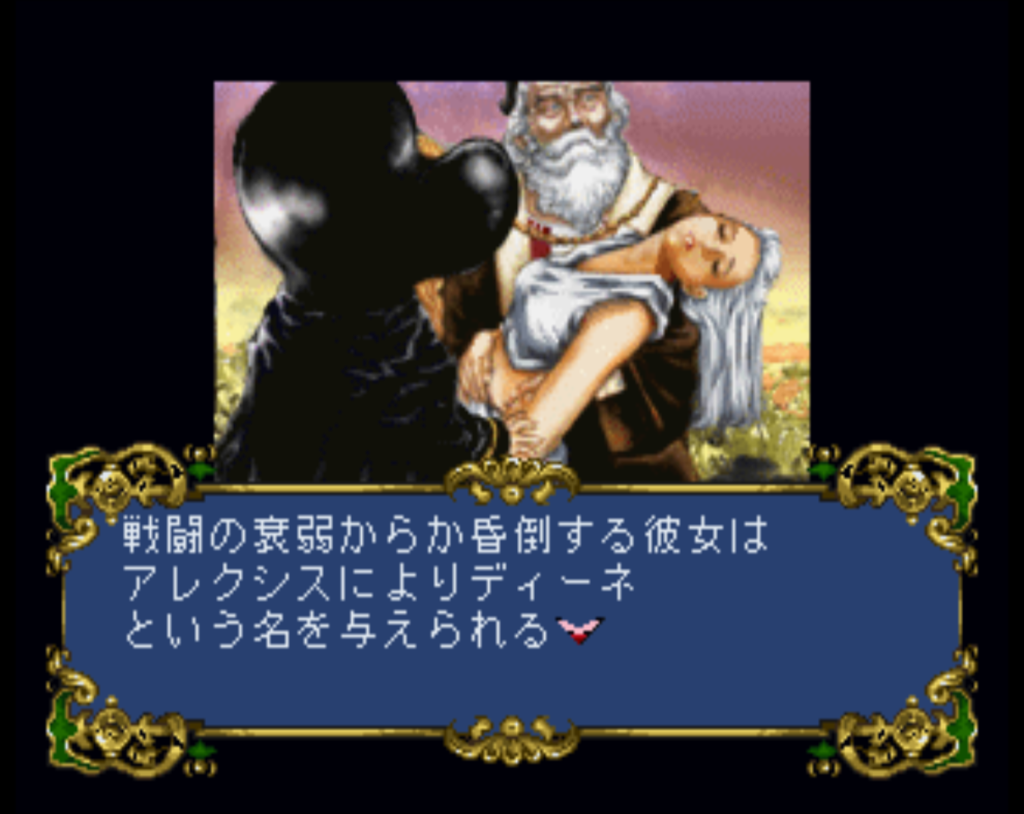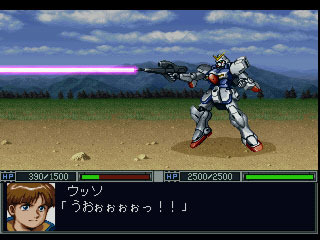Tilk: The Girl From the Blue Sea (TILK 青い海から来た少女), released 4/25/1997, developed by TGL
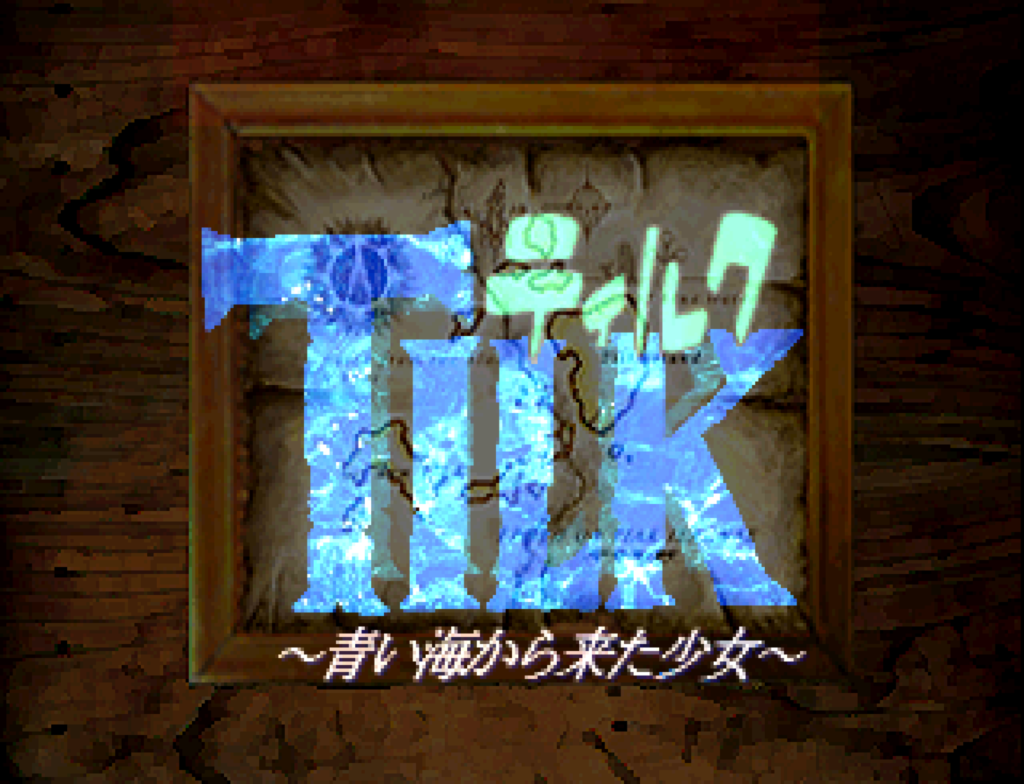
This is another obscure game, one that I did not notice in my original list but I picked it up later. It was released for both the PSX and Saturn — the Saturn version has full voice acting (I think). I didn’t find this out until after I had played about half of the Playstation version. However, the voice work sounded a bit amateurish and I had never heard of any of the seiyuu, and the ability to speed up the battles was pretty important so I’m fine with the Playstation version.
It’s also an unusual experience for me. Usually I value gameplay above everything else, and I always say that a good story can’t save bad gameplay. I was proven wrong here though — based on my criteria this gets an A rating because I was playing it for fun right up to the ending scene. But objectively speaking the battle system is not good, and the interface has a lot of problems too. Thus the A- rating. So what I am going to do with this post is first describe the system, and then spend the rest of this post (and maybe another one) telling the story.
First off, I really like the graphics.
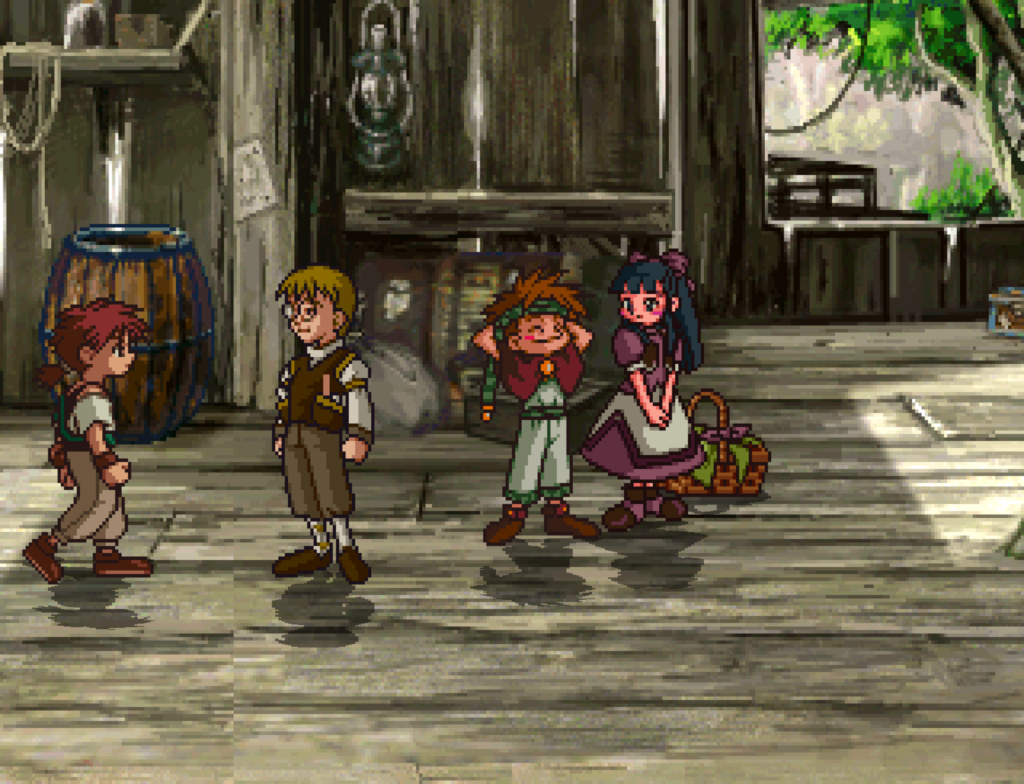
The sprites and the backgrounds have a great feel to them that accentuate the story. But let’s get to the battles.
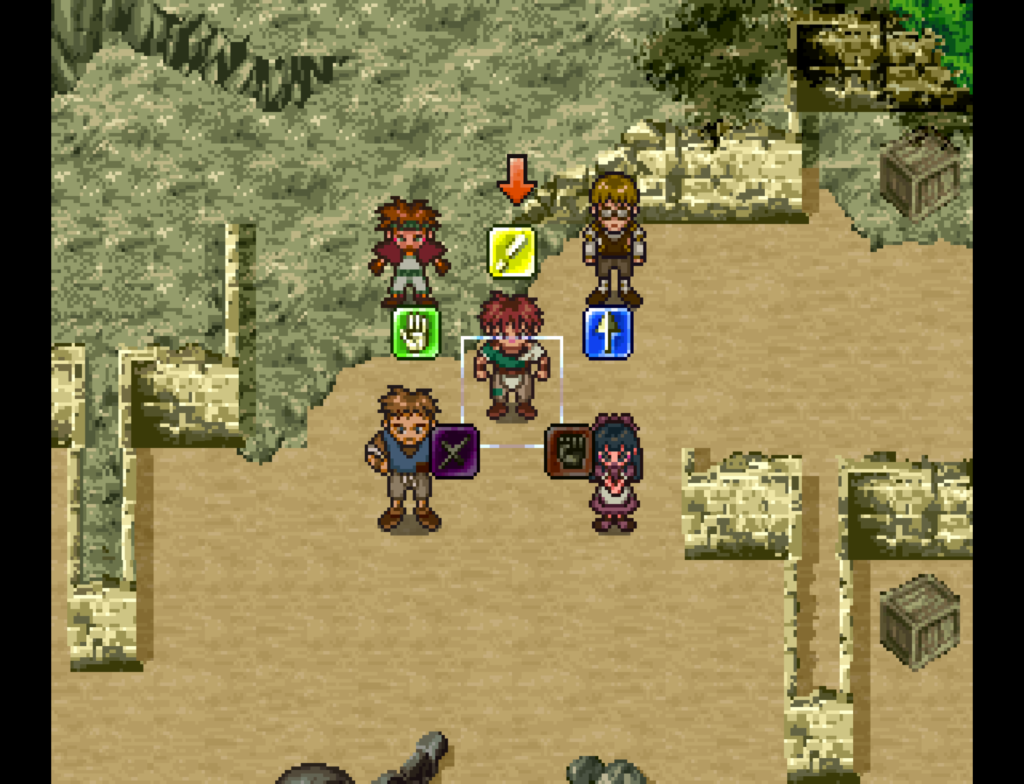
The game proceeds in sequence from one battle to the next. You can only save in battles, and the only time you can do status screens is before a battle, where you can equip up to 3 accessories, and if you have more than 8 people, choose which 8 you want to send out. Once in battle, it’s typical player turn-enemy turn, you can choose the order.
Everyone has pretty low movement rates. You can attack (everyone has a range-1 attack and a range-2 attack), but the hit rates tend to be lower than I would like. There is a weapon-triangle like system with each character having a certain affinity. Special moves are 100%, but neither the instruction booklet nor the game itself tell you what most of them do. You can use items freely without taking turns, but the only way to get items is the treasure boxes in the stage, so you have to be careful. There is also a “wait” that changes your stance to raise or lower stats, and a “field action”. This is supposed to let you do things like roll barrels but it’s rarely useful, and often involves some obscure item that they don’t tell you what it does.
Movement is annoying because you can’t move through your own guys, so it’s easy to get stuck.
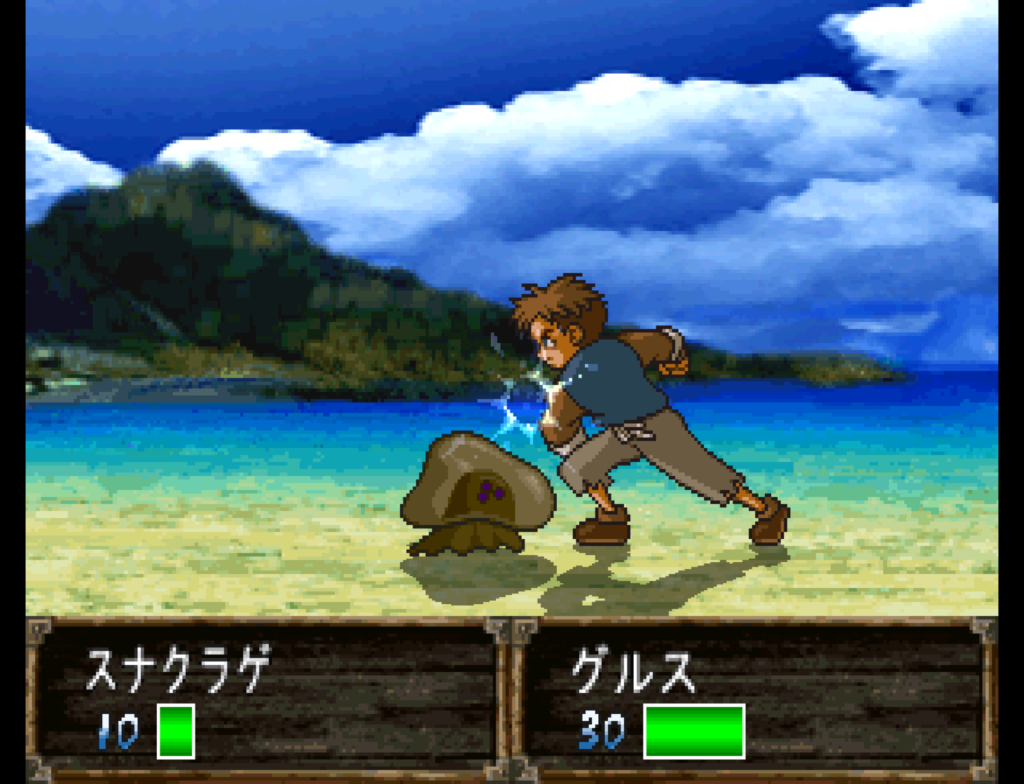
Unskippable battle animations.
Since the treasure boxes are the only way to get items you want to get as many of them as possible, but it’s not practical to get every single one on every map — it is a big waste of time in the game though to keep one enemy alive and take 15 turns tracking down all the boxes. Healing items are particularly valuable because you don’t get many good techniques that heal.
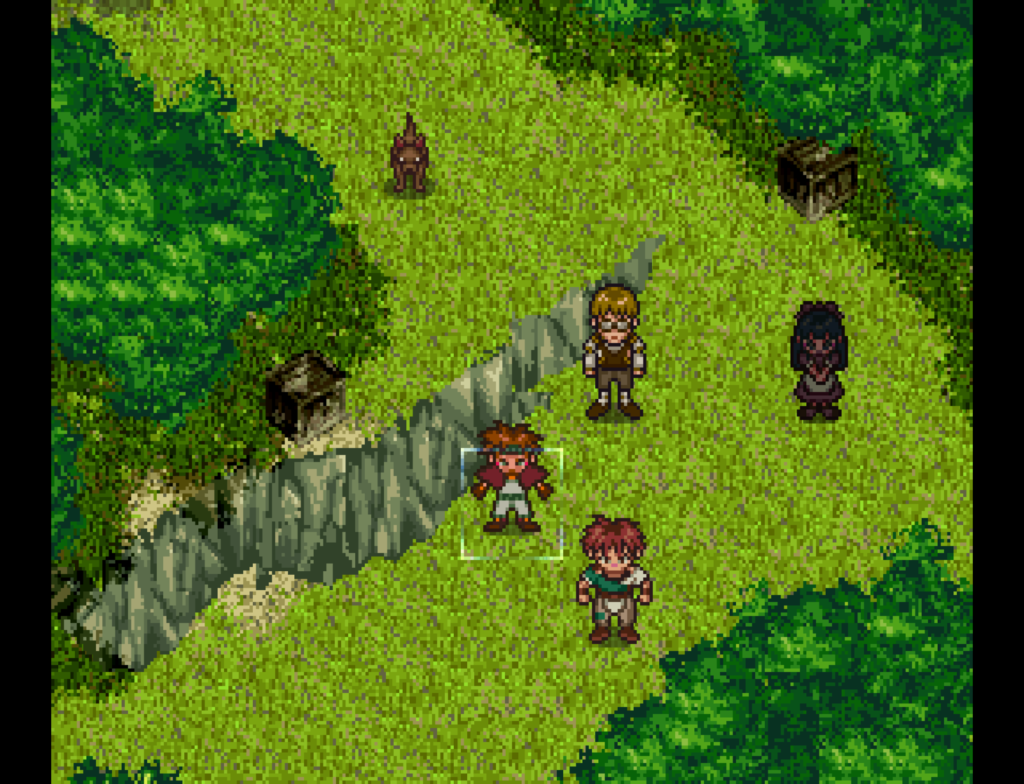
The goal is usually beat all enemies, but some maps are “beat boss” or “reach a certain point on the map”.
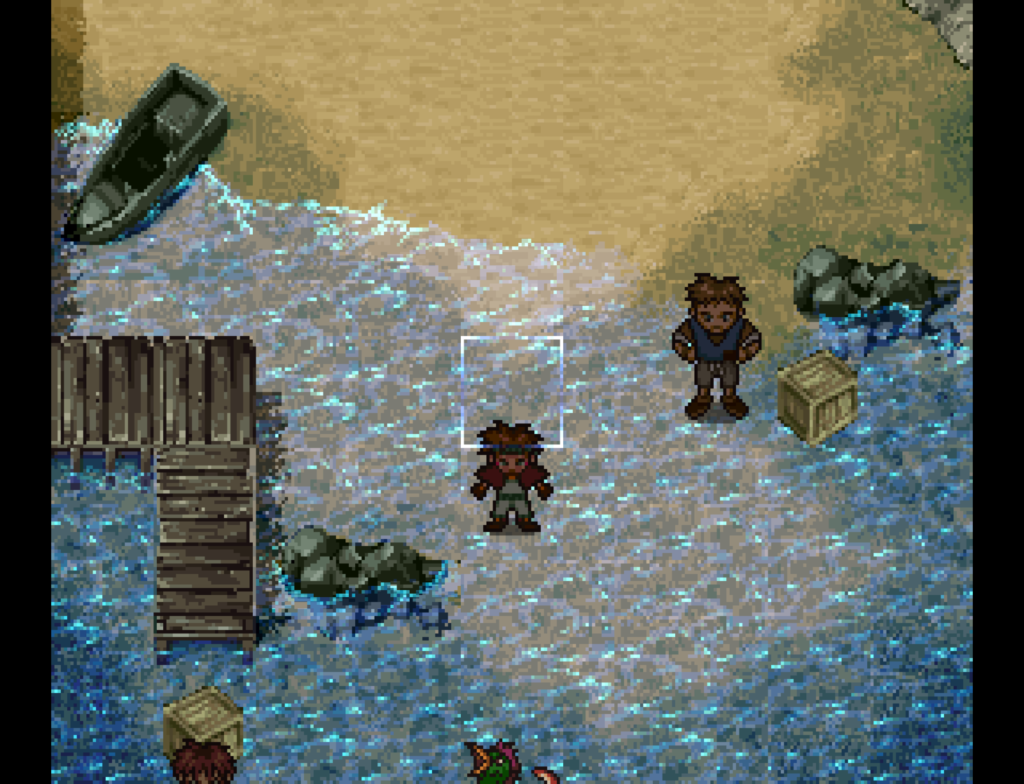
So unfortunately the battle system pretty much stinks. Once you get used to its quirks it becomes a bit less annoying, but it’s never a whole lot of fun, and you definitely want an emulator with speedup.
So let’s get to the story and setting with the Prologue chapter “Boys of Tilk Island”. The text and pictures won’t capture the detail and charm of the game, but at least it’s something.
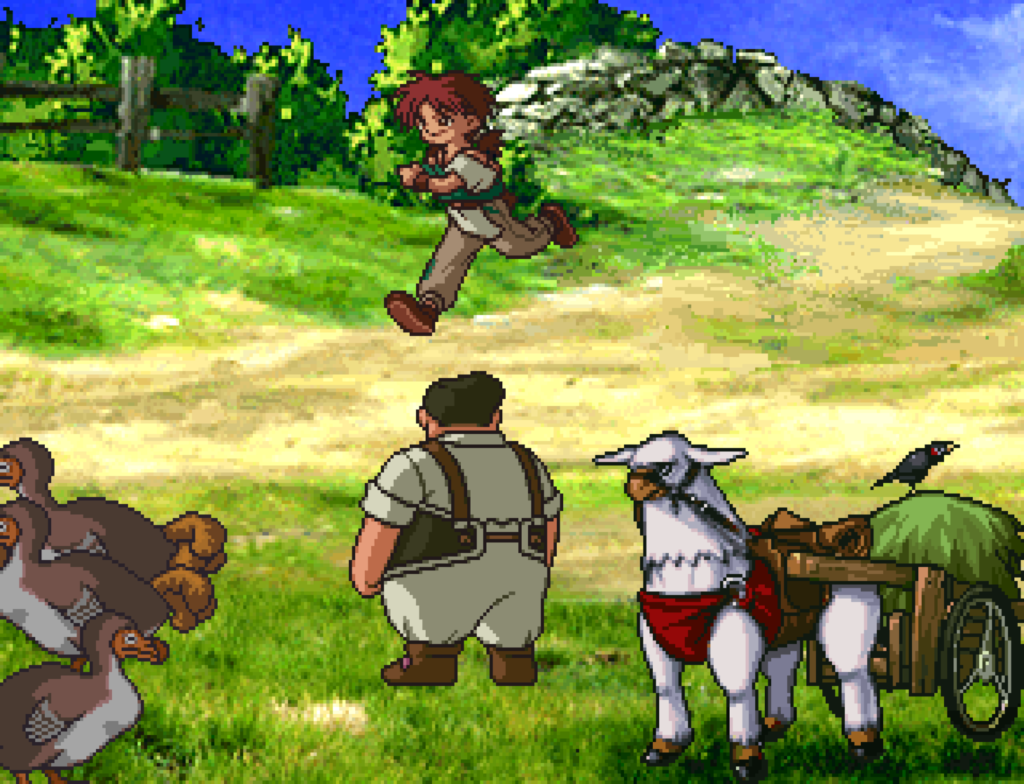
The game takes place on the island of Tilk. This is an island to the far south with rich farmland and blue seas. The main character Billy Drake is the son of a fisherman. At the beginning of the game he has overslept again, and races to the treehouse to meet his four friends. They are Fon Tokun (a nerdy scientist type), Meril Fount (the lone girl), Pack Myson (the son of a shipbuidler) and Grus Ganto (a big strongman).
At first the kids waste time by going down to the ocean to beat up Sand Jellyfish and visit the local farm to see baby animals, but eventually they decide to visit a nearby mountain. Unfortunately this is the domain of another kid named Jake and his band of unruly ruffians (Sharks).
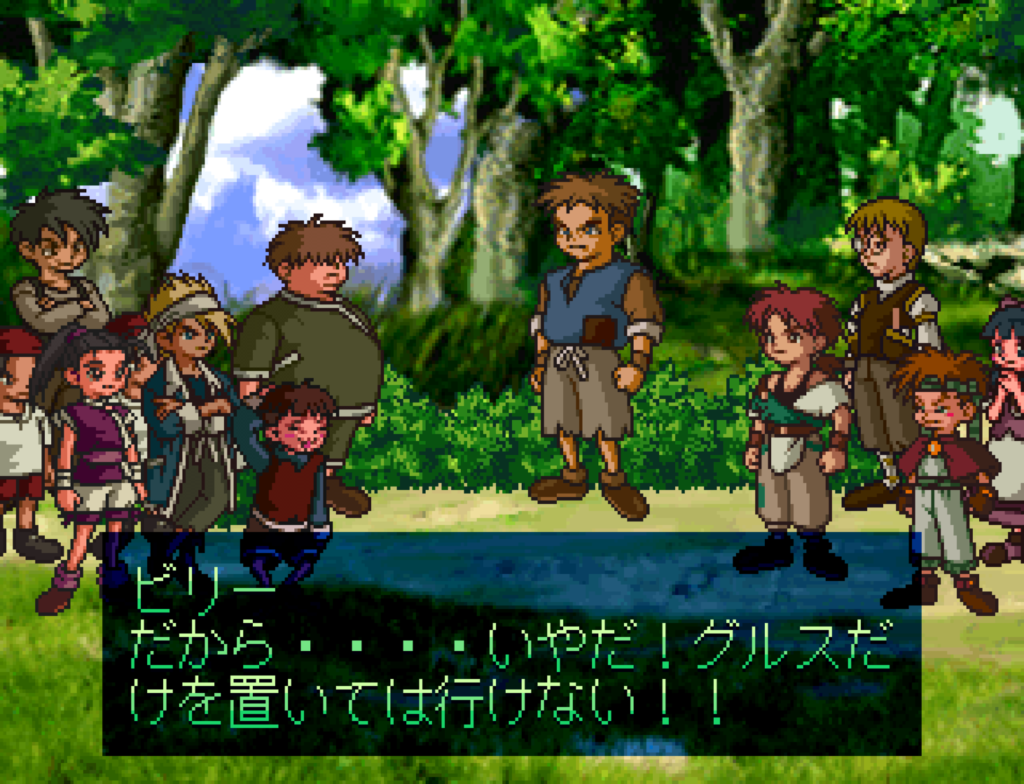
From left to right it’s Rui, Jake, Phillip, and Eric (the big one). Grus actually used to be a part of this band until Billy beat him in a fight and then Grus joined Billy. In any case, Jake doesn’t like the Billy group invading his territory. They knock the Sharks around a bit but then go home because it’s late.
The next day Billy and his friends are wasting time on the beach, looking for a rumored pirate ship that has supposedly been visiting the area. The adults tell them to go deal with some crabs that have been bothering the fishermen. After that, Billy hears some mysterious singing that nobody else does. Going to a certain place on the beach he meets a girl named Silky.
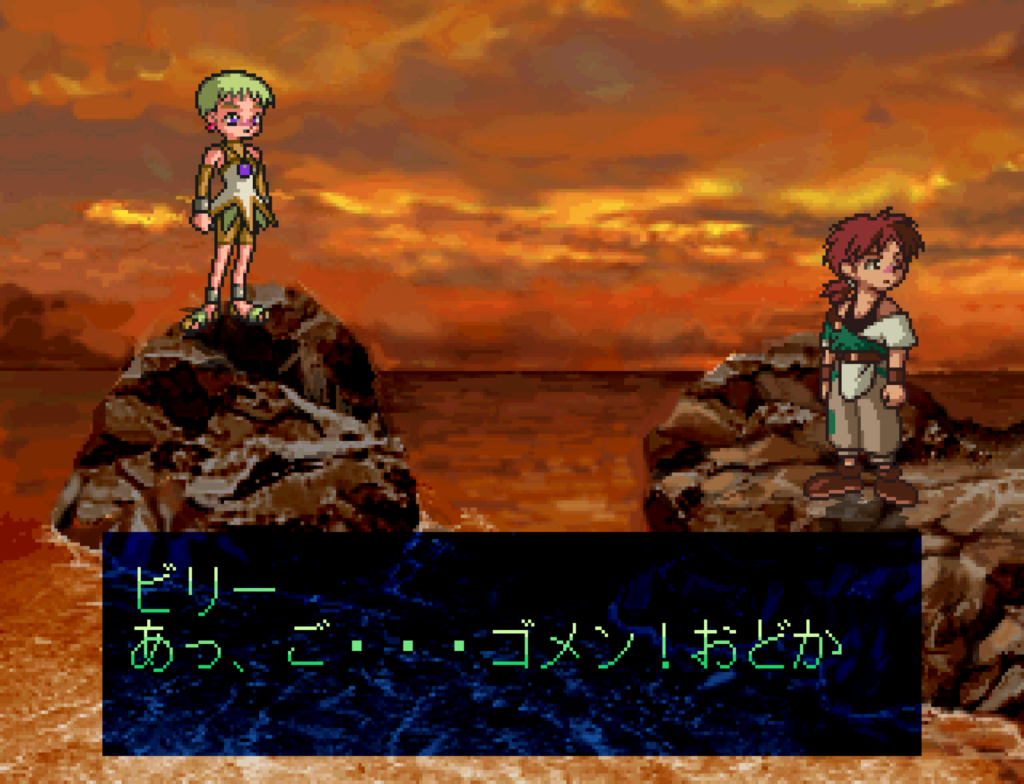
They talk for a bit but then when Billy’s friends show up Silky disappears.
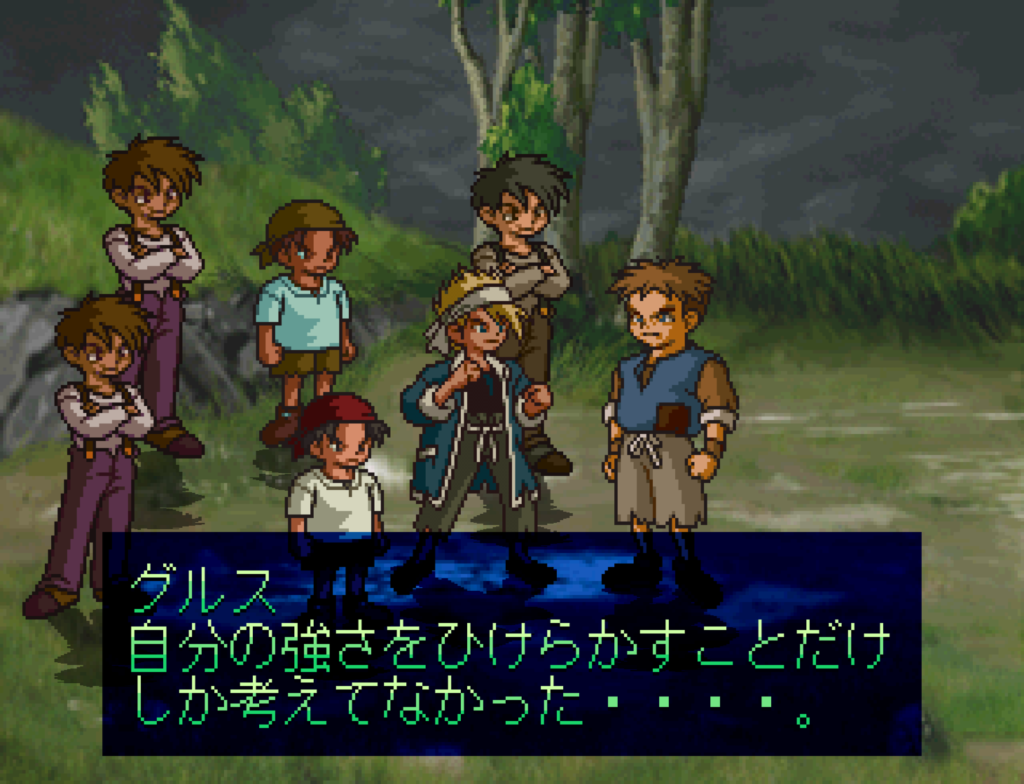
Meanwhile Jake wants to get Grus to rejoin his group, and when Grus refuses again, the Sharks attack him. (This is the hardest battle in the game; if you did not save a healing item you can go left from the start and there is a Bread in a box. That should be enough to win the battle.)
After this, the whole group decides to take on Jake’s band, and when Billy’s group defeats the Sharks, Jake gets depressed and decides that he is once again alone as he always is. Later, it turns out that Rui never came home, so Billy and his friends go look for her. They find her in the Sharks’ base (an abandoned mine), but she’s being attacked by some kind of robot.
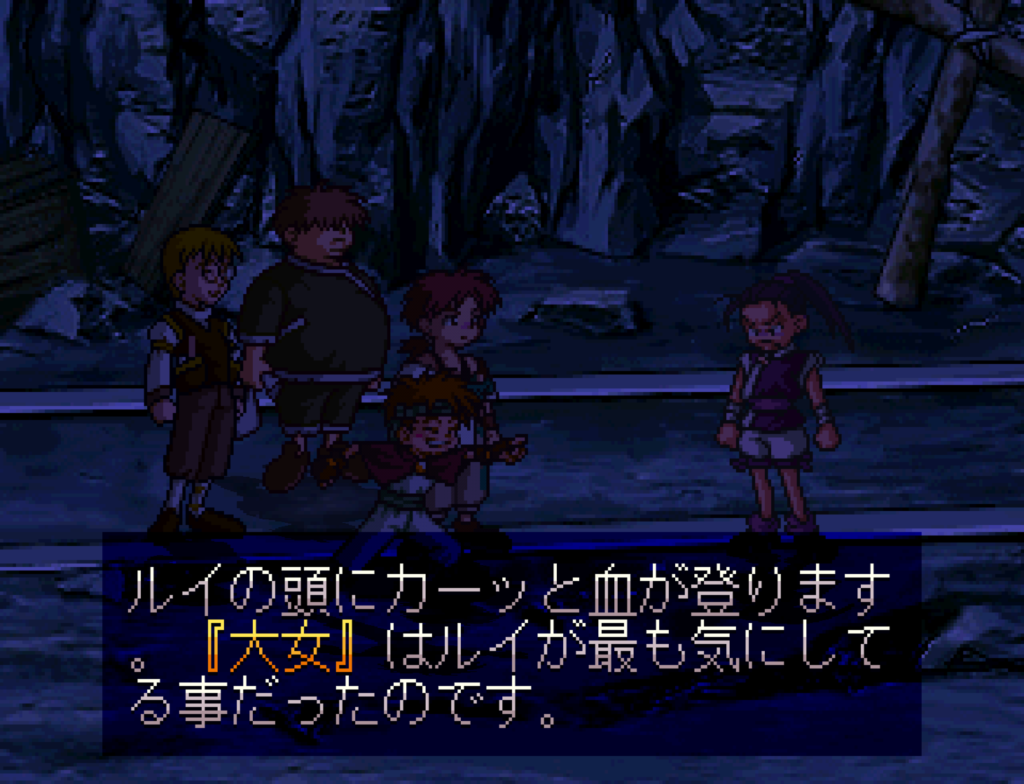
With the help of Eric they take down the robot and rescue Rui. Later when the adults show up, Billy’s father seems to recognize the robot but says nothing.
Chapter 1 – The Legend of the Hidden Treasure
The group decides that for today’s adventure, they will visit a nearby island to explore an abandoned house. But how will they get to the island? They meet Silky on the beach who reminds them that when the tide is down (like today) they can simply walk over there. Silky trails along as they explore the house — and happen upon the pirates!
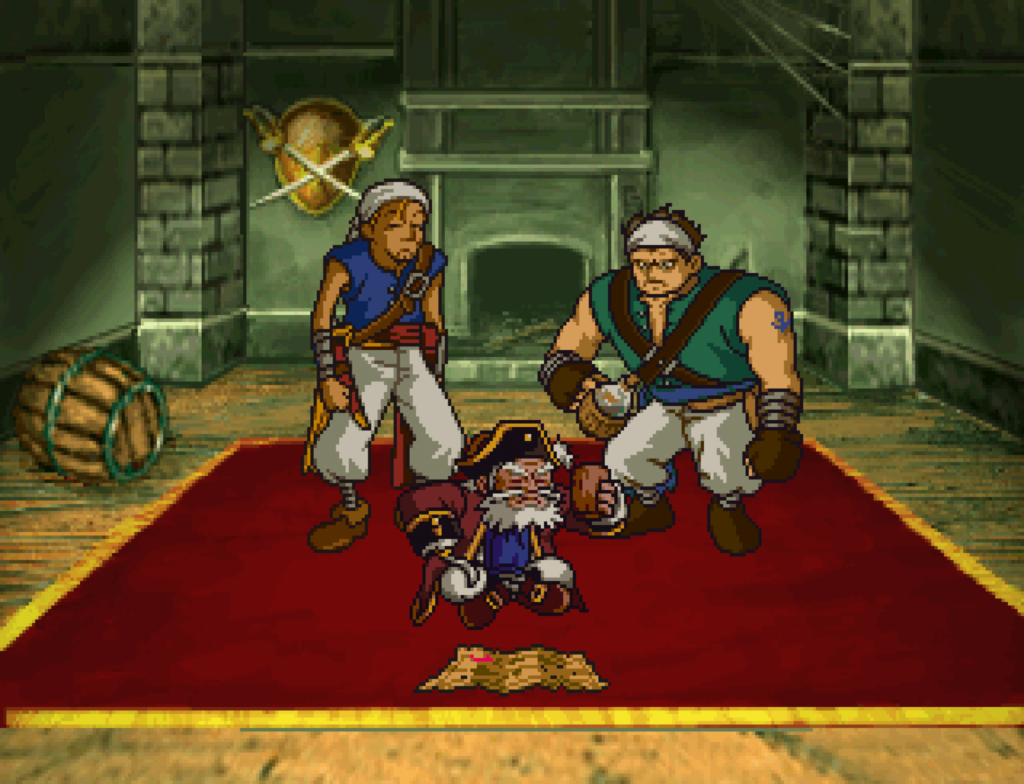
They spy on Captain Gratz and his underlings Henry and Oyster. They’re looking at a map showing the location of six emerald tablets. This makes Silky alarmed, and she insists that they have to steal the map. The other kids are hesitant, but Silky charges in and manages to rip half of the map away. The kids fight grunt pirates on their way out of the house.
The kids escape through the forest and back to the mainland. Silky explains a legend: in olden times the gods and humans lived together, but the gods became birds and fish, and now some of them live in an underwater palace Dilm, where something called Tupshimaty exists, that can grant wishes. They need to keep enough of the emerald tablets from the pirates that they won’t get access.
Chapter 2 – To the Island of Adventure
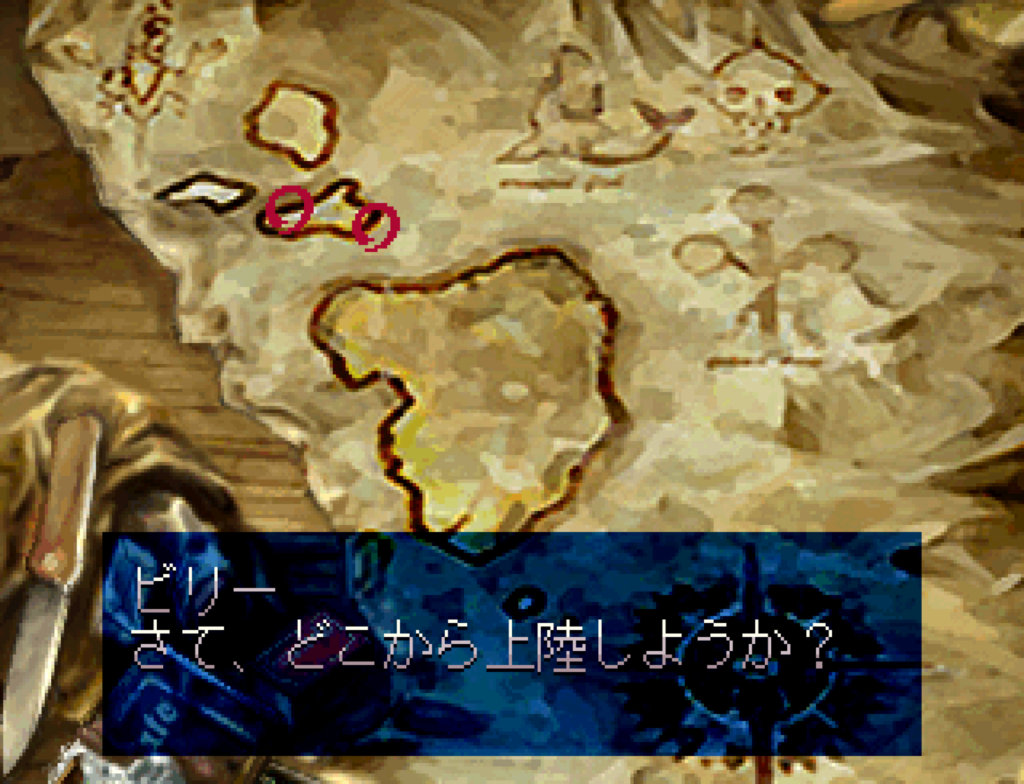
The next day, Billy and his group set out to visit the islands marked on the map (I don’t remember how they get a boat; I forgot to write that down). Jake and Rui come along, but Jake decides this is none of his business and leaves. Meanwhile, the pirates are pissed off. They want the half of the map back. A fourth member named Kars offers to kill the kids, but Gratz turns him down — that goes against his pirate code.
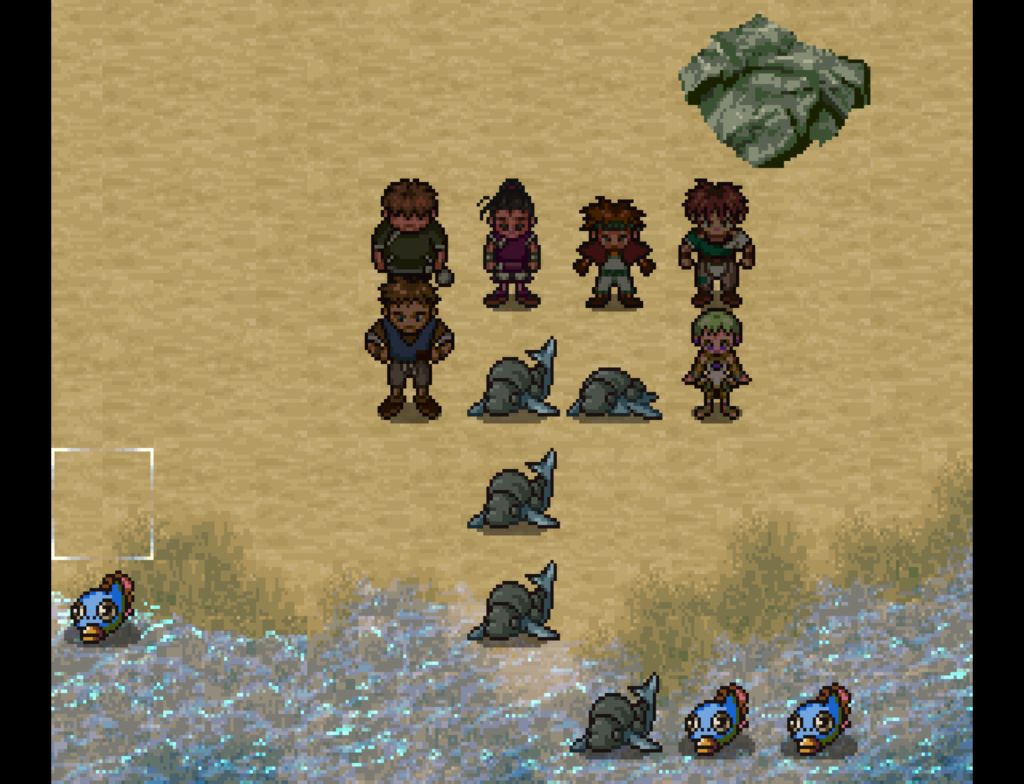
The island segments can be done in any order. In the first one I did, we cut the tablet out of a tree — after everyone else leaves, Silky appears to talk to the tree, and apologizes before healing it. The second one involves beating up armor sharks — the kids feel bad afterwards because the sharks were just protecting their area.
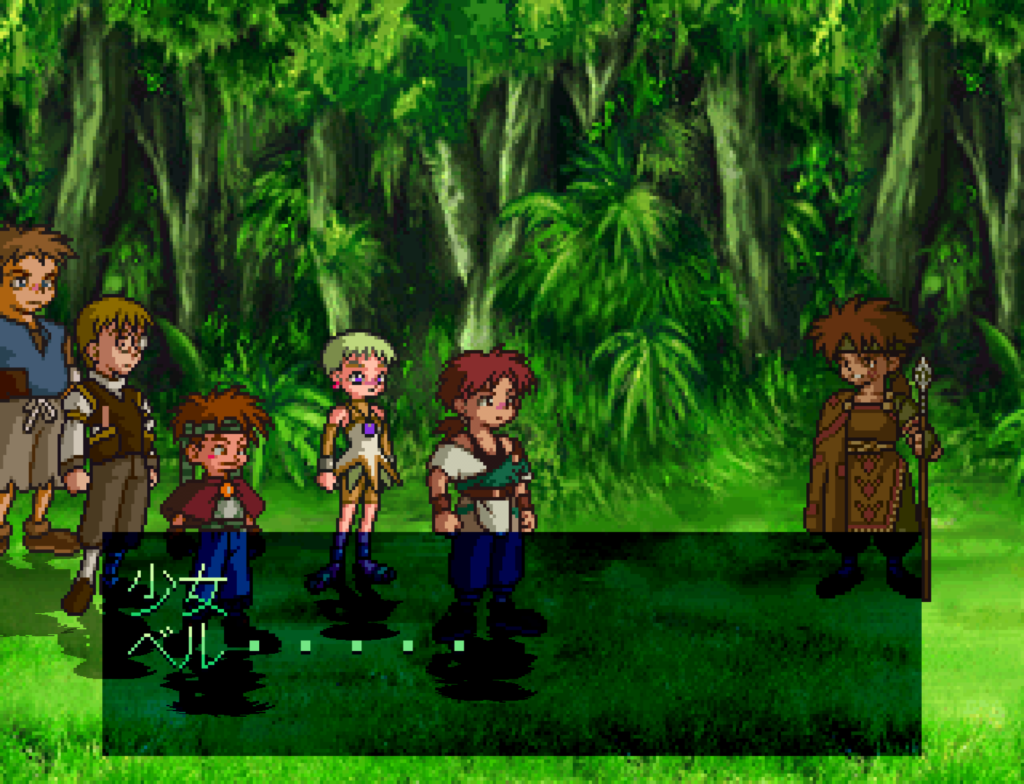
At the next islands, the robots from first chapter are back. A young girl named Bell initially attacks the kids thinking they’re with them.
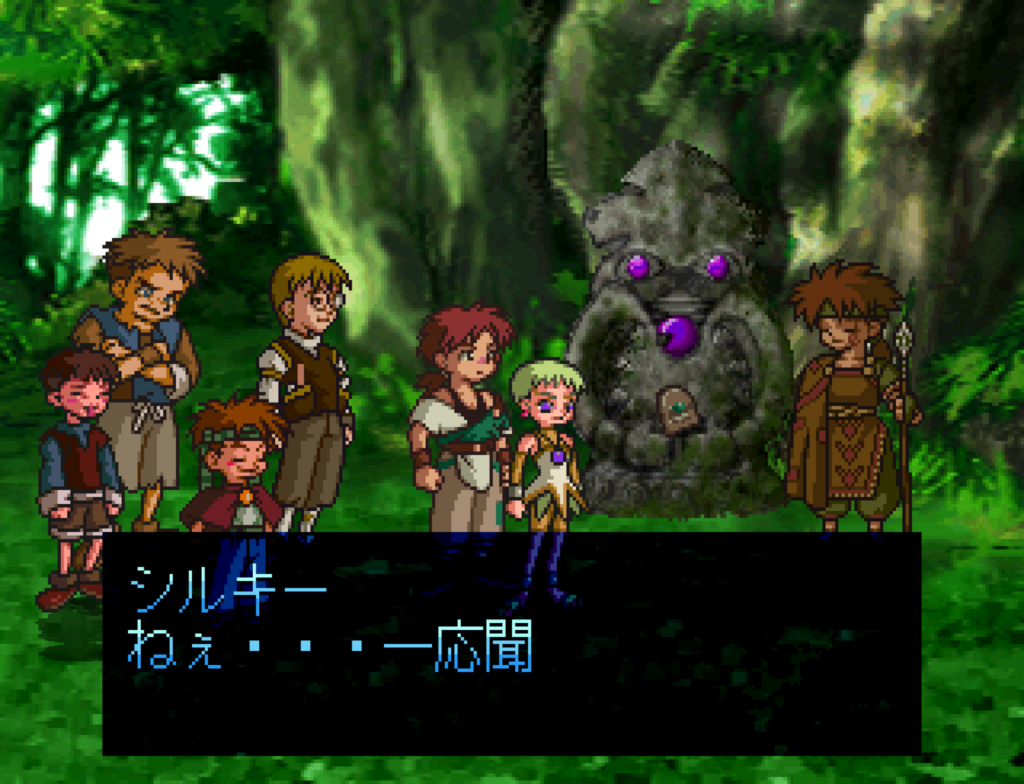
But once the kids drive off the robots, she relents. She was just protecting her “god”, and gives up the emerald tablet. She then disappears, leaving only a skeleton behind…
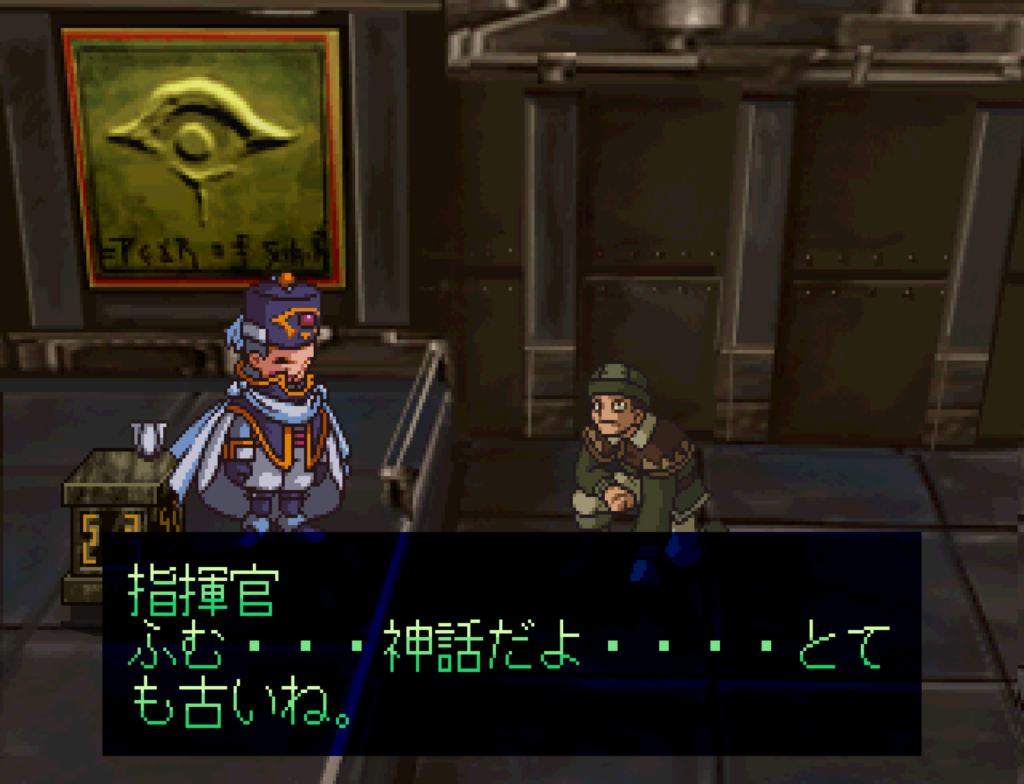
Meanwhile, a little kid named Elrich, who a commander from an Empire, is heading to the island for an as-of-yet unknown reason.
The final emerald tablet on the kids’ map is at the top of a mountain, but the pirates manage to find them and chase them up the mountain. Of course the kids manage to beat the pirates up as usual and get the tablet.
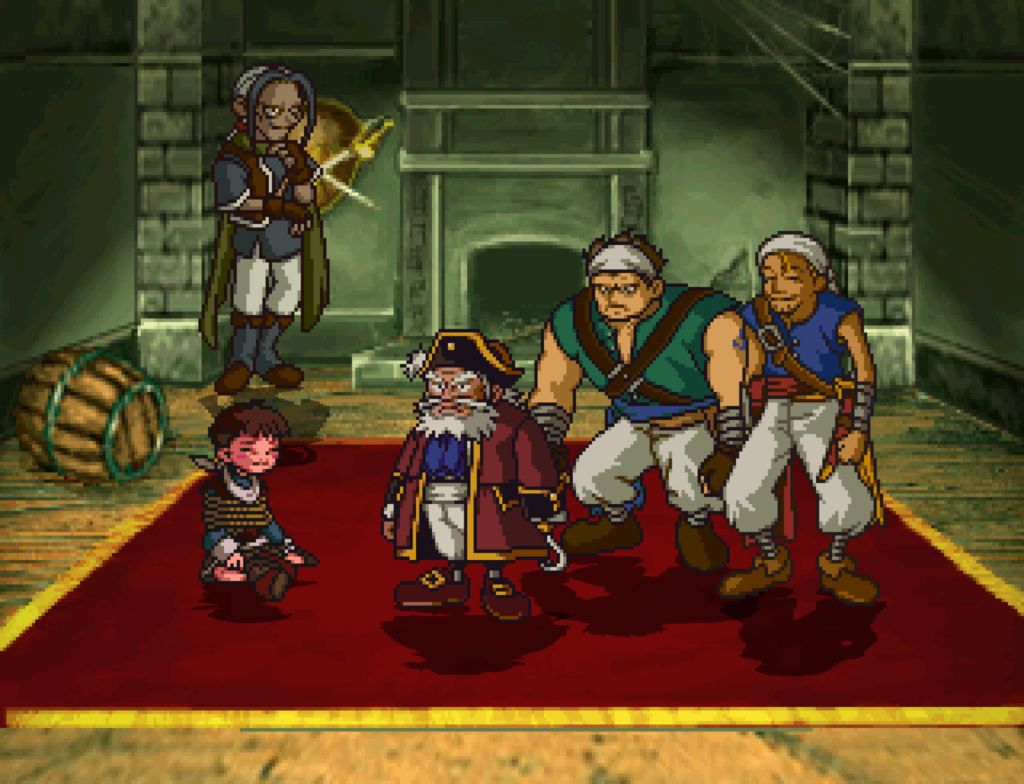
Now the pirates have kidnapped Phillip, a weak, traitorous member of the Sharks (Jack’s gang). With very little prompting he gives up the location of Billy’s secret base, and the pirates go there to get the tablets…of course they lose to the kids, yet again.
Now there is an interlude — Pack’s grandfather, who was once a famous adventurer, is sick. Pack wants to go to the mountain to find a Veronica Flowers — many years ago his grandfather brought some seeds back and planted them, and he thinks that if he can show one of the flowers to his grandfather he’ll feel better. Unfortunately they don’t grow well in this warm climate.
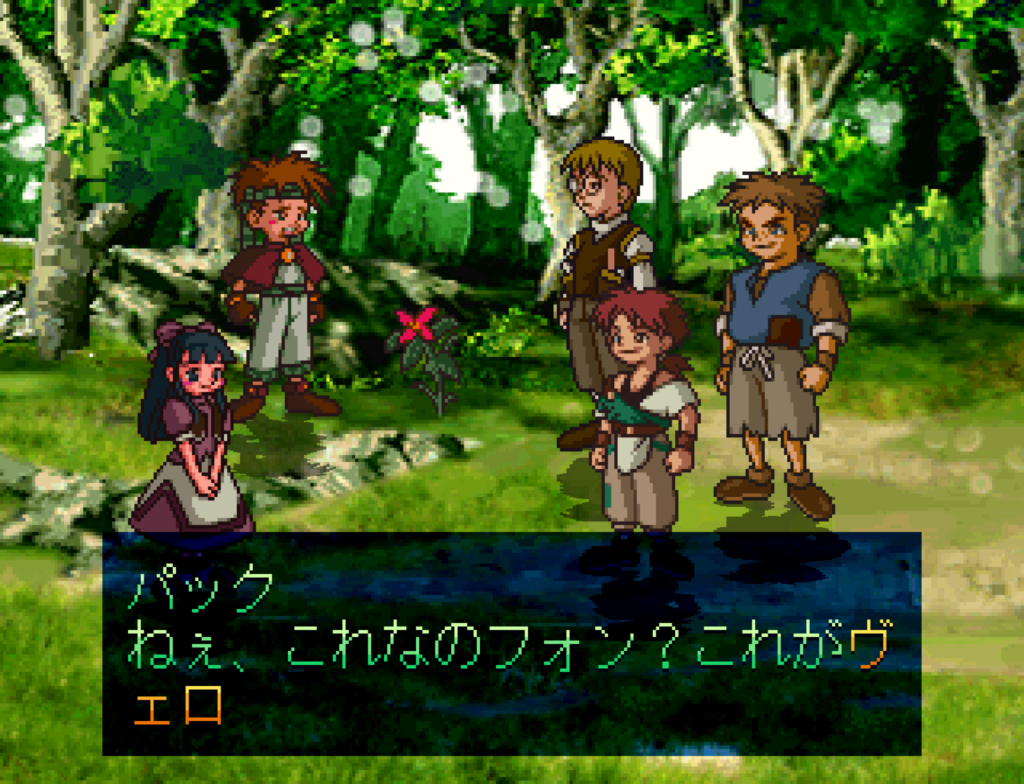
At first they only find one, and Pack can’t bring himself to uproot the only flower remaining from his grandfather’s seeds. But then they find that a whole bunch of them grew elsewhere, and he brings one back.
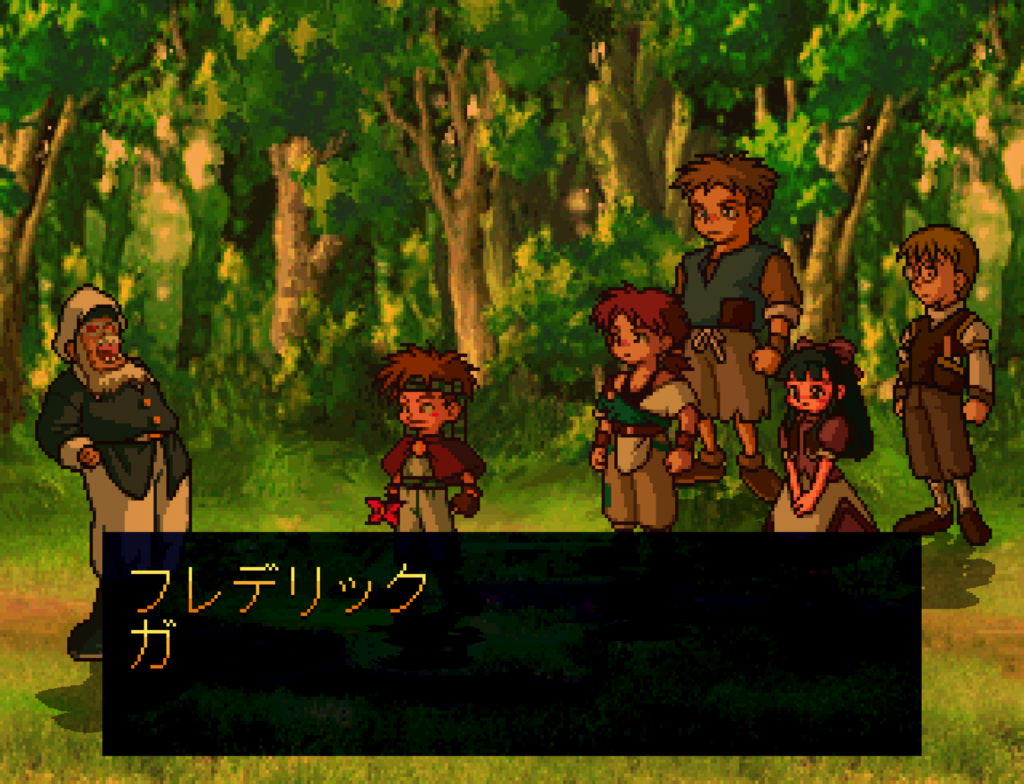
However, on the way back they meed Fredrick (the grandfather) who seems to have totally recovered. The other kids head back to town, and Pack talks to his grandfather. Fredrick says he’s about to go on a long journey with his friends — Pack wants to go too, and Fredrick says that he’ll come back for Pack eventually, when Pack is ready to go. He also tells Pack not to come to the harbor tomorrow, because it’s bad luck to see off a sailor while crying. Pack heads back home. The next day, the grandfather is found dead in his bed, and the funeral occurs, although Pack does not attend.
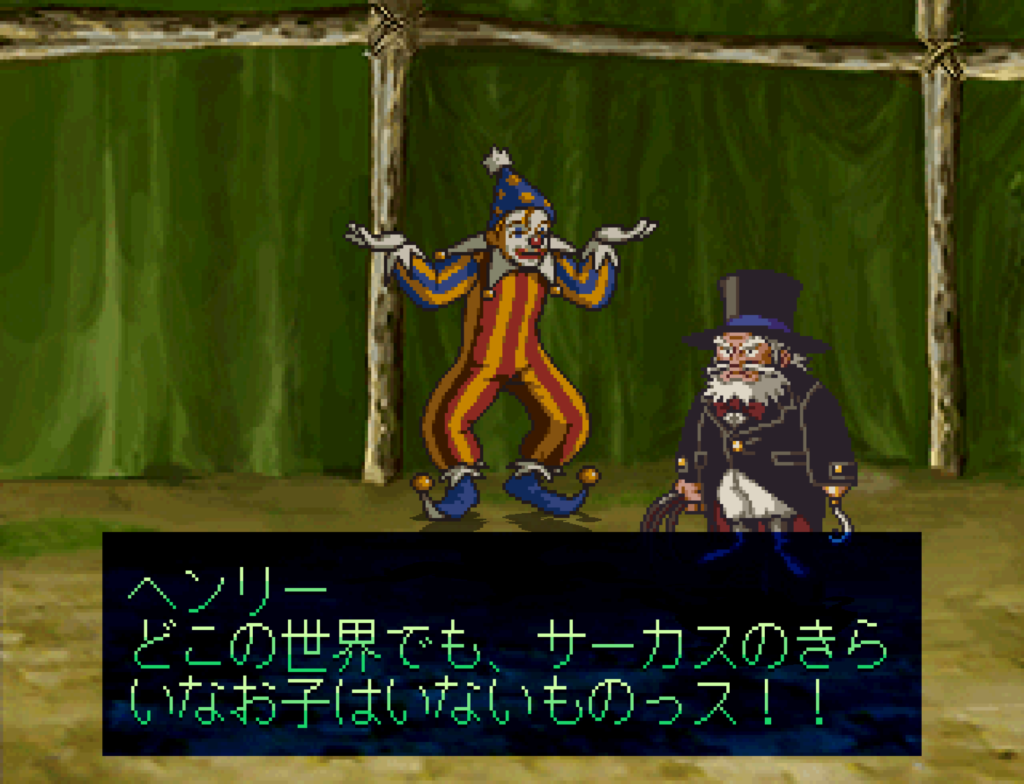
Next the pirates fake a circus to try to trap the kids…it doesn’t really work, though, because Billy and his gang have no idea what a circus is. Eventually they just have to strongarm the kids into the tent and attack them. As usual the kids beat them up, but in the resulting chaos, Silky is captured. Later a letter comes for the kids saying that if they want Silky back, they have to give up the Emerald Tablets they have.
I’m going to stop there so this post doesn’t get too long — I’ll post the other two chapters soon, maybe tomorrow, or Monday at the latest. It’s really a shame that the gameplay was so bad or this would be an all-time classic, I think.
